It seems we can’t find what you’re looking for. Perhaps searching can help.
Sign Up for newsletter!
Subscribe to get the latest eBook!
Hotline






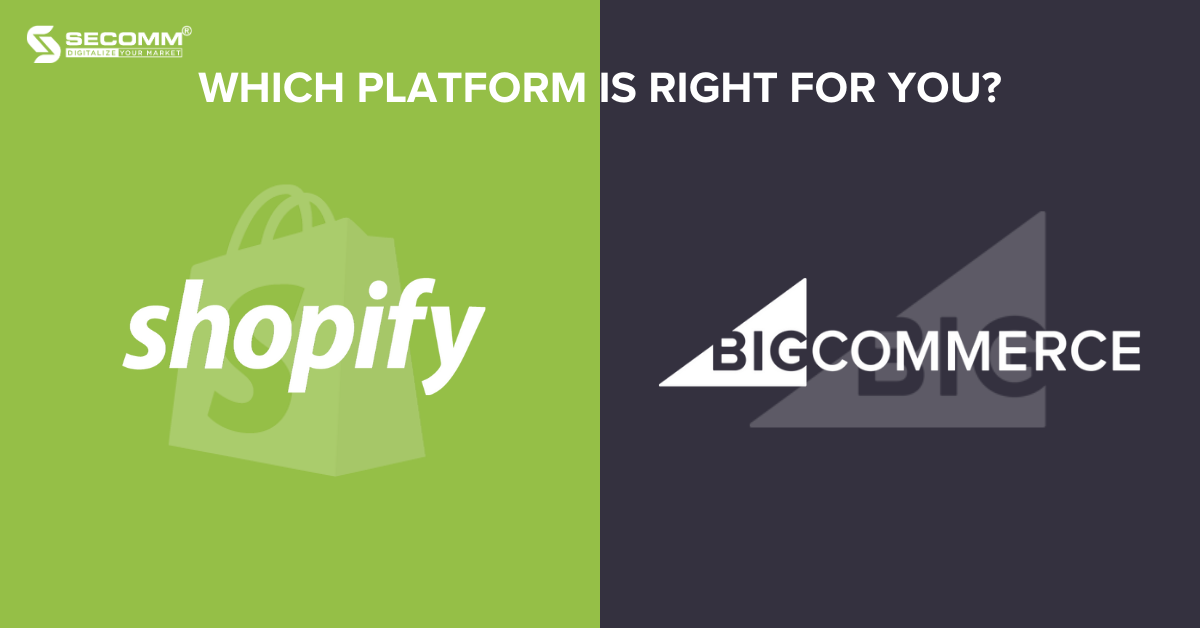
In recent times, SaaS platforms like Shopify and BigCommerce have gained popularity thanks to the growing demand for eCommerce. While BigCommerce currently supports over 45 thousand active online stores globally, Shopify surpasses it with around 4.5 million active websites. Although Shopify and BigCommerce share typical features of SaaS platforms, there are notable differences between the two.
This article will compare the distinctions between Shopify and BigCommerce, providing valuable insights to help you, as a business make informed decisions quickly.
Learn more: Shopify Plus vs BigCommerce Enterprise
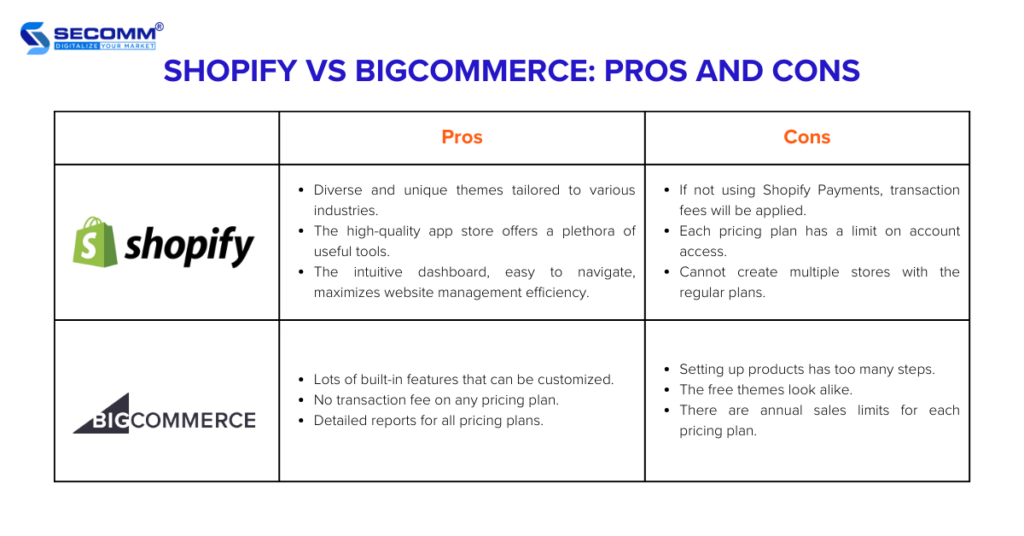
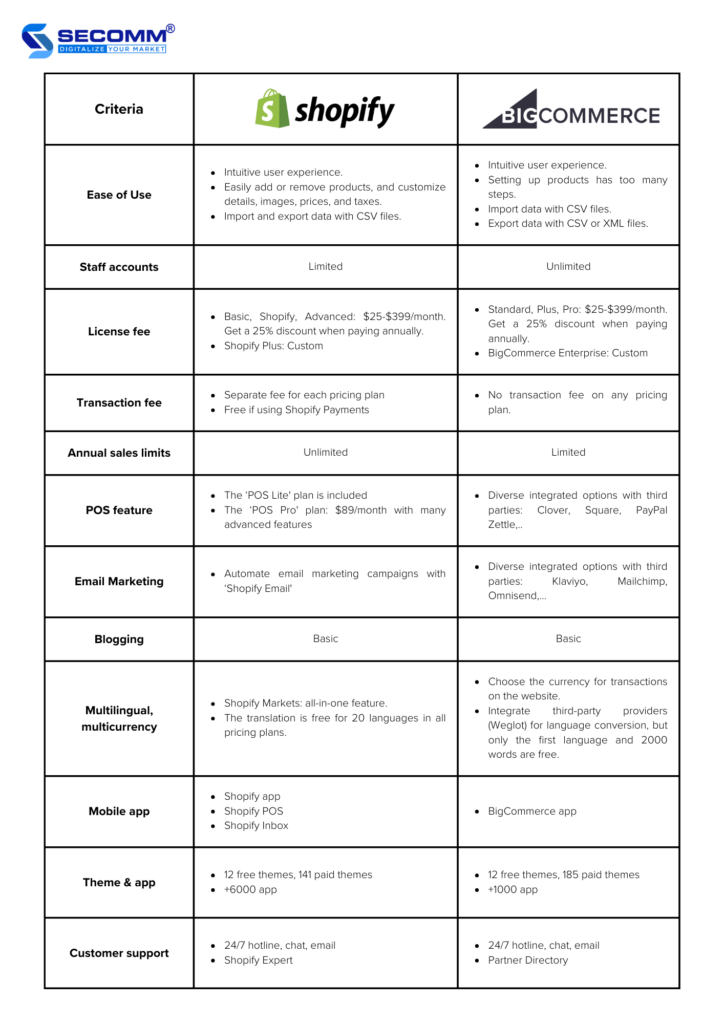
New businesses often find Shopify more user-friendly than BigCommerce when it comes to setup and usage. Adding or removing products, customization, and editing layouts on Shopify are all straightforward tasks.
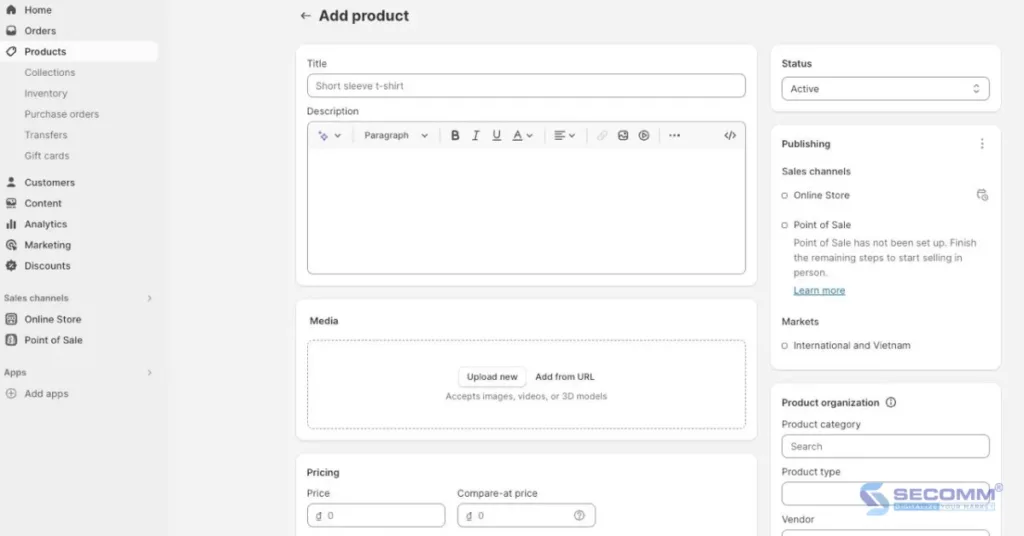
This doesn’t mean that the user experience of BigCommerce is less intuitive than the other. Both platforms are similar, providing drag-and-drop store editors, detailed documentation, and quick support. However, BigCommerce offers many built-in features that are expandable and customizable.
Users, though, may find themselves completing several different steps for each setup task, which can be overwhelming and time-consuming.
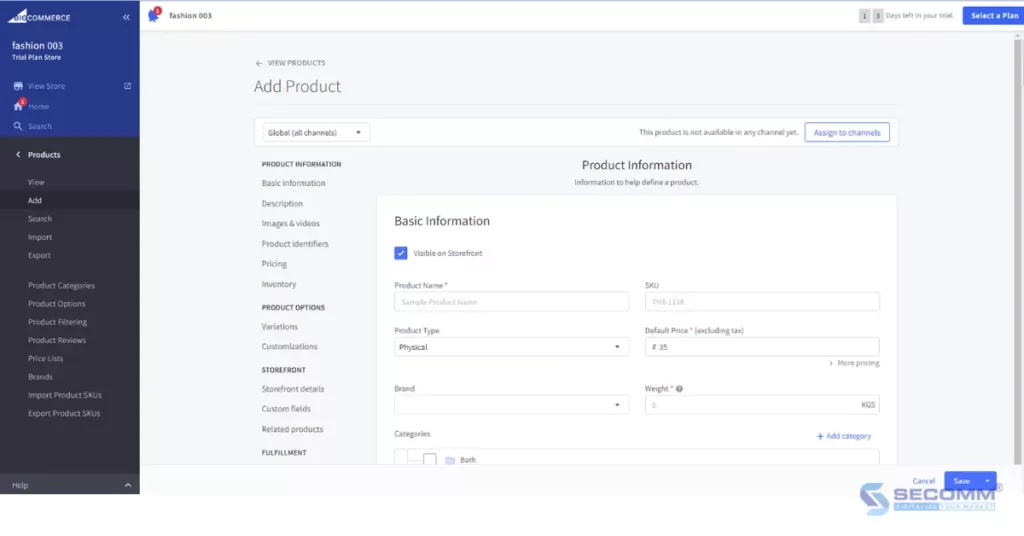
Shopify sets account staff limits for each pricing plan. Specifically, the Basic package allows 2 staff accounts, Shopify allows 5 staff accounts, and Advanced allows 15 staff accounts.
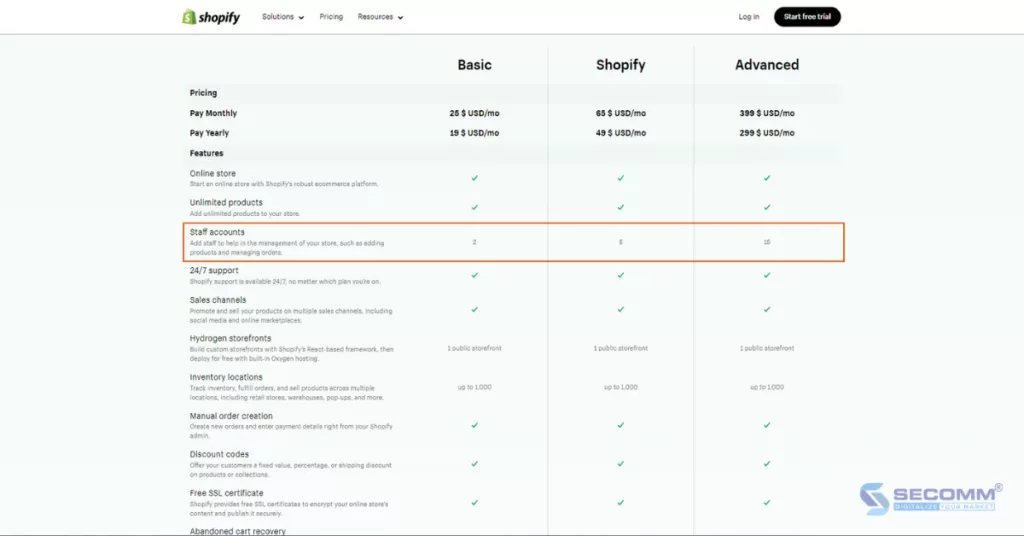
In this regard, BigCommerce has a significant advantage by providing unlimited account access for all solution packages. This flexibility can benefit businesses with many employees needing access to the eCommerce website system.
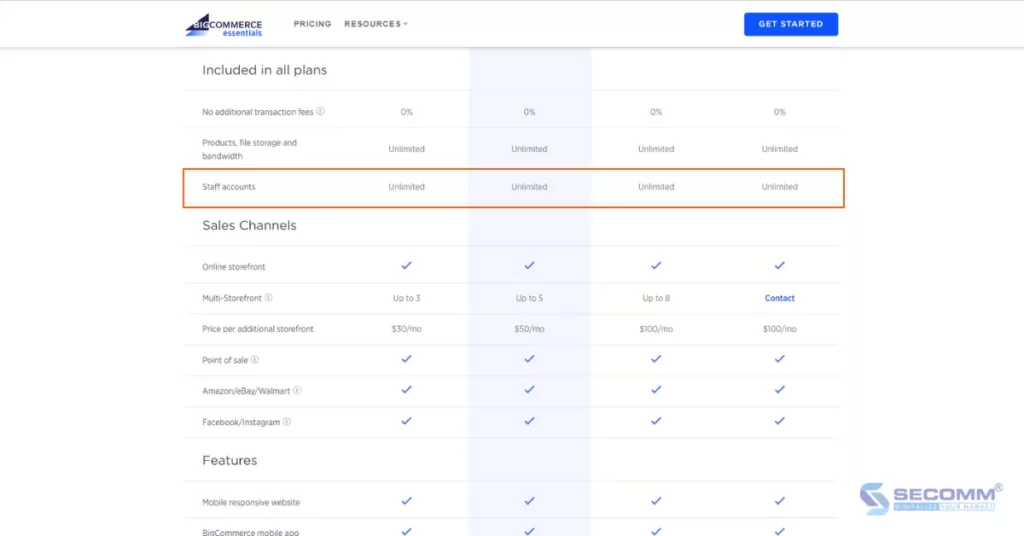
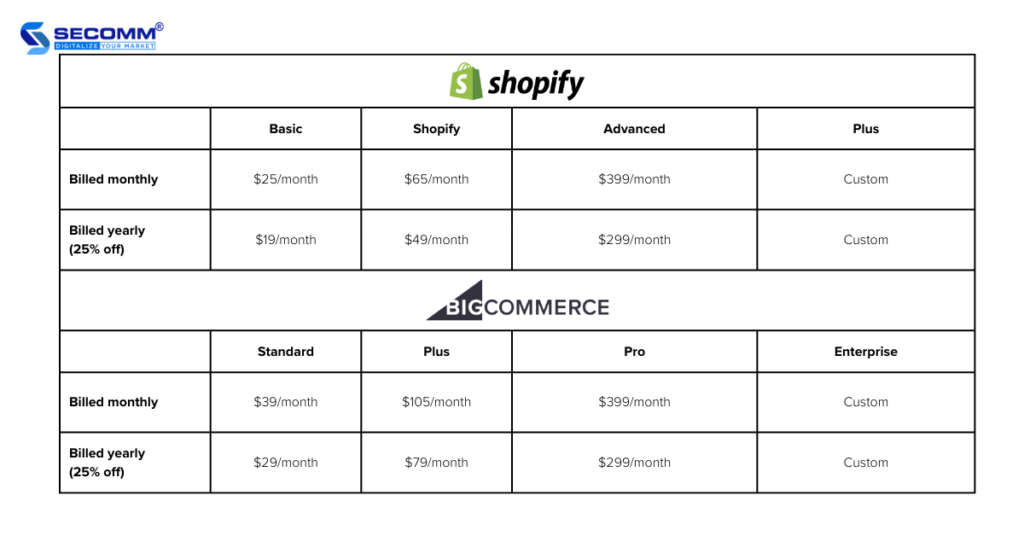
By using BigCommerce pricing plans, you can enjoy a 15-day free trial. The other offers a 3-day free trial for its 3 pricing plans, followed by a payment of only $1 per month for the initial 3 months. This gives you more time to experience the platform at a highly affordable cost.
The transaction fee is a drawback of Shopify. If you opt for third-party payment gateways, you’ll incur a transaction fee of 2%, 1%, and 0.5% for the Basic, Shopify, and Advanced plans, respectively. On the other hand, this fee is waived if you use Shopify Payments. However, Shopify Payments is limited to certain countries, some businesses may not have access. This, in turn, makes BigCommerce more appealing as it doesn’t impose transaction fees on any pricing plan.
BigCommerce sets annual sales limits to $50k for the ‘Standard’ plan, $180k for ‘Plus,’ and $400k for ‘Pro’, while the ‘Enterprise’ plan can be negotiated. To exceed these limits, you must upgrade to a higher pricing plan.
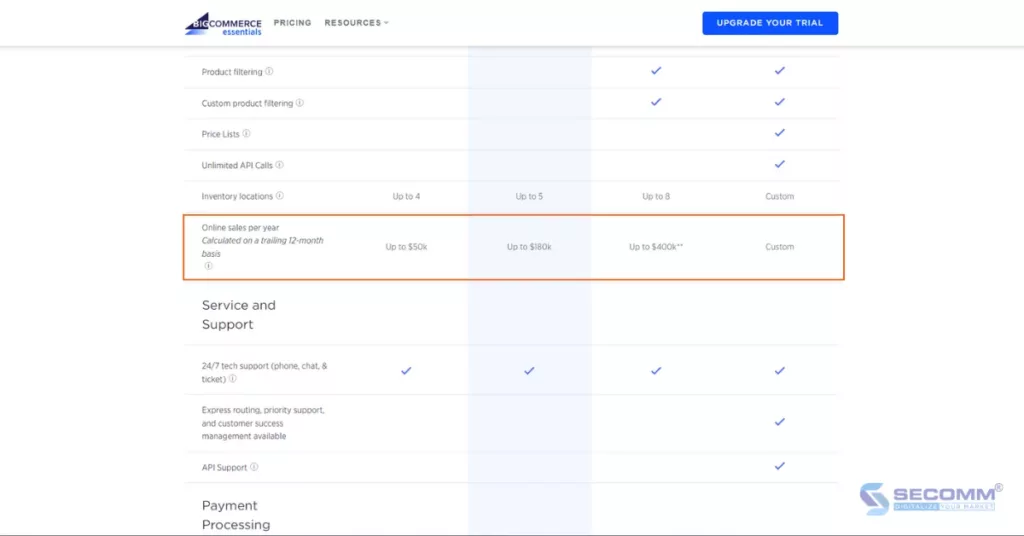
However, your business may not need the features offered in higher-tier plans and may be hesitant to pay additional fees for an upgrade. Therefore, the sales volume limit on the BigCommerce platform is a crucial factor that requires thoughtful consideration. In contrast, Shopify doesn’t impose any annual sales limits on any of its pricing plans.
The POS feature isn’t limited to eCommerce transactions but also extends to traditional brick-and-mortar stores. Both BigCommerce and Shopify allow you to implement POS on mobile devices (smartphones, tablets) and other hardware (cash registers, barcode scanners).
To use POS with BigCommerce, you need to integrate with software like Clover, Vend, Square, PayPal Zettle, and others. Hence, if you are currently using a third-party POS system may appreciate the flexibility offered by BigCommerce.
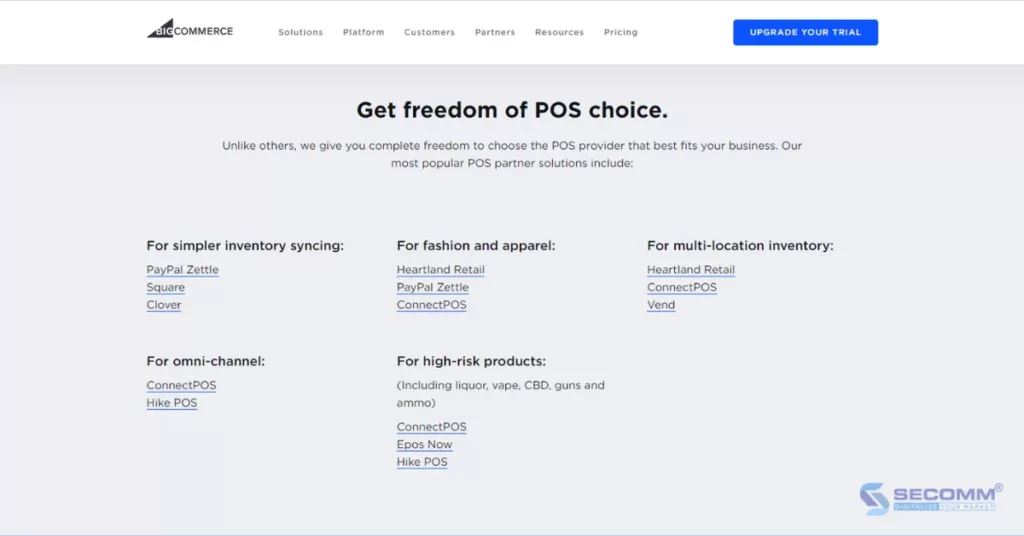
Conversely, Shopify offers built-in POS features, starting with the ‘POS Lite’ plan within its pricing plans. However, to access more advanced POS features, you can opt for the ‘POS Pro’ plan at $89 per month per location, added to the chosen pricing plan. If you choose the annual payment option, the ‘POS Pro’ plan is only $79 per month per location.
Shopify POS solution caters to diverse needs, including single-store transactions, multi-store transactions, event transactions, online and offline sales, as well as omnichannel operations.
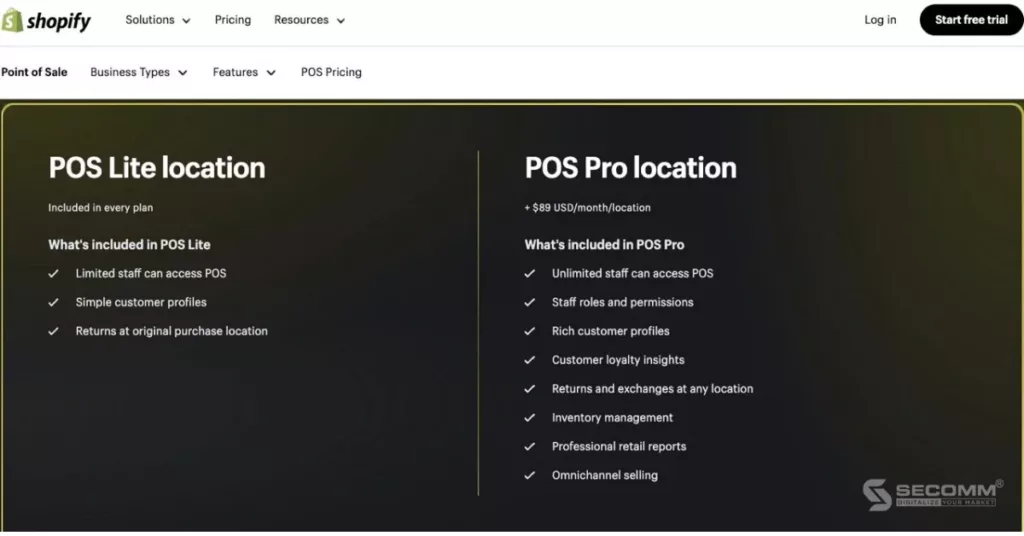
In eCommerce, email marketing is crucial when it comes to customer attraction and substantial sales growth. Hence, it’s a feature you should prioritize when selecting an eCommerce platform.
Beyond the Shopify POS solution, Shopify offers you the built-in Shopify Email feature, designed for Email Marketing campaigns and automating email processes (Welcome Email, Winback Email, Upsell Email).
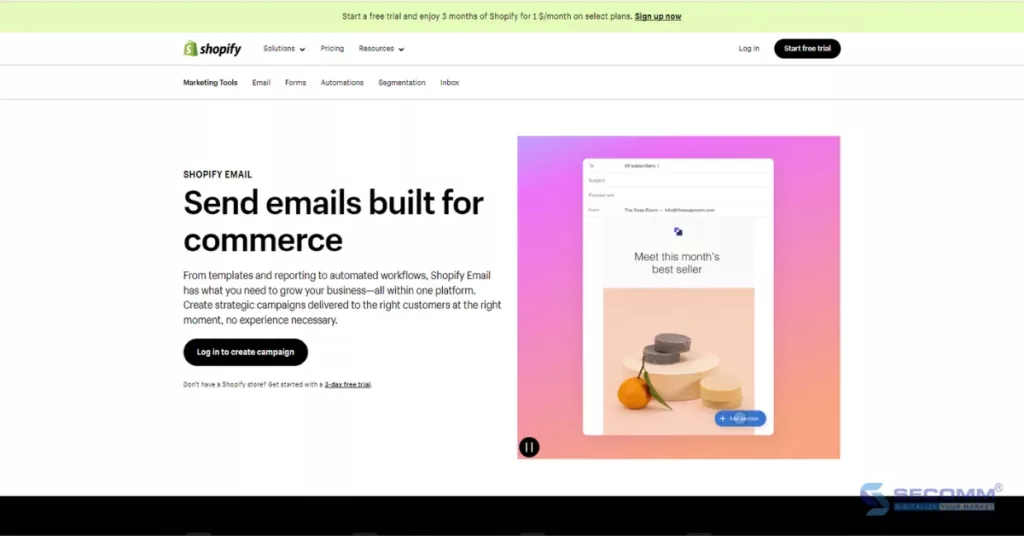
Meanwhile, for Email Marketing on BigCommerce, you need to integrate with third-party service providers like Klaviyo, MailChimp, Omnisend, and others.
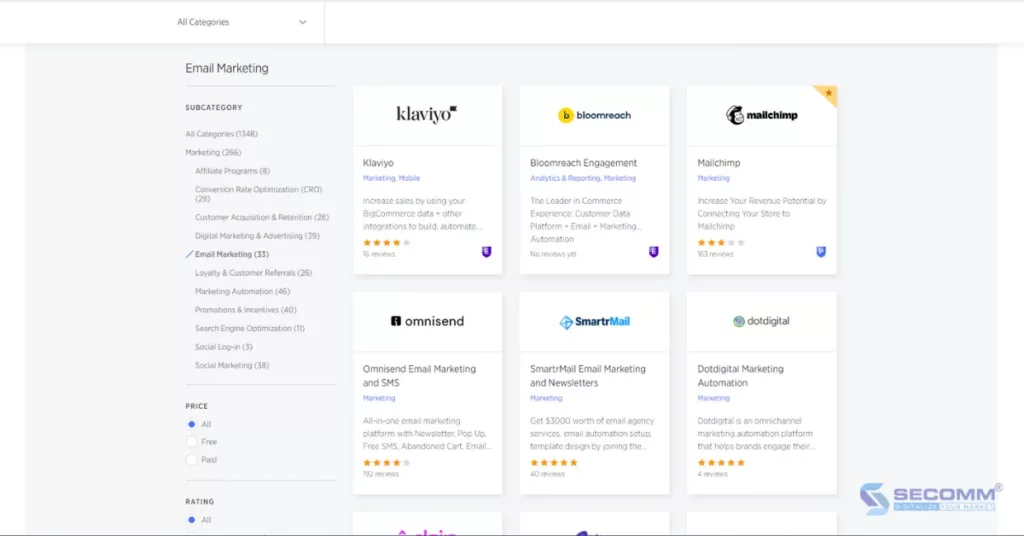
When you utilize blogging effectively, it can be one of the best sources to attract organic traffic. Both BigCommerce and Shopify come with built-in blogging features at a basic level, offering attractive templates that help you create SEO-optimized blog content to draw in potential customers. Moreover, you can seamlessly integrate with WordPress or other CMS platforms for more advanced blogging features
Cross-border selling is currently a common goal for many eCommerce businesses. Fortunately, both Shopify and BigCommerce provide features and tools to help businesses expand into the global market
Shopify Markets, introduced in 2021, is a feature that allows you to select the specific markets you want to sell in. It’s an all-in-one feature that helps you centrally manage multiple local domains, languages, currencies, and payment gateways.
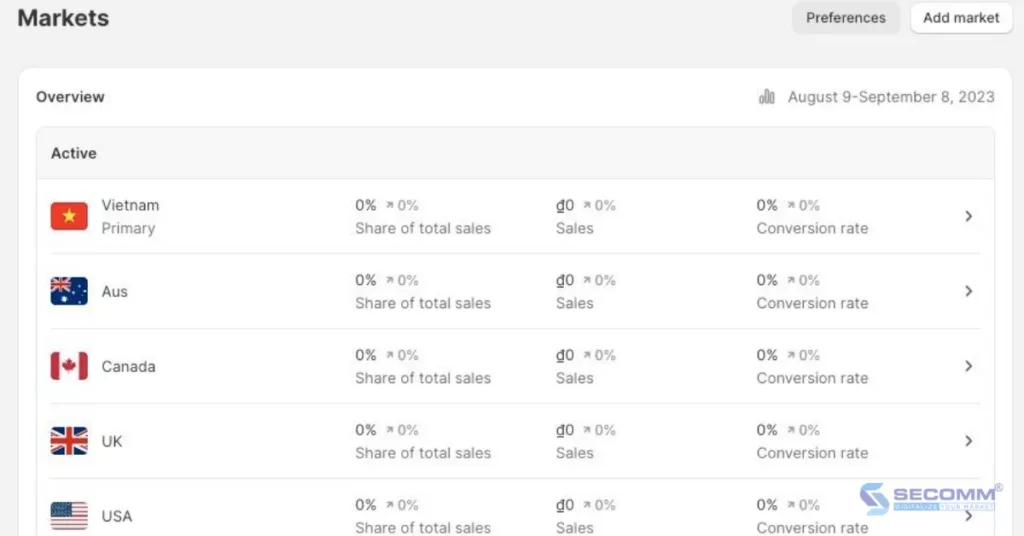
Plus, Shopify Markets utilizes the IP address of visitors outside the default ‘market’ that you previously defined to prompt them to select a location and the appropriate currency.
On the other hand, with BigCommerce, you can choose the currency for transactions on your eCommerce website instead of opting for a ‘market’ like Shopify. Additionally, the currency is automatically converted based on the customer’s IP address.
While language conversion capabilities are built into Shopify when the Shopify Markets feature is enabled, for BigCommerce websites, you’ll need to integrate with a third-party service to achieve the same, such as Weglot, which offers free conversion for 1 language and 2000 words. In contrast, Shopify provides free conversion for 20 languages across all pricing plans.
While BigCommerce has only one app to help you manage sales, interact with customers, and access basic reports, Shopify you up to 3 apps to improve efficiency in eCommerce operations.
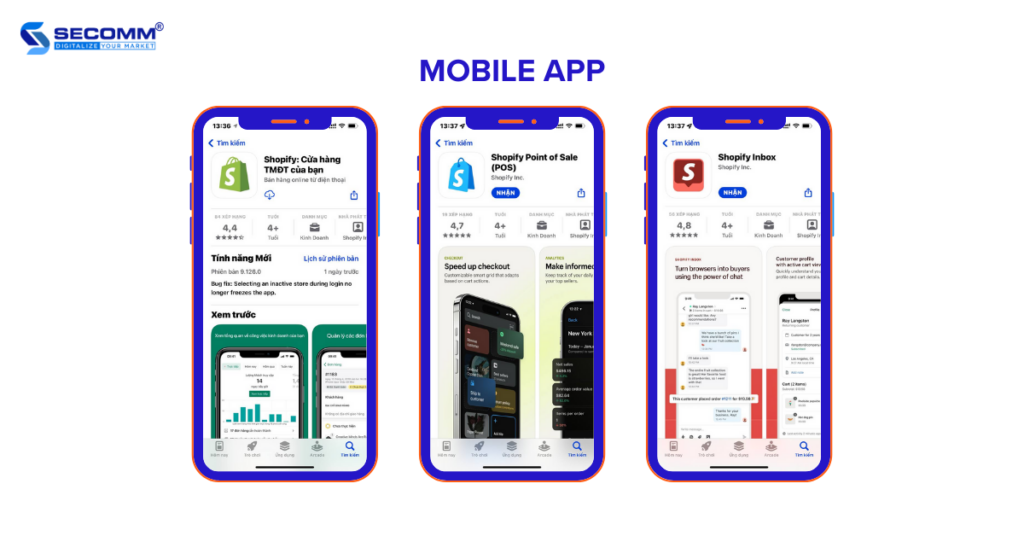
Both BigCommerce and Shopify offer you a variety of free and paid themes. For BigCommerce, the platform provides 12 free themes, but in reality, there are around 5-6 distinct free themes as the layouts are quite similar. As for paid themes, BigCommerce has approximately 185 themes ranging from $150 to $400 per theme.
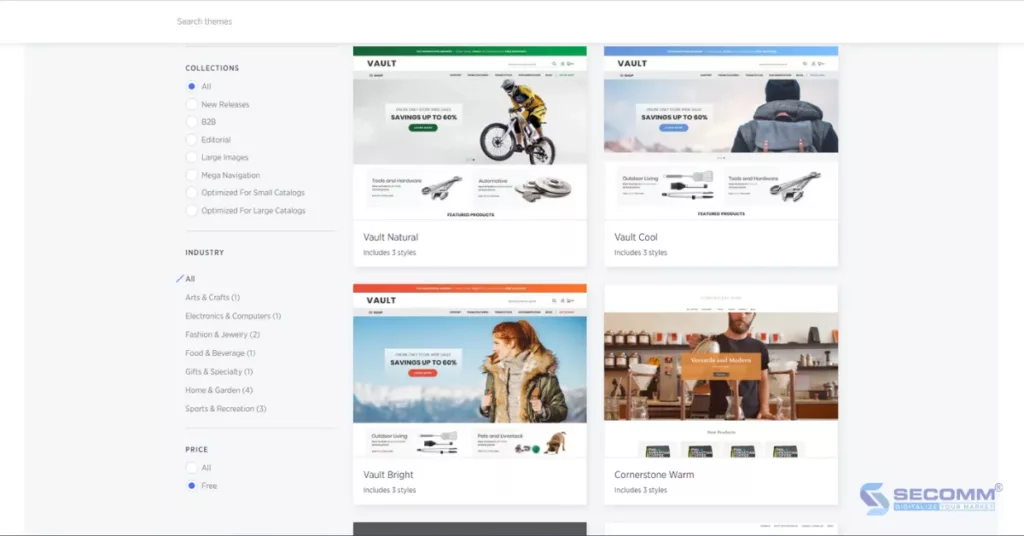
On Shopify, the platform offers 12 free themes and 141 paid themes with prices ranging from $170 to $380 per theme. Both Shopify and BigCommerce provide users with drag-and-drop theme editors to modify layouts, colors, fonts, and text sizes and add/remove elements and widgets.
However, Shopify’s themes, both free and paid, are widely favored for their modern and contemporary styles. Additionally, Shopify offers a diverse selection of fonts for you to choose from. In contrast, BigCommerce has around 8 font options.
Alongside their built-in features, Shopify and BigCommerce both offer extensive app stores to help you optimize your eCommerce activities. Both app stores offer free versions of apps, but certain features may be limited. To access the full functionality, you’ll need to subscribe to the paid versions, which often involve monthly fees. The number of apps available on Shopify and BigCommerce differs significantly, with Shopify boasting over 6000 apps, while BigCommerce has over 1000.
In the process of deploying an eCommerce website, both BigCommerce and Shopify offer 24/7 support through hotlines, chat, and email. Plus, if you seek advice and support in addressing specialized issues related to technology, design, and marketing, BigCommerce provides Partner Directory services, while Shopify offers Shopify Experts.
Above are the comparisons between Shopify and BigCommerce. However, it’s challenging to determine which platform is the best in 2023 for developing an eCommerce website. The choice will depend on your specific needs and wants.
With years of experience advising and collaborating with numerous businesses both domestically and internationally on implementing eCommerce websites on both Shopify and BigCommerce, SECOMM has gathered valuable insights to help your business streamline your eCommerce development process, optimize your website performance, and swiftly generate conversions.
Contact SECOMM today or call directly at the hotline 028 7108 9908 for free and detailed consultations.
 2
2
 9,871
9,871
 0
0
 1
1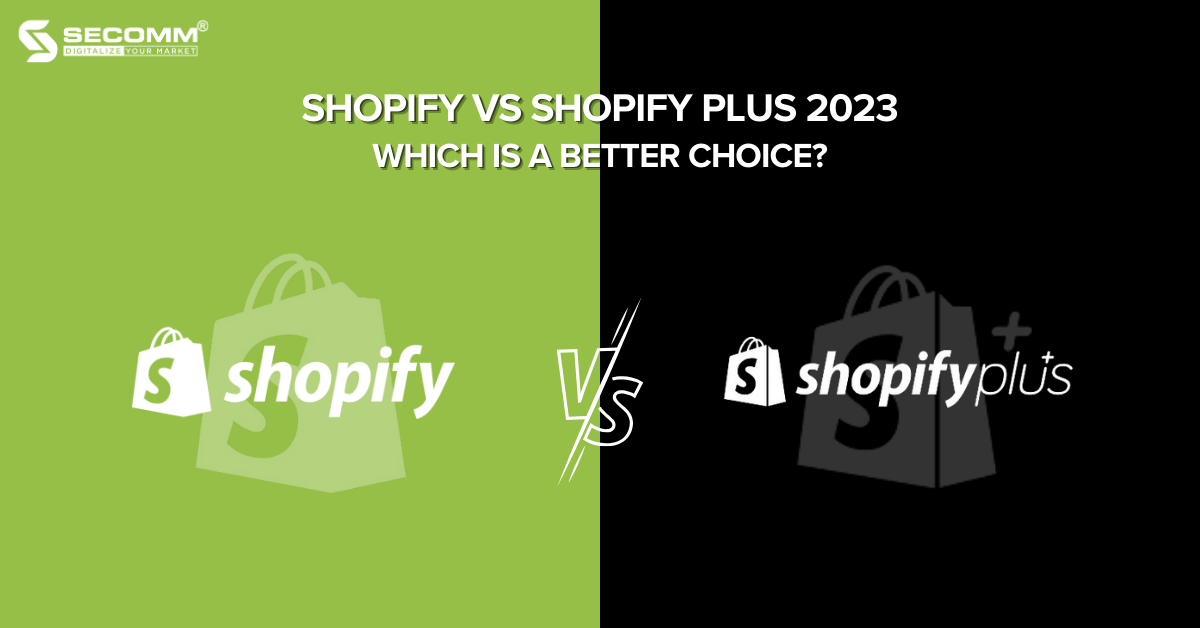
Shopify and Shopify Plus are two leading eCommerce platforms globally, used by millions of businesses to deploy eCommerce websites. The Shopify platform is designed for small and medium-sized enterprises, providing basic, user-friendly features for building and managing eCommerce websites. According to Builtwith, over 4 million active Shopify stores are currently worldwide.
On the other hand, Shopify Plus is specifically crafted for large-scale enterprises, offering advanced features, customization options, and flexible scalability. Builtwith statistics indicate that there are over 44 thousand active Shopify Plus websites globally.
What are the differences between Shopify and Shopify Plus? Which platform should you choose to build your eCommerce websites? This article will focus on clarifying the differences between Shopify and Shopify Plus in three aspects: cost, features, and support capabilities, to help you choose the most suitable platform for your needs and goals.
The first distinction and crucial criterion to consider between Shopify and Shopify Plus are the license fees and transaction fees. Shopify and Shopify Plus offer different solution packages with varying pricing to suit businesses with different budgets and scales.
Shopify offers three main pricing plans: Basic, Shopify, and Advanced, priced at $25, $65, and $399 per month, respectively. Also, Shopify has a special solution package called Shopify Starter at $5/month, enabling you to sell on social media and chat apps.
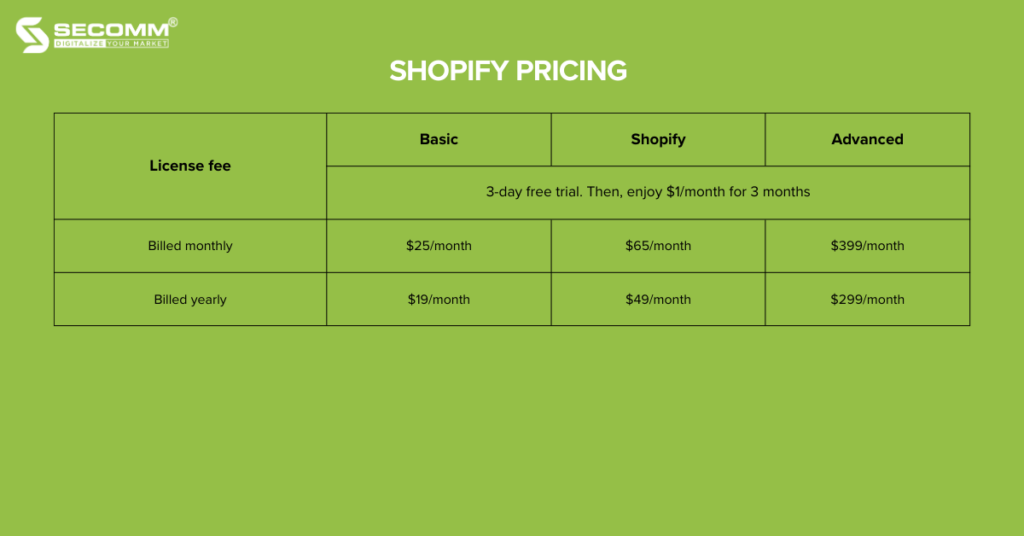
*Note: The mentioned fees apply to the Vietnamese market, and platform license fees may vary depending on the region or country.
Beyond the license fees, you also need to consider the transaction fee when using different payment methods. Shopify offers its payment method called Shopify Payments, allowing you to effortlessly accept all major payment methods on your eCommerce website.
If using Shopify Payments, you don’t have to pay any transaction fee to Shopify.
On the other hand, If you don’t use Shopify Payments and select one of many third-party payment service providers supported by Shopify, you’ll pay transaction fees of 2%, 1%, and 0,5% for the Basic, Shopify, and Advanced plans, respectively.
Since Shopify Plus is designed for large businesses, the pricing structure for the Shopify Plus package is variable and depends on the individual deployment requirements and revenue of each business. According to Shopify, the initial cost for using Shopify Plus is $2,000/month, with subsequent increases based on monthly revenue.
Specifically, when the revenue of a Shopify Plus store reaches $800,000/month, the platform will apply a charge of 0.25% of the monthly revenue. It’s worth noting that the fee will not exceed $40,000/month and $480,000/year.
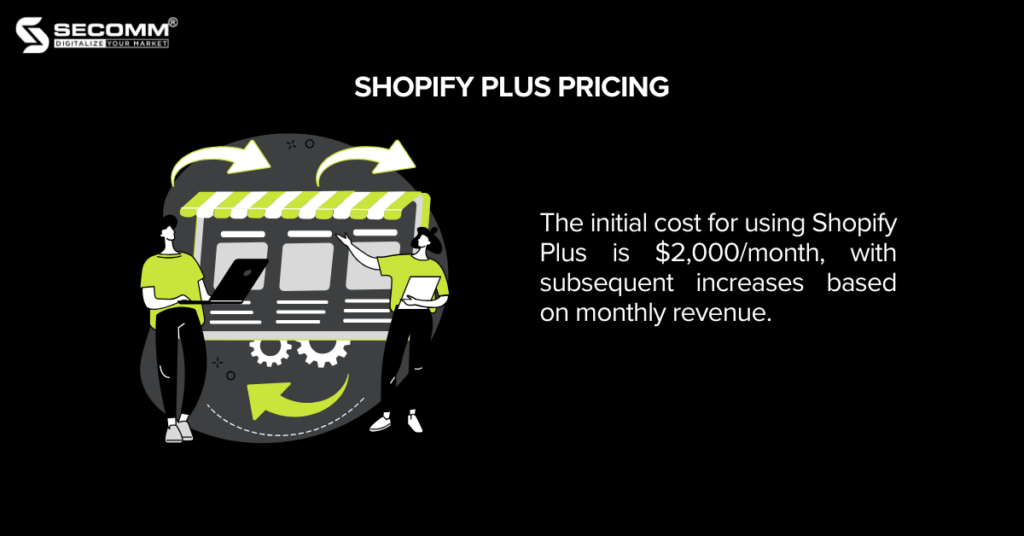
Similar to the Shopify pricing plans, Shopify Plus supports both Shopify Payments and third-party payment service providers. However, the transaction fees associated with Shopify Plus are lower compared to regular Shopify plans. If you don’t use Shopify Payments, you’ll incur a transaction fee of 0.15% on each transaction.
When it comes to features, Shopify Plus excels by providing a range of advanced features for you to customize your eCommerce websites, aiming to deliver a unique experience for customers.
Related Reading: 6 key Shopify Plus features
Most Shopify businesses typically utilize either the available free or paid themes on Shopify, encountering several limitations when customizing the checkout or cart pages. However, with the implementation of Shopify Plus, you can leverage Shopify Scripts to tailor small code segments, enabling the creation of a personalized shopping experience for customers at the cart and checkout pages.
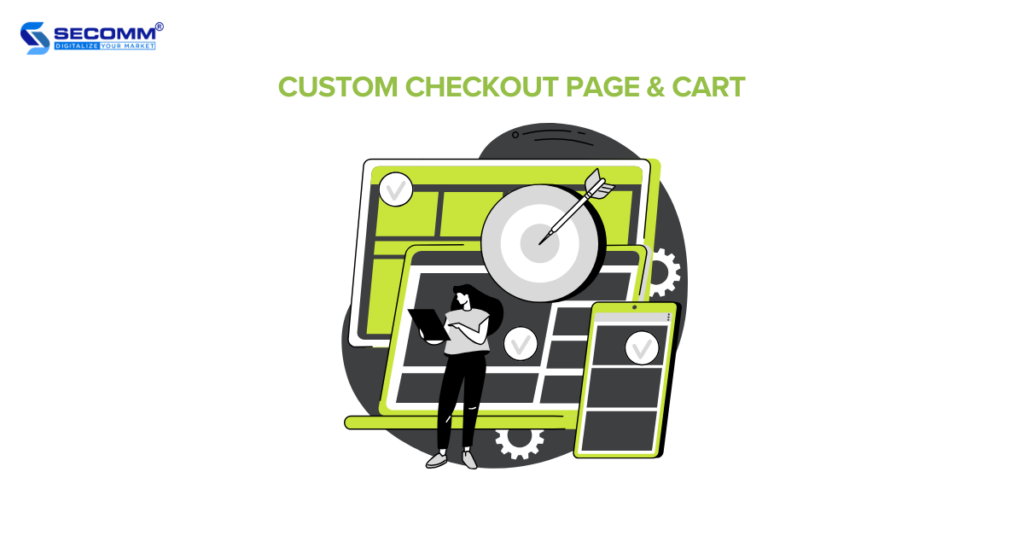
The Shopify pricing plans provide a set of built features for businesses to automate eCommerce and marketing operations. On the other hand, with the deployment of Shopify Plus, businesses can utilize specialized tools to automate eCommerce processes, such as:
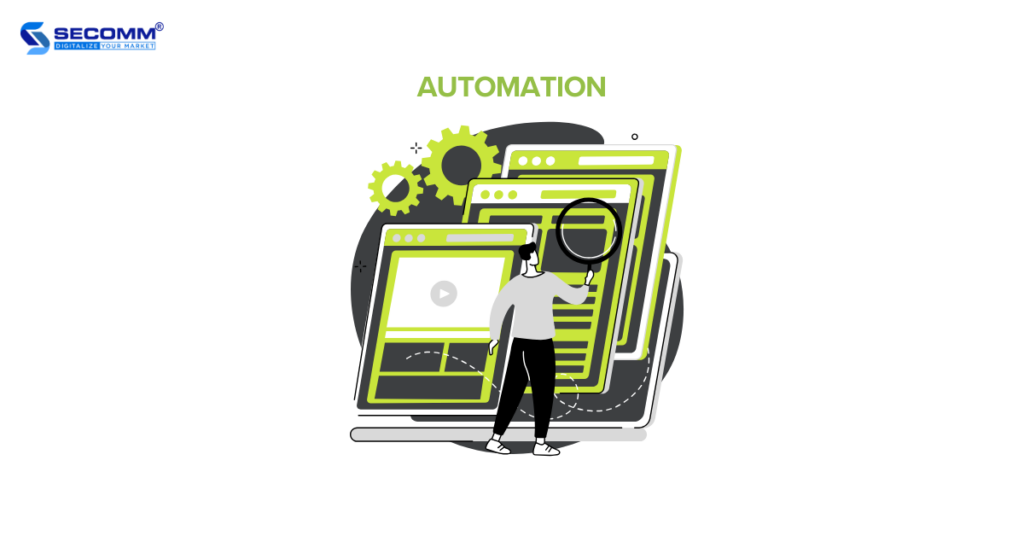
For all Shopify businesses, the Shopify POS feature is included in the standard service package known as POS Lite, but it has limitations in terms of features and POS usage locations. To unlock more advanced features and extend the POS capabilities, Shopify businesses need to upgrade to the POS Pro package, priced at $89 per month per location.
On the other hand, Shopify Plus businesses enjoy free access to POS Pro for their initial 20 locations. This implies that businesses implementing Shopify Plus can leverage advanced POS features, including BOPIS deployment, unlimited user accounts, omnichannel selling, inventory management, and more.
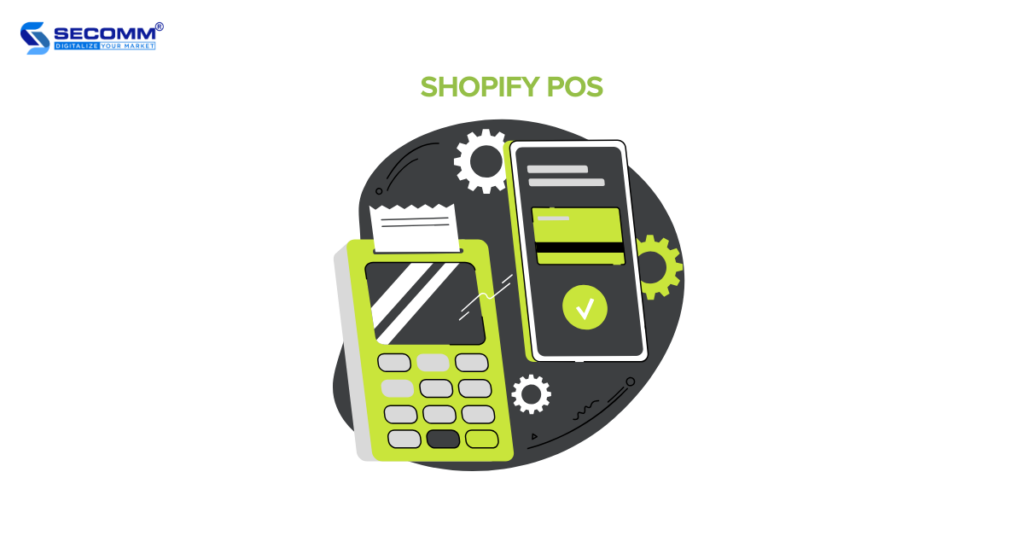
This feature is specifically designed for Shopify Plus businesses, facilitating B2B transactions directly through the eCommerce website without reliance on third-party apps or alternative solutions. You can set up catalogs, payment terms, and company profiles, and customize prices specifically for B2B customers.
This provides the flexibility to develop a website that serves B2B and B2C customers or craft a specialized platform dedicated to B2B clients.
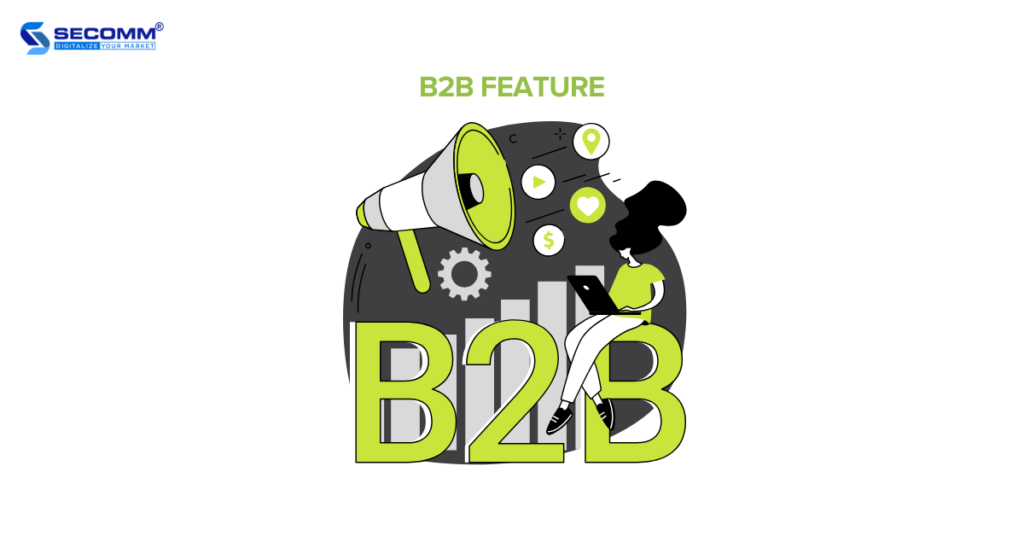
The wholesale feature is specifically designed for Shopify Plus merchants. This feature allows you to customize the wholesale website interface differently from the regular eCommerce site, adjust pricing, and establish a distinct ordering process specifically for wholesale customers. You can also choose to showcase products intended for wholesale transactions exclusively on the Shopify Plus wholesale website.
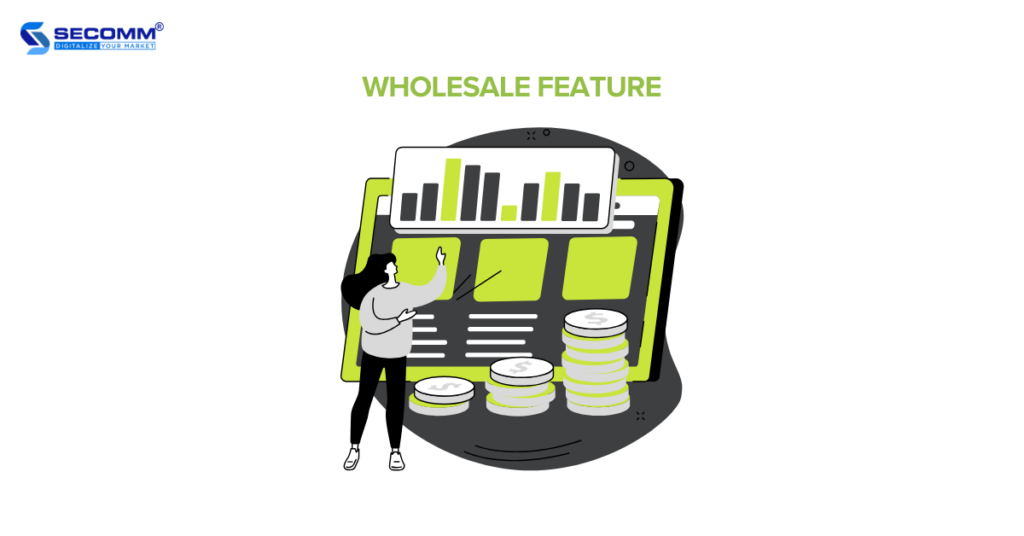
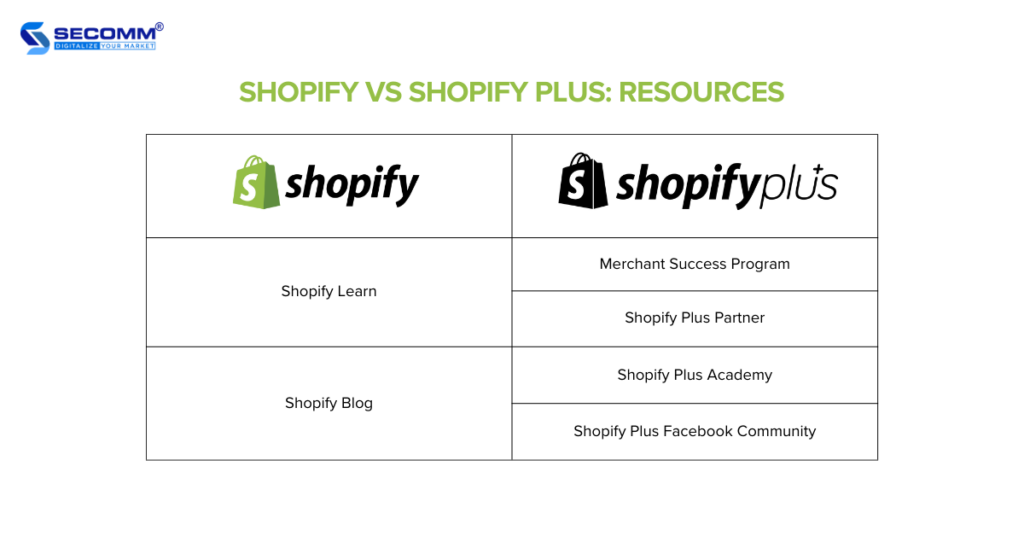
For Shopify businesses, they can access support 24/7 throughout the entire process of building and advancing their eCommerce website through channels like the hotline, email, or chatbox. Additionally, Shopify provides resources for businesses to enhance their eCommerce operations, including:
In addition to the support services available through the hotline, email, or chatbox, businesses utilizing Shopify Plus enjoy enhanced access to educational resources and support:
Here is an overview of the significant differences between Shopify and Shopify Plus platforms. The decision on which platform is most suitable depends on each business’s scale and deployment requirements.
For startups or small to medium-sized enterprises with minimal customization requirements and a desire for quick product launches, regular Shopify solutions may be more suitable.
On the other hand, large-scale enterprises with high integration and customization needs should prioritize Shopify Plus.
With years of experience deploying Shopify Plus eCommerce websites for leading businesses such as Vinamilk and Suzuverse, SECOMM boasts a professional team with exceptional technical skills and in-depth knowledge of the Shopify Plus platform.
Contact SECOMM or call the hotline at 028 7108 9908 to deploy Shopify Plus today!
 2
2
 5,971
5,971
 0
0
 1
1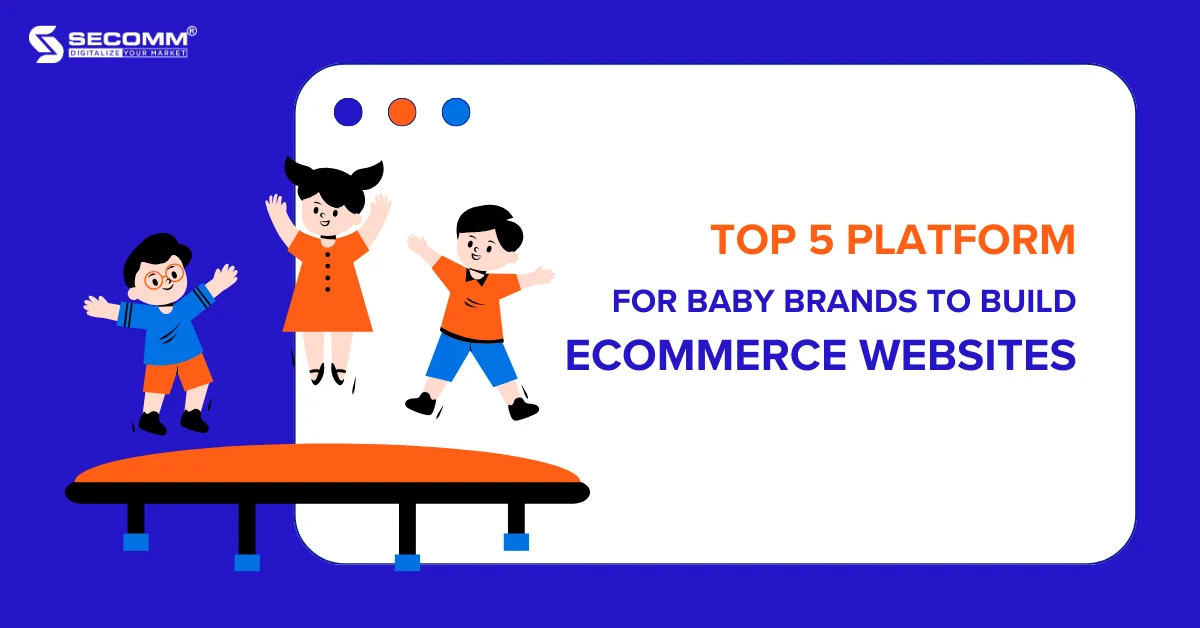
The first step in the strategy for building and developing an eCommerce website, a crucial consideration for business owners in various sectors, is selecting an eCommerce platform that aligns with their business requirements.
The Baby eCommerce industry is no exception to this rule. So, what is the ideal choice? The following article outlines and clarifies the pros and cons of the top five eCommerce platforms for the development of Baby eCommerce websites.
Magento (now owned by Adobe), is an open-source eCommerce platform that grants businesses full authority to develop and manage their online store
For large enterprises in the Baby eCommerce industry with complex requirements for building and developing eCommerce websites, Magento’s high degree of customization and scalability, along with its wealth of outstanding features and extensions, can effectively cater to their needs. However, to fully leverage Magento’s capabilities, businesses should invest in both a specific budget and a requisite level of technical expertise.
Currently, Magento offers two primary versions:
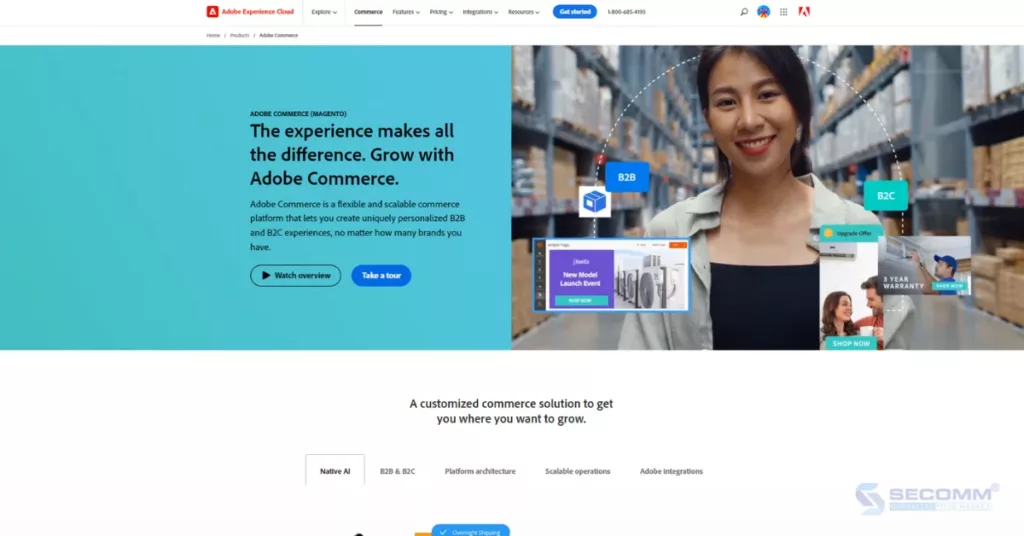
Key Features:
Pros:
Cons:
Pricing:
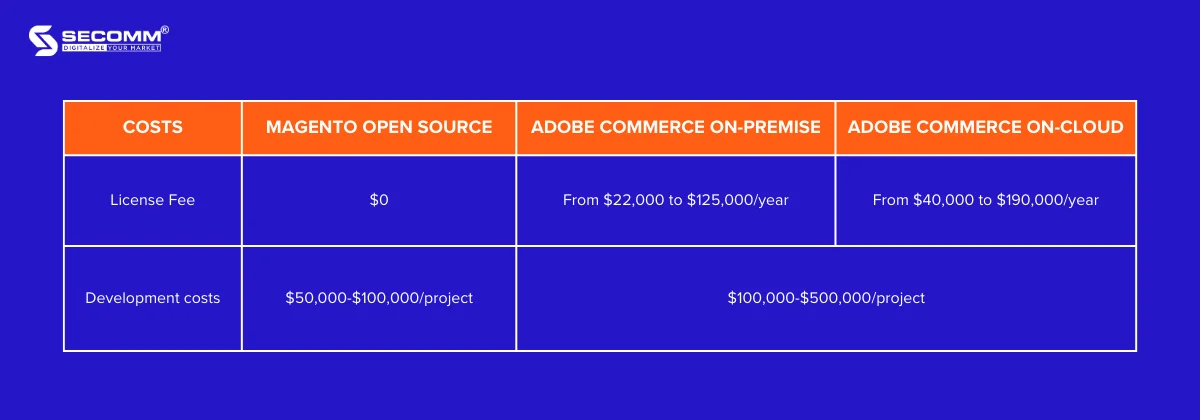
Brands built their Baby eCommerce websites on Magento including Kids Plaza VN, Bibo Mart, Children Salon, Mothercare VN, Aden+Anais, Hornby, v.v
Salesforce Commerce Cloud (SFCC) is a cloud-based Software as a Service (SaaS) solution that helps businesses build their eCommerce websites. This platform enables businesses to integrate all their sales channels, delivering a seamless shopping experience for customers.
SFCC offers two key solutions:
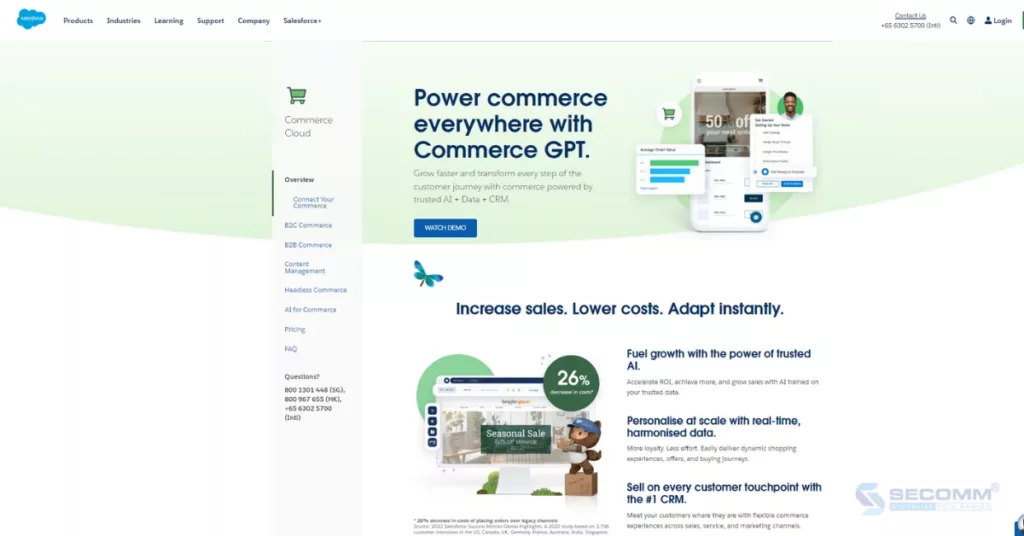
Key Features:
Pros:
Cons:
Pricing
For Salesforce B2C Commerce Cloud, businesses are offered three solution packages: Starter, Growth, and Plus, and they need to contact Salesforce for specific consultations and pricing.
For Salesforce B2B Commerce Cloud, businesses should get in touch with Salesforce for specific price levels and implementation details.
The cost of developing an eCommerce website using the SFCC platform can range from $2,000 to $500,000, depending on each business’s requirements.
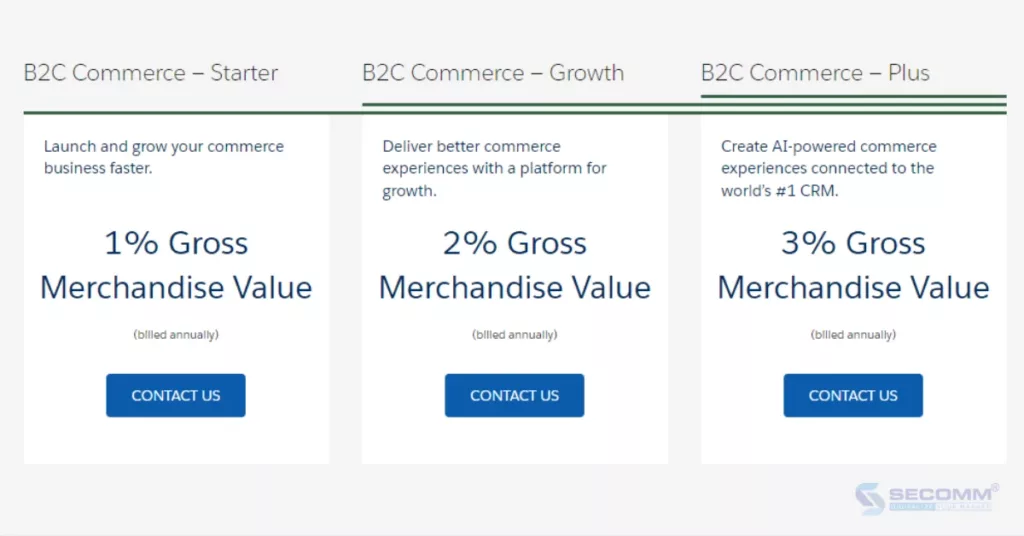
Some Baby brands that have developed eCommerce websites on the Salesforce Commerce Cloud platform include Carter’s, Hanna Andersson, OshKosh B’gosh, Chicco, Crayola, Toys “R” Us, Melissa & Doug, and more.
Shopify is a SaaS platform known for its diverse features and themes that cater to businesses of various industries and scales, facilitating the rapid and effective development of eCommerce websites.
Shopify offers three standard solution packages (Basic, Shopify, Advanced), tailored for small and medium-sized businesses. Meanwhile, the Shopify Plus solution is aimed at medium to large businesses with elevated development and customization requirements.
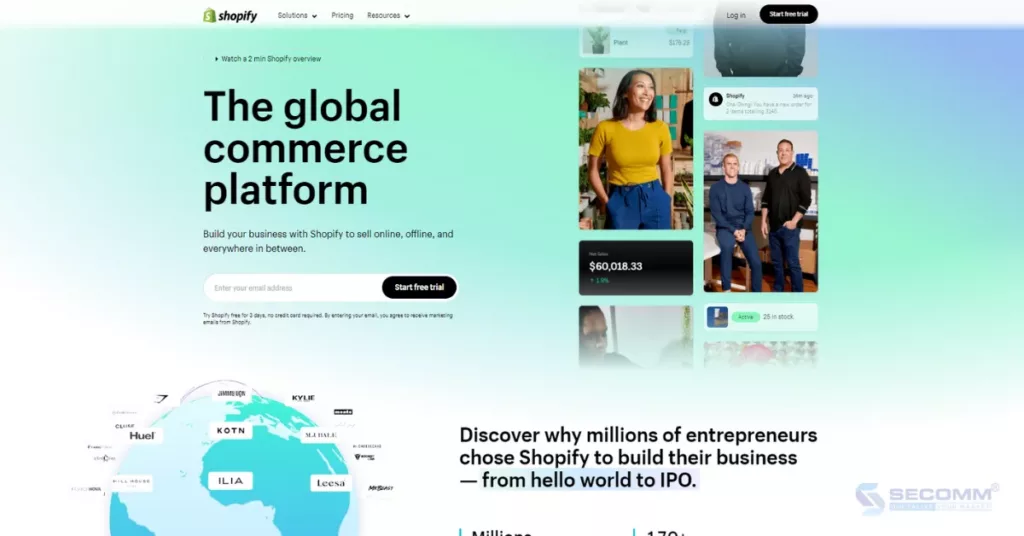
Key Features:
Pros:
Cons:
Pricing
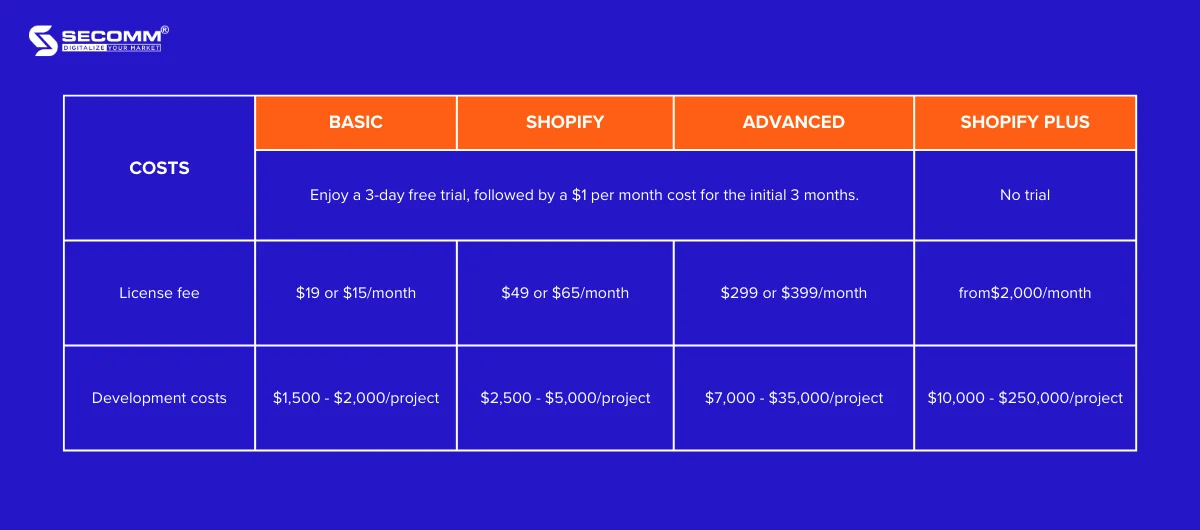
Shopify serves as the choice not only for Baby dropshipping stores but also for numerous well-known Baby brands that have used this platform to build their online store, including HATCH Collection, Motherhood Maternity, 4moms, Maclaren, Manhattan Toy, Tegu, and many others.
BigCommerce is another platform worth considering for Baby eCommerce businesses due to its ease of use and its ability to cater to the eCommerce website-building requirements of businesses across various scales and industries.
Furthermore, BigCommerce is recognized as a SaaS platform that includes a wide array of features within its solution packages (Standard, Plus, Pro, Enterprise) aimed at fostering eCommerce growth.
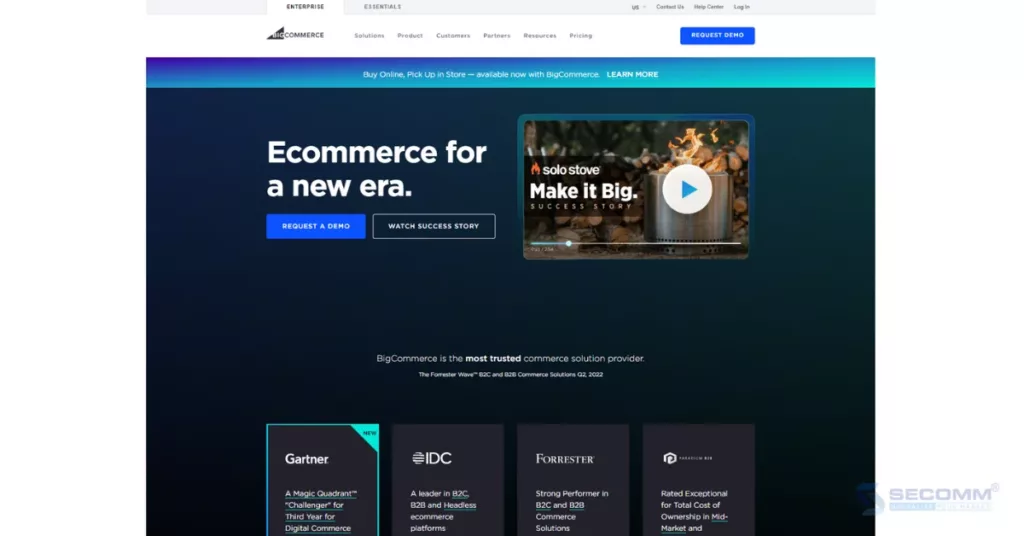
Key Features:
Pros:
Cons:
Pricing

Brands built their eCommerce websites with BigCommerce: Le Petit Kids, Scentos, Nature’s One, Kids Furniture Warehouse, See Kai Run, Feltman Brothers, v.v
Shift4Shop is a SaaS eCommerce platform that equips businesses with the essential tools and features to build and customize eCommerce websites. It presents a range of free and premium themes suitable for marketing Maternity and baby products.
Shift4Shop provides three paid plans (Basic, Plus, Pro) and one free plan, subject to a minimum monthly revenue of $500, designed for U.S. sellers under the End-to-End category.
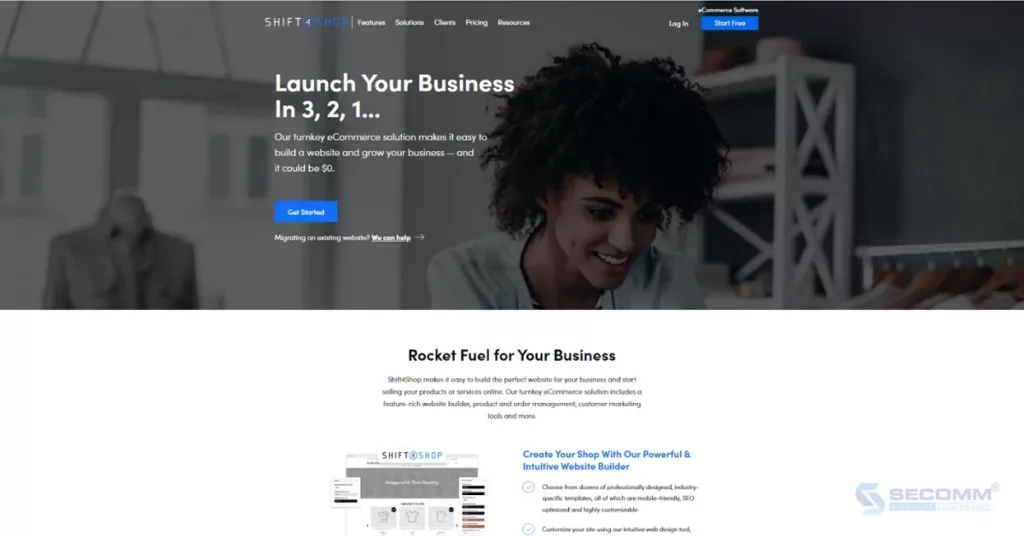
Key Features:
Pros:
Cons:
Pricing
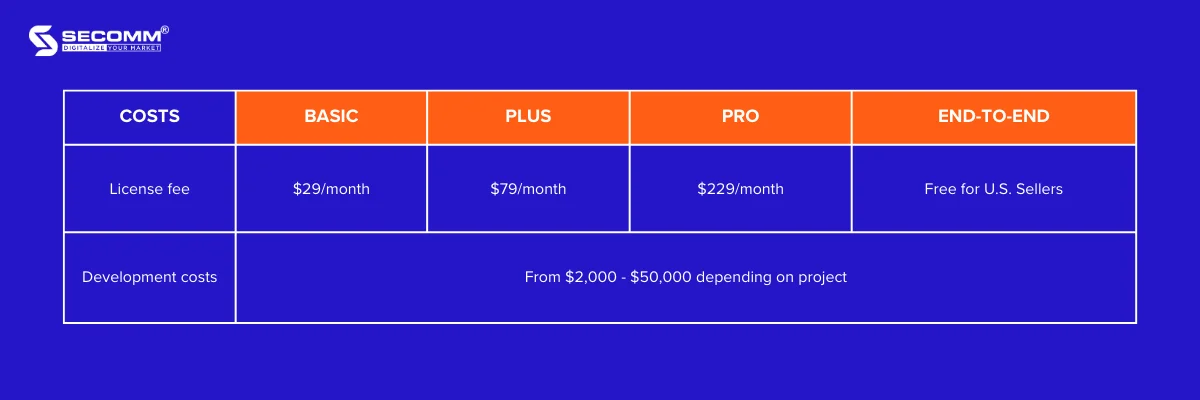
Brands built their Baby website with Shift4Shop: eLeMeNO-Pee, Sugar Babies, Nicki’s Diapers, Enfant Style, Ideal Baby & Kids, v.v
The above are the top 5 platforms that have been preferred by the majority of Baby businesses for establishing their eCommerce websites.
After years of eCommerce implementation across various countries, SECOMM has accumulated invaluable insights to expedite the process of website development and growth for Baby businesses.
Get in touch or directly call SECOMM‘s hotline at (02871089908) for immediate guidance on platform selection and eCommerce implementation today
 2
2
 10,606
10,606
 0
0
 1
1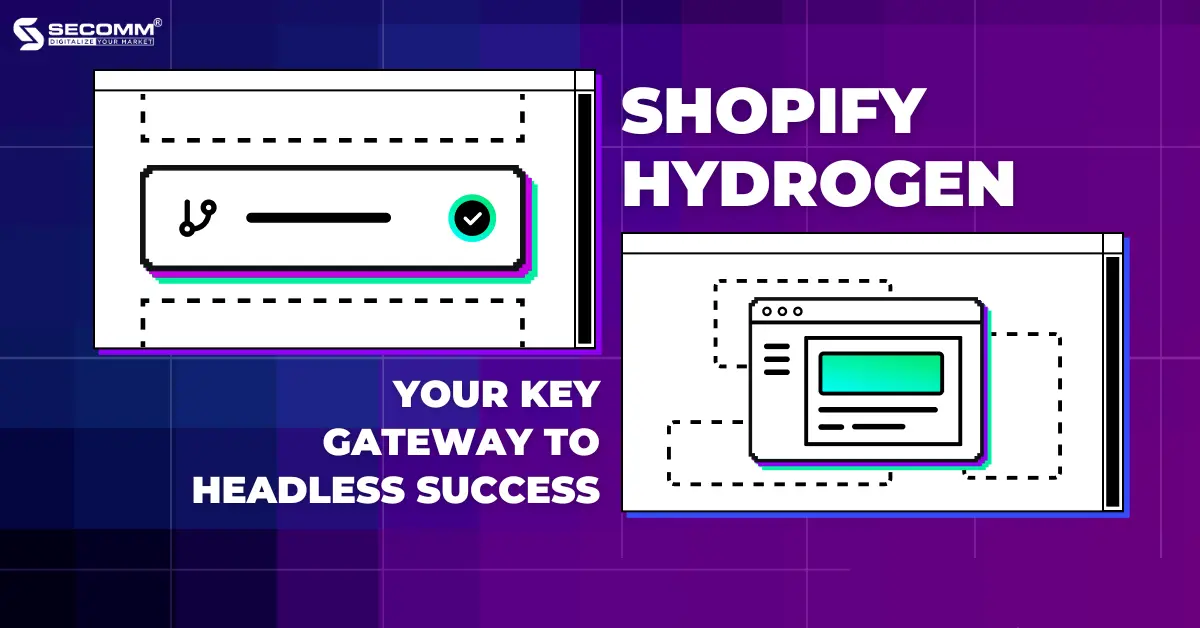
Today’s eCommerce consumers are no longer confined to a single channel or device for their shopping needs. They have a ton of options, including mobile apps and social media platforms. As a result, businesses are striving to establish a robust multi-channel presence to swiftly engage with their customers. One highly effective approach to achieving this goal is through the implementation of Headless Commerce.
In recent years, investors have shown a significant interest in Headless Commerce platforms and associated solutions, recognizing their pivotal role in shaping the future of online commerce.
Forbes reports that between 2020 and 2021 alone, more than $1.65 billion in funding was directed toward Headless technologies. In response to this evolving landscape, Shopify unveiled the Hydrogen solution in June 2021, designed to facilitate the development of headless Commerce storefronts.
The following article aims to provide a comprehensive understanding of Shopify Hydrogen, shedding light on both its pros and cons.
Shopify offers businesses the Hydrogen framework solution, originally based on React but now being developed with Remix, in conjunction with the global hosting solution known as Oxygen.
In the past, Shopify website developers utilized the platform’s templating language known as Liquid, which often faced performance limitations. Consequently, to ensure top-notch website performance for headless commerce, Shopify businesses require a specialized solution.
Typically, businesses implementing headless projects on Shopify Plus opt for the React framework over Liquid due to its superior technical aspects. Moreover, headless stores on Shopify Plus offer heightened flexibility, customization, and scalability compared to standard headless stores on Shopify.
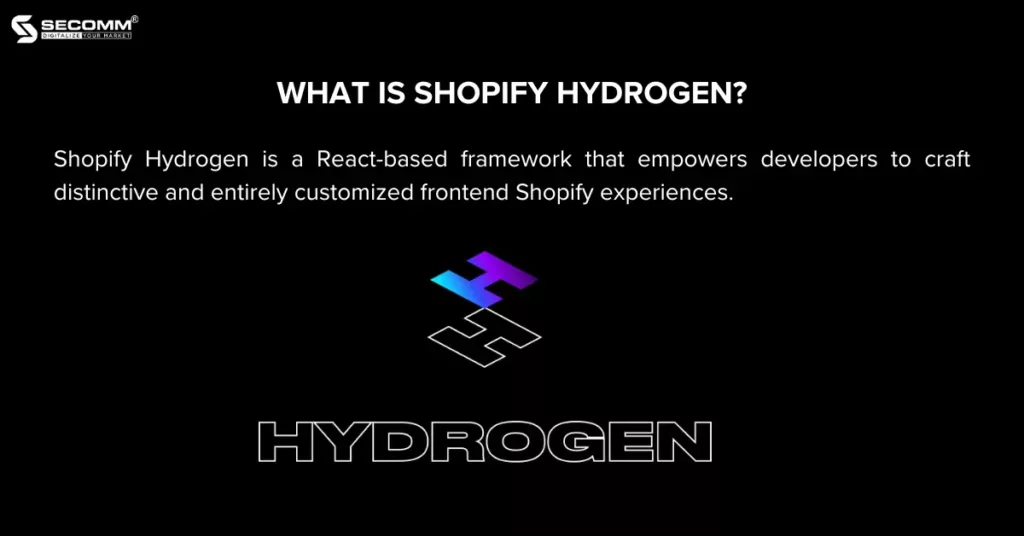
Therefore, Shopify has introduced a solution that allows both Shopify Plus and standard Shopify businesses to build and advance the most optimized headless eCommerce websites possible. This led to the creation of the Hydrogen framework solution and Oxygen hosting.
Shopify Hydrogen is a React-based framework that empowers developers to craft distinctive and entirely customized frontend Shopify experiences. This framework encompasses all the essential structures, components, and pre-built tools necessary for developers to swiftly create headless stores and deliver personalized user experiences.
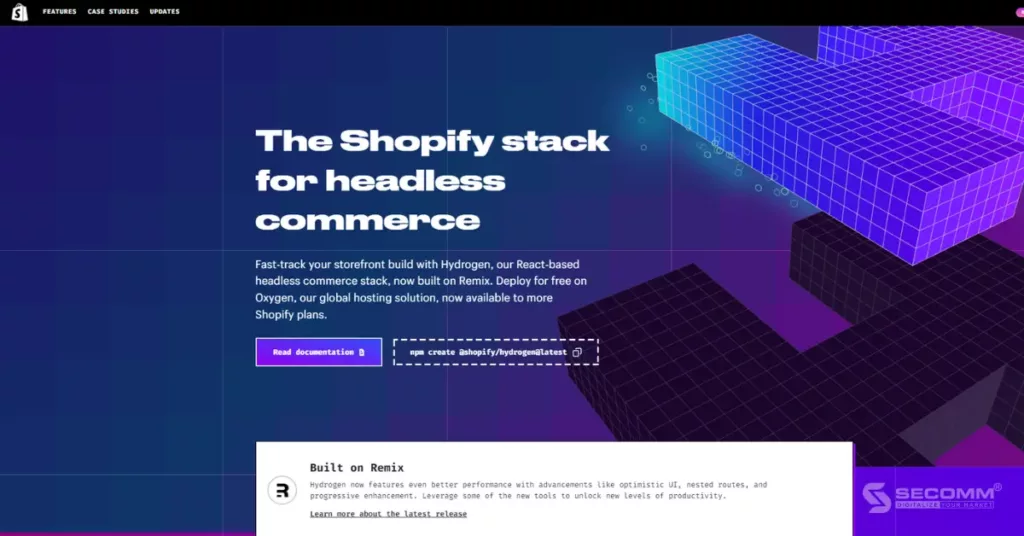
Shopify Oxygen is a worldwide hosting solution designed to store custom content, like Hydrogen stores, directly within the Shopify platform. Previously, Shopify businesses seeking to develop Headless Commerce had to depend on third-party hosting providers (e.g., Netlify).
In contrast, Oxygen is supported by Shopify’s extensive global infrastructure, featuring over 100 server locations worldwide. Thanks to this, Hydrogen stores can seamlessly and directly integrate with Oxygen hosting through the Storefront API, eliminating the need for reliance on third-party providers.
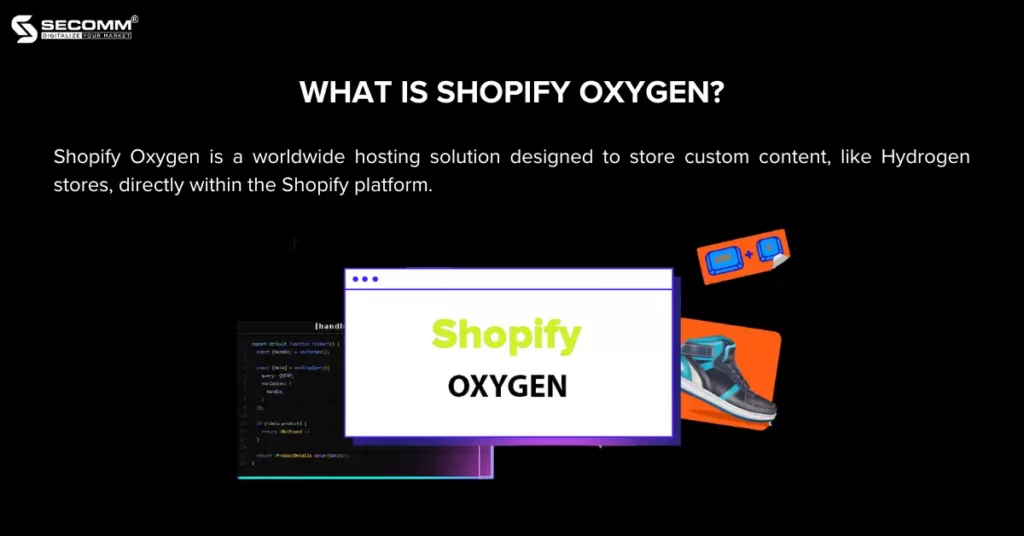
In the first quarter of 2023, Shopify unveiled Hydrogen v2, highlighting the web development tool called Remix. This tool has earned recognition from developers as one of the top React frameworks, trailing only behind Next.js. Consequently, Shopify acquired Remix and designated it as the cornerstone of the Shopify Hydrogen solution.

The reason for this lies in the fact that Hydrogen v1 faced performance-related criticisms after some time in operation. The acquisition of Remix is a part of Shopify’s efforts to rectify these issues, leading to the emergence of Hydrogen v2.
While developers tend to favor Next.js over Remix due to its open structure, allowing for greater customization and offering a more favorable developer experience, it doesn’t guarantee output quality and website performance.
Conversely, Remix employs a closed structure that mandates developers to adhere to the framework’s template. This approach closely aligns with Shopify’s SaaS model, providing a web development framework and enforcing developers to follow specific principles during deployment.
This adherence ensures website performance and significantly enhances conversion rates. Therefore, Remix is the ideal solution chosen by Shopify to address the existing performance gaps in Hydrogen stores and enhance the eCommerce experience for customers.
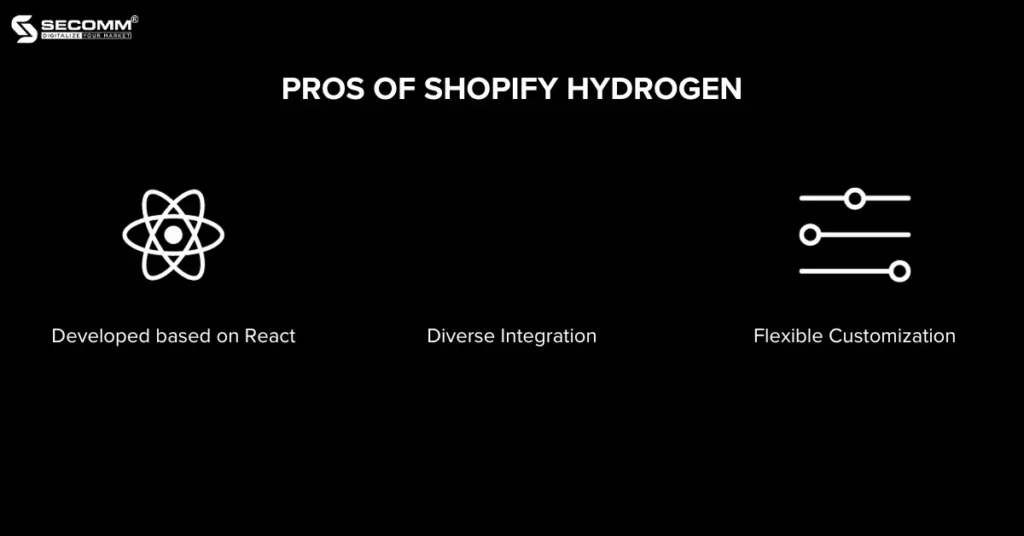
Hydrogen represents Shopify’s investment in the development of Headless eCommerce. Therefore, it’s fair to classify any Shopify store using the Hydrogen framework and Oxygen hosting as a Headless Shopify store.
The Headless architecture has consistently garnered praise from industry experts, who anticipate its continuous evolution. Shopify’s decision to incorporate React – the JavaScript library for frontend interface development – as the cornerstone of the Hydrogen solution underscores this platform’s forward-looking perspective on the future of eCommerce, firmly rooted in the Headless trend.
The launch of Shopify Hydrogen aims to assist businesses in building professional Headless eCommerce websites and providing customers with a seamless multi-channel experience.
Therefore, Shopify extends the capability to seamlessly integrate Hydrogen stores with various third-party applications and platforms like Klaviyo, Gorgias, and Rebuy (to enhance the customer experience), as well as Sanity, Contentful, and Builder.io (for Headless CMS implementation).
Learn more about Headless CMS:
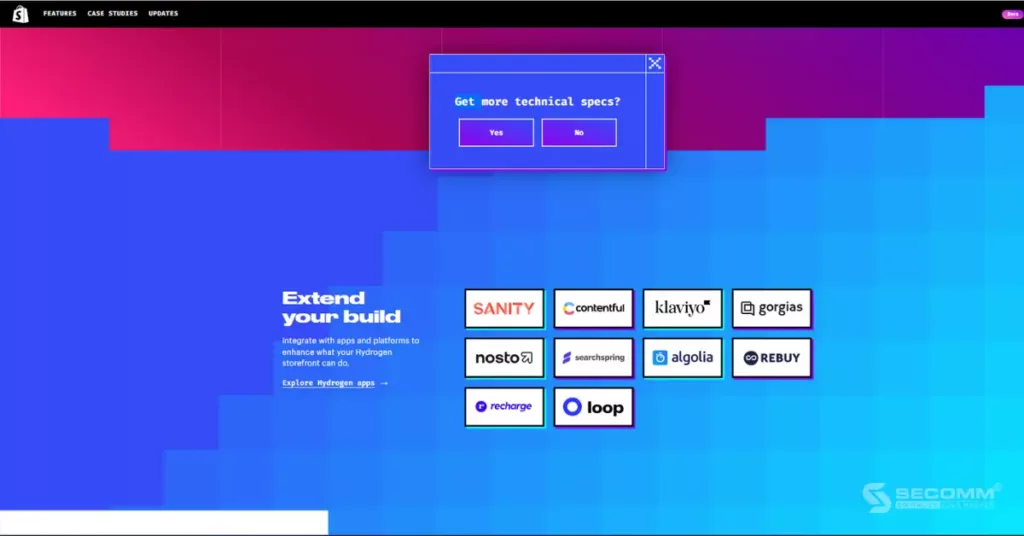
Numerous enterprises choose to implement Headless eCommerce because it grants them full control over the development of the frontend interface, free from the limitations of specific platforms. Shopify Hydrogen also empowers businesses to construct entirely personalized headless website interfaces and integrate essential features for expansion.
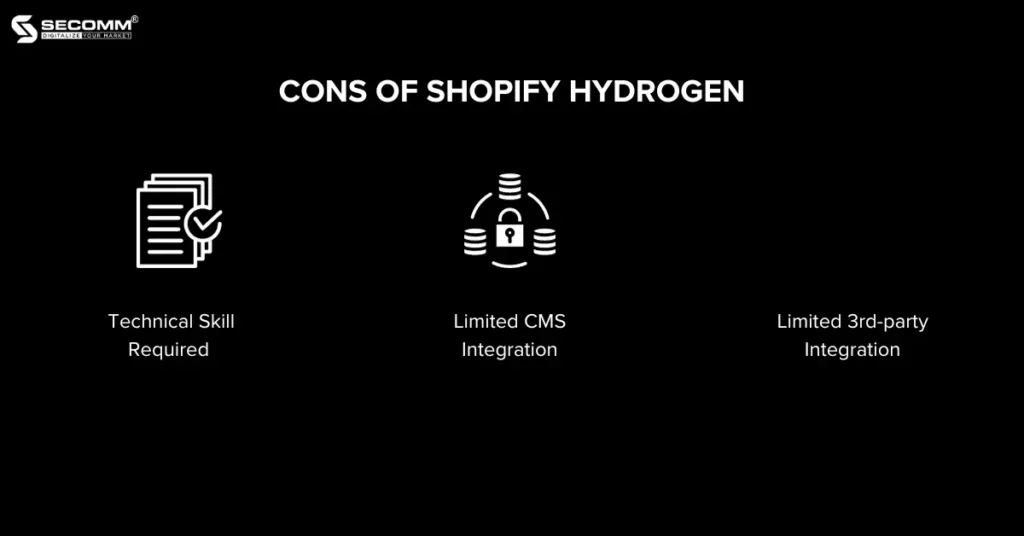
Hydrogen solution empowers businesses to leverage the potential of Headless eCommerce, but it’s predominantly a technically-driven endeavor without a user-friendly drag-and-drop interface for non-technical users to easily access and modify.
Hence, the development process necessitates the engagement of highly proficient developers with programming expertise and a specific comprehension of Hydrogen and Oxygen. In this scenario, businesses have two choices: establish an in-house team of developers or partner with an external specialized entity for swift deployment.
Because it relies on the React framework, Hydrogen can assist developers in creating custom frontends, but the backend CMS functionality must be connected to enable the headless eCommerce website’s operation.
However, as of now, Hydrogen is limited to integrating with specific CMS platforms like Sanity, Contentful, and Builder.io, leaving businesses responsible for connecting with others independently.
Much like CMS platforms, Hydrogen supports businesses in integrating with third-party provider applications, but it has rather limited options. Currently, there are only 13 available applications that businesses can incorporate into their Hydrogen store.
In the many years of implementing Headless eCommerce for numerous clients across various countries, SECOMM has noticed an increasing demand for creating Headless websites using the Shopify platform. Now, businesses have a choice: they can either leverage Shopify’s tech stack (Hydrogen and Oxygen) or build a custom stack tailored to their unique requirements.
This further solidifies Shopify as one of the most flexible eCommerce platforms today, leading the way towards the next generation of eCommerce experiences.
Contact us or call SECOMM’s hotline (02871089908) for a free consultation.
 2
2
 13,214
13,214
 0
0
 1
1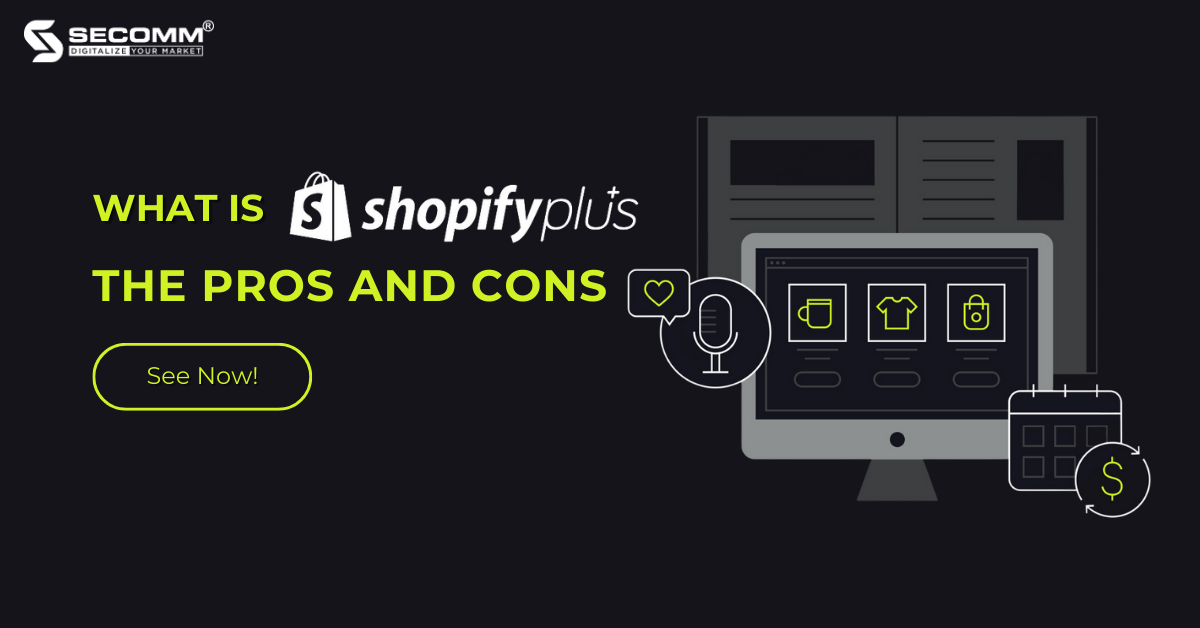
Shopify represents a trustworthy name in eCommerce development and is the choice of many SMEs. However, for enterprise-level businesses with rapid growth, the standard Shopify plans may not meet their needs sufficiently, in addition to incurring high operational and website maintenance costs. Therefore, Shopify Plus emerged to address these aforementioned issues.
Introduced in 2014, Shopify Plus is an enterprise-level eCommerce platform provided by Shopify. Shopify Plus is designed for large businesses with an annual GMV exceeding $1 million and high growth rates.
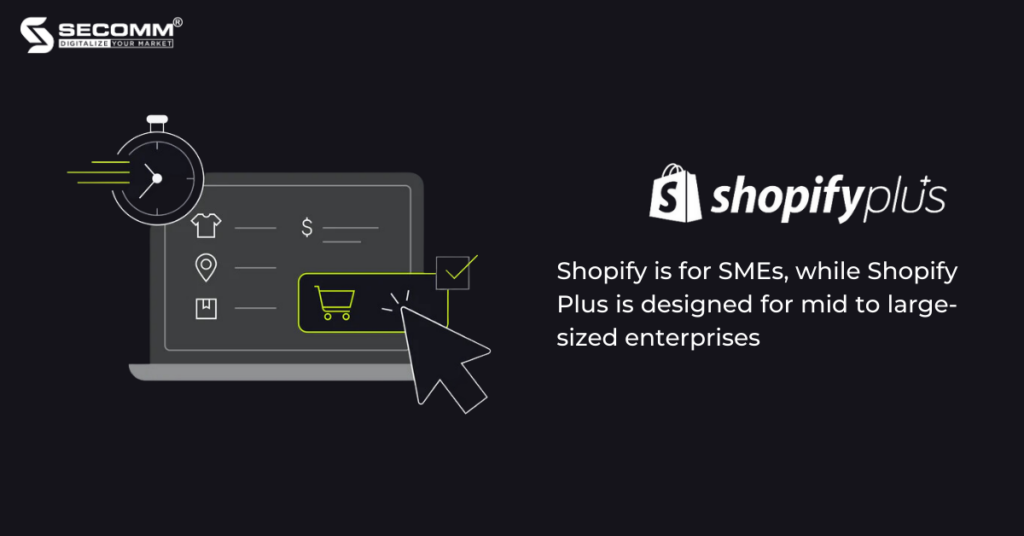
Simply put, Shopify is for SMEs, while Shopify Plus is designed for mid to large-sized enterprises. Some notable global companies implementing Shopify Plus include Gymshark, Kylie Cosmetics, Redbull, Fashion Nova, Fenty Beauty, and more. In Vietnam, leading brands such as Durex Vietnam, Skechers Vietnam, Trollbeads Vietnam, Supersports, Swee Lee, and others have chosen Shopify Plus.
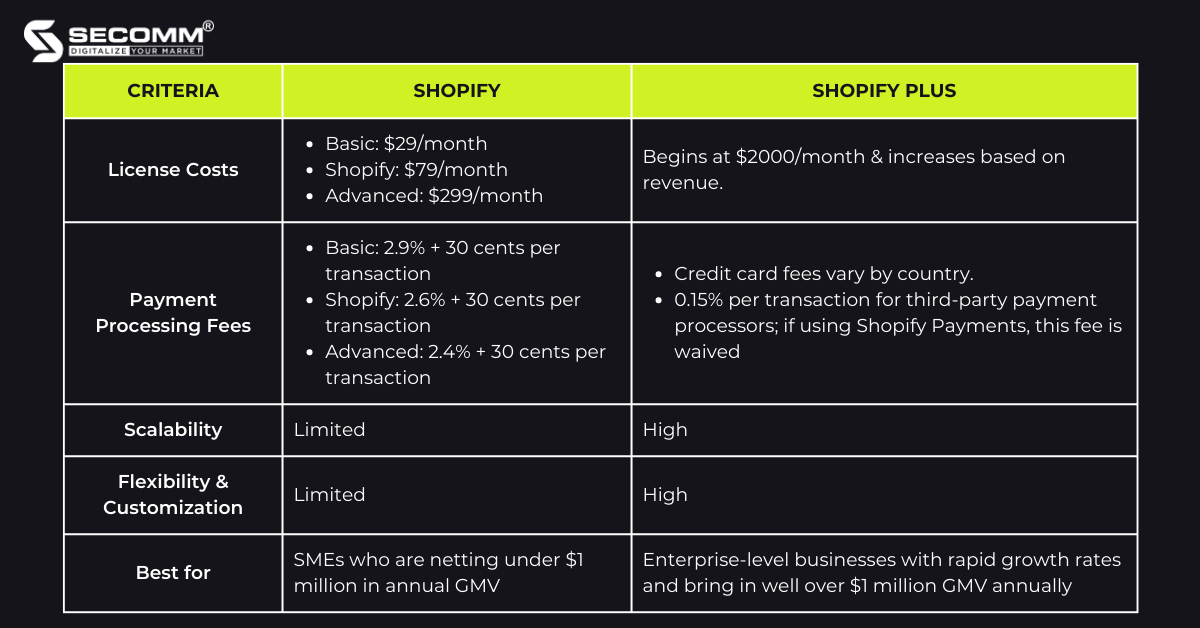
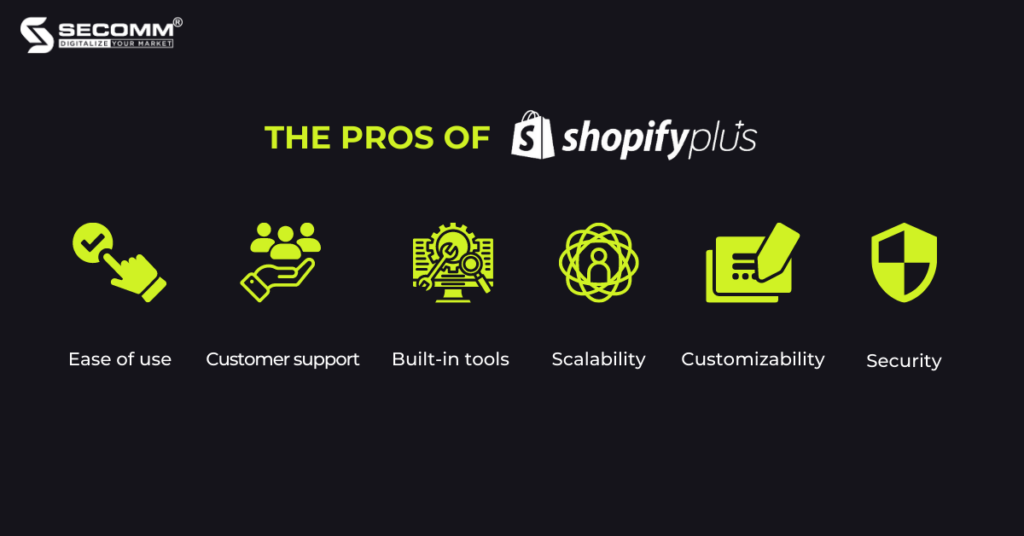
Due to its nature as a SaaS eCommerce platform, Shopify Plus is designed to be user-friendly, allowing businesses to quickly build and operate their websites with no coding knowledge required.
Moreover, by using Shopify Plus, businesses won’t worry much about server management, security, or website updates and maintenance. The platform helps them save a significant amount of time and focus on more critical tasks such as sales, marketing, and customer service.
Shopify Plus provides top-notch customer support 24/7 and a dedicated account manager, which can help businesses address any queries through email, chat, and a hotline. It is great as large enterprises may have complex needs and require personalized support.
The built-in tools are another advantage of Shopify Plus which supports businesses in building and operating their eCommerce websites. Among them, product management, inventory tracking, payment processing, shipping, tax calculation, advanced analytics, and more are notable.
Additionally, Shopify Plus offers numerous customizable templates and apps, allowing businesses to create modern, professional, and feature-rich eCommerce websites without the technical skills required. Shopify Plus also enables businesses to easily scale as their needs change over time.
Furthermore, Shopify Plus gives businesses full access to Shopify’s exclusive programs such as the Merchant Success Program, Shopify Plus Academy, Shopify Plus Partner Program, and the Shopify Plus community on Facebook.
Unlike the standard Shopify plans, Shopify Plus has become a popular choice among large enterprises due to its high scalability. The platform can easily scale up or down depending on the business need which helps deal with increased website traffic and surges in orders during busy shopping periods.
Another significant advantage of Shopify Plus lies in its high level of customization, allowing businesses to tailor their eCommerce websites to specific needs such as customizing templates, apps, payment integration, and more. As a result, the eCommerce website is built with uniqueness and creativity, highlighting the brand image and providing customers with an excellent shopping experience. The platform’s customizability has made it a powerful tool for driving online sales and sustainable growth.
Security is a top priority for eCommerce businesses, especially for large enterprises. Shopify Plus is a PCI-compliant platform that meets the data security standards of payment cards, ensuring that all payment transactions processed through this platform are secure. All customer data is encrypted using SSL to protect sensitive information from unauthorized access. Additionally, Shopify Plus integrates a DDoS protection feature, safeguarding against dangerous attacks that can disrupt website traffic and accessibility.
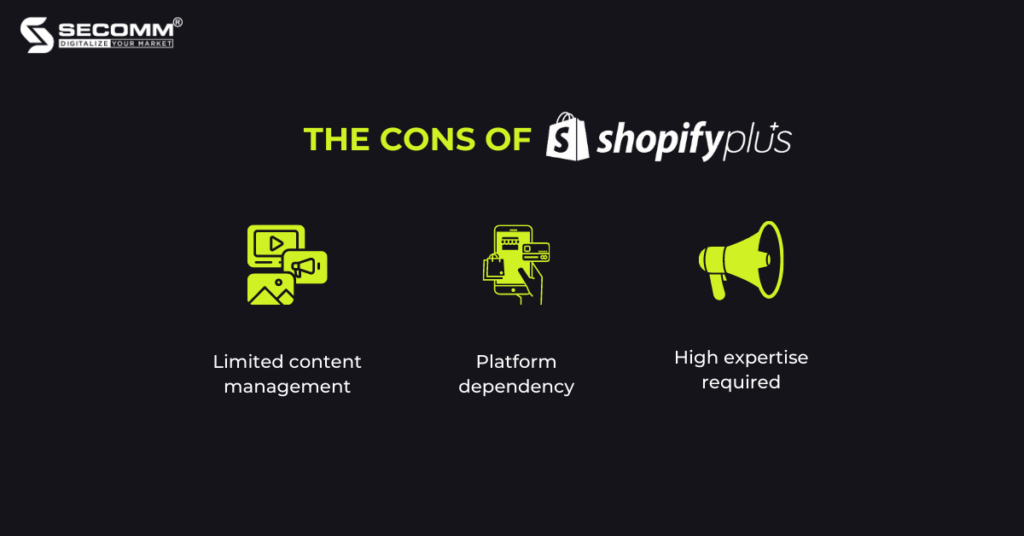
Content management is not a strong suit of both Shopify and Shopify Plus compared to other platforms, especially WordPress. First is the limited blogging functionality, which makes it difficult to create and manage blog categories on the website. Moreover, if the content is a core element of the marketing strategy, this limitation should be carefully considered as it can significantly impact SEO optimization. Another limitation is the lack of control over the URL structure of product pages, which poses challenges in optimizing URLs for search engines.
Overall, while Shopify Plus provides many features for businesses to build and manage eCommerce websites, if content management is a priority, it may be worth considering other platforms that offer more advanced content management capabilities.
If businesses build their websites based on an open-source platform, the platform migration is relatively simple and they can fully own the source code and all data.
On the contrary, Shopify Plus is a SaaS platform, and the entire website system of the business is hosted on Shopify’s servers, which means ownership and control of the source code and data belonging to Shopify Plus. This means that data related to eCommerce activities on the website is tightly locked-in to Shopify’s database. This leads to two issues:
Suppose Shopify goes bankrupt or faces unforeseen risks. In that case, the entire business operations on this platform would be lost, and it would not be possible to retrieve all the latest data. However, this risk is unlikely to occur.
In the event of discontinuing the use of Shopify and switching to another platform, the business can export data to a CSV file containing information such as product details, customer accounts, inventory, orders, etc. However, the data that Shopify allows to be accessed and exported is not comprehensive but only a portion of it.
Although Shopify Plus is considered user-friendly and suitable for users with strong technical skills, large enterprises need a certain level of expertise to effectively implement eCommerce with Shopify Plus. Because it is a highly customizable platform, businesses will need to have some understanding or collaborate with experienced developers to maximize the platform’s features and capabilities.
The cost of using Shopify Plus will be based on revenue. Initially, each business will pay a minimum of $2000/month for standard setup and integration. Once the revenue reaches $800,000/month, Shopify Plus will charge the business based on revenue, at a rate of 0.25% of the monthly revenue. However, the fee will not exceed $40,000/month or $480,000/year
At first glance, this may seem like a large amount of money but for enterprise-level businesses, this pricing is reasonable because Shopify Plus provides a robust eCommerce platform that helps businesses operate more efficiently compared to standard Shopify plans.
As mentioned, the main advantage of Shopify Plus lies in its scalability and customizability but it is limited in standard Shopify plans. A growing business will need an eCommerce platform that can meet the demands of expansion and development. Shopify Plus is designed to handle high sales volumes and can support 10,000 transactions per minute. Additionally, businesses can customize their eCommerce website and leverage built-in features and tools to optimize their operations and sales.
Another advantage of Shopify Plus is that businesses do not have to pay for hosting, bug fixes, maintenance, or updates. The additional fees that businesses need to pay are transaction fees, specifically:
Credit card transaction fees that businesses have to pay to Shopify Plus will vary depending on the country but typically range from 1.5% to 2.5% per transaction.
In addition, Shopify Plus will charge a small fee of approximately 0.15% for transactions with third-party payment gateways, but this fee is waived if the business uses Shopify Payments as a payment method.
Compared to the three standard Shopify plans, the credit card transaction fees of Shopify Plus are still relatively low, with the following differences:
→ It can be seen that compared to the highest-tier standard Shopify plan – Advanced, the credit card transaction fees of Shopify Plus will save businesses 0.25%.
Now look at the transaction fees with third parties:
→ The difference in fees for transactions with third parties is evident, and Shopify Plus is a better choice.
Shopify has a vast app store with over 6000 apps developed by Shopify and third parties. In Particular, there are many apps developed specifically for Shopify Plus. Depending on each business’s needs, the cost of installing apps can range from $0 to a few hundred dollars or several thousand dollars per month.
The basic setup of the Shopify Plus platform is sufficient for businesses to operate their websites. However, to deploy more effectively and provide a better customer experience, businesses may need to install additional Shopify apps, which incur costs. Naturally, with the investment in these apps, businesses will gain equivalent benefits.
Due to its nature as a SaaS eCommerce platform, businesses will not own the source code and website data, which leads to cost disadvantages. Businesses that have reached the level of using Shopify Plus will have a demand for utilizing features, apps, and tools or integrating with third parties. In addition to the fixed monthly cost of using Shopify Plus, businesses also have to pay monthly additional fees based on their needs. This makes it difficult for enterprise-level businesses to manage their cash flow.
On the other hand, for most open-source platforms, although deployment costs are high and deployment time is long, businesses can make a one-time payment and own the source code, data, and long-term features. Therefore, using open-source platforms will help enterprise-level businesses manage their cash flow more efficiently.
Related article: Shopify Plus vs Adobe Commerce: Key Differences 2023
With many years of experience implementing eCommerce solutions for numerous businesses in different countries, SECOMM understands the potential of Shopify Plus to empower eCommerce operations as well as the challenges and difficulties they may encounter during the initial stage.
Contact SECOMM today or call our hotline (+842871089908) to receive a free consultation.
 2
2
 10,585
10,585
 1
1
 1
1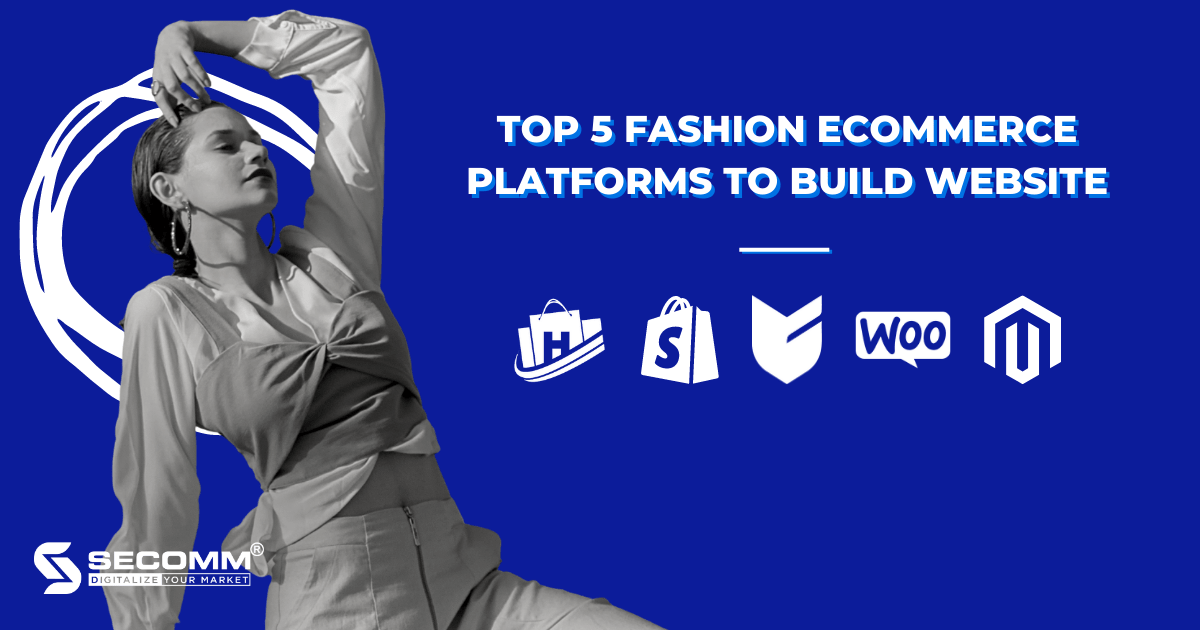
Despite the significant impact of Covid-19, the fashion industry is still on a roll, with the potential to reach $1 trillion globally by 2025 (according to Statista) thanks to eCommerce.
According to the IDEA 2022 research, the fashion eCommerce business in Vietnam is a highly competitive area, with up to 69 consumers using the eCommerce channel for every 100 fashion shoppers.
With the high potential of this commerce business, developing an eCommerce website is a must for success, necessitating the search for a platform on which to build a specialised eCommerce website for the fashion industry.
Businesses can use the following platforms to deploy fashion websites: Big Cartel, Haravan, Shopify, Woocommerce, and Magento.
UI/UX is a criterion that businesses frequently establish when creating an eCommerce website in order to develop a comfortable interface for a group of users who are passionate about fashion and maximise the capacity to engage with customers.

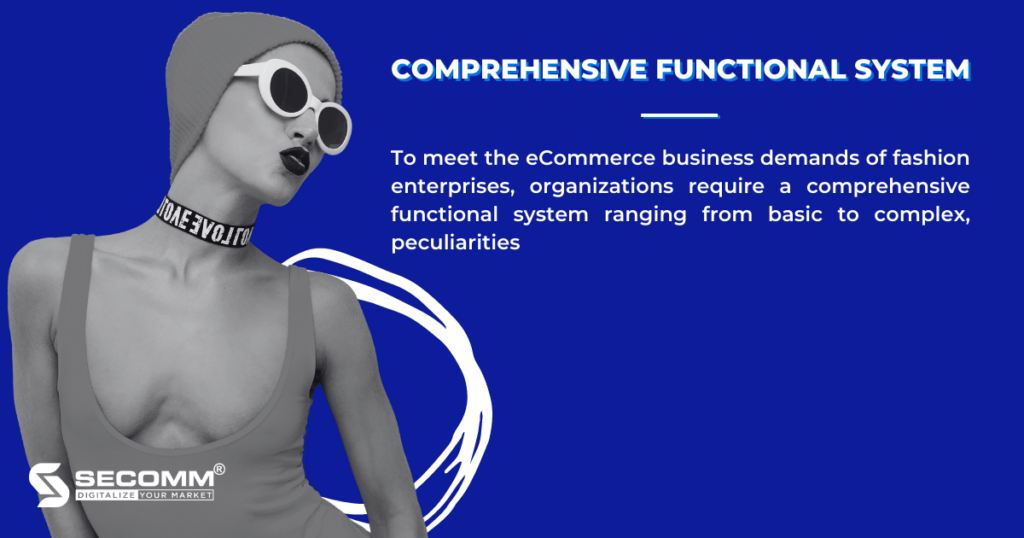
To meet the eCommerce business demands of fashion enterprises, organizations require a comprehensive functional system ranging from basic to complex, which includes:
To provide clients with a comprehensive shopping experience, fashion enterprises may frequently combine a number of payment options, shipping services, management software, and business analysis tools to enhance the e-commerce business system.
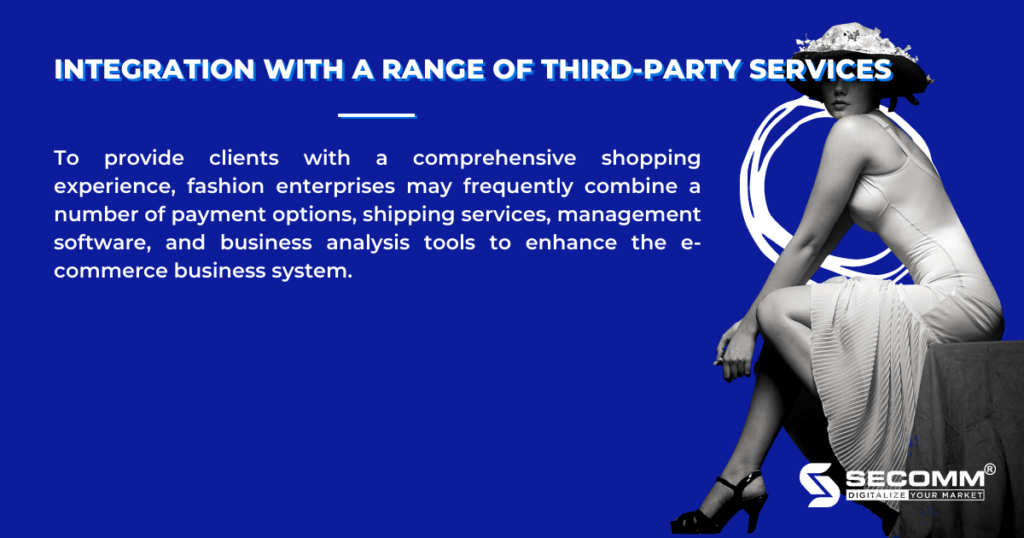
Numerous common payment options available today must be integrated into the website, including:
Often, firms at the start of a fashion business will not focus on the capacity to develop eCommerce websites in the future since platforms that enable this function are typically scarce. But, in terms of strategy, investing in a platform that supports this function can help organisations gain a competitive advantage over competitors in the market.
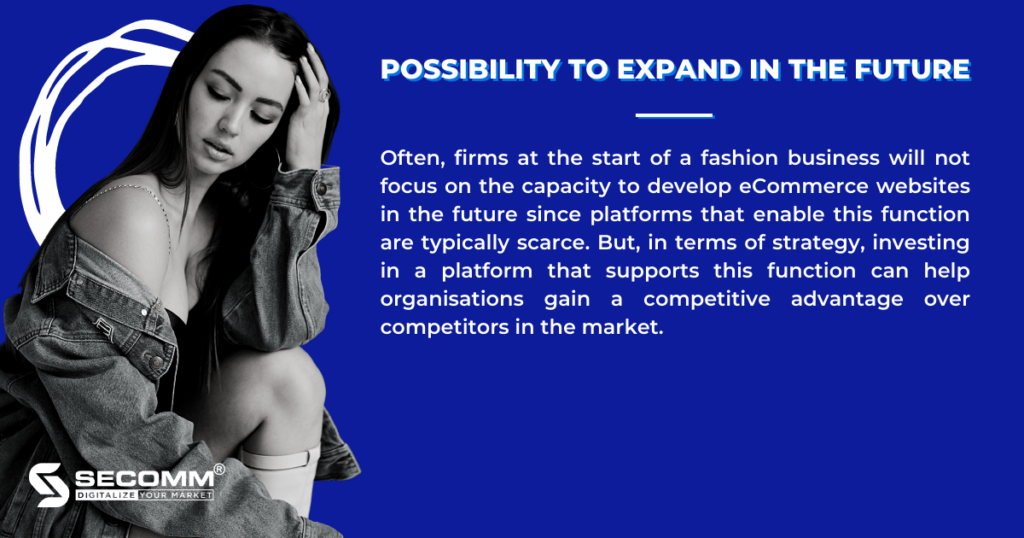
Haravan is a well-known SaaS eCommerce platform in the Vietnamese industry, offering a variety of options for both enterprises and individuals. Haravan is used by a variety of websites, including Juno, Biti’s, Maison, and others.
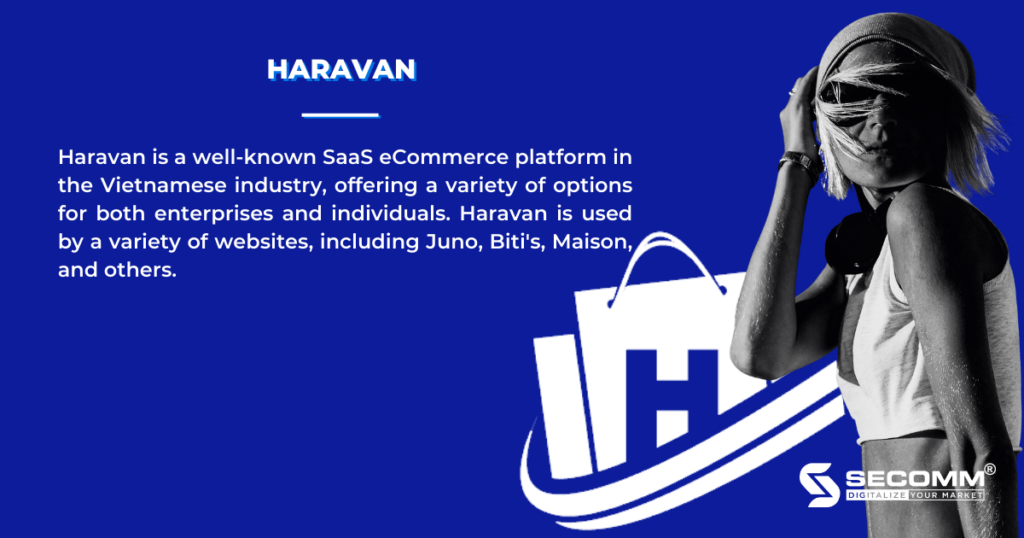
Pro:
Cons:
→ Rating: 2/4
Haravan is suitable for start-up furniture businesses or SMEs (small and medium-sized enterprises) with operations mainly in Vietnam.
Haravan is considered to have a reasonably low and diverse eCommerce website implementation cost for various businesses:
Tuy nhiên, doanh nghiệp nên suy xét khi sử dụng Haravan trong dài hạn vì chi phí giấy phép sử dụng và các tiện ích mở rộng sẽ ngày càng tăng theo thời gian sử dụng.
However, businesses should consider when using Haravan in the long term because the cost of licenses and extensions will increase over time.
Shopify is a SaaS ecommerce platform favored by the international ecommerce business community because of its fast implementation time and reasonable starting cost.
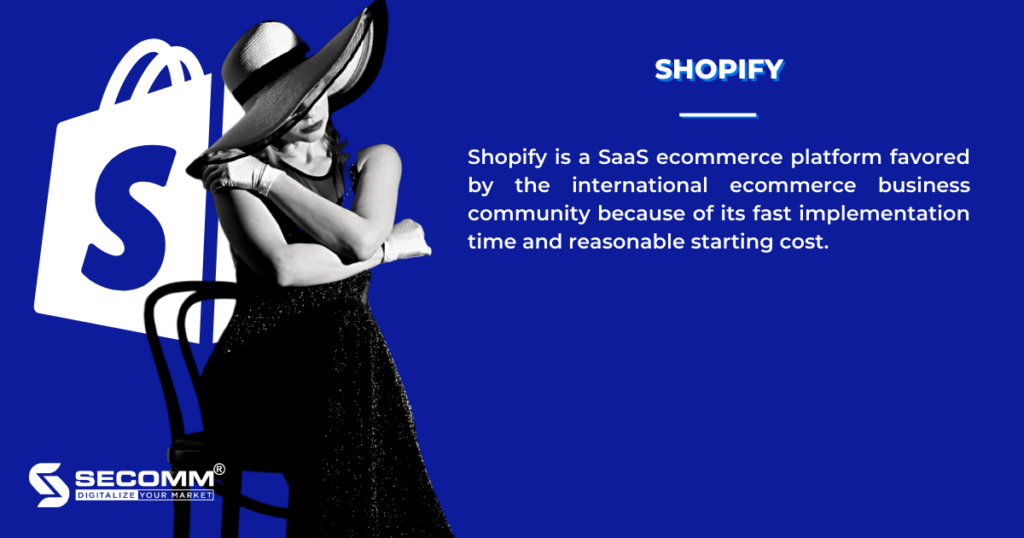
Pro:
Cons:
→ Rating: 2/4
Shopify is considered suitable for start-ups or SMEs with global operations.
Starting an eCommerce business using Shopify is quite inexpensive at beginning, with several options:
Nevertheless, the long-term cost of utilising Shopify will rise owing to rising costs for extensions, yearly usage fees, and % per transaction on the system.
The typical time to develop an e-commerce website is 1-7 days or more, depending on the system’s complexity.
Big Cartel is a platform that assists in the creation of specialised eCommerce websites for the fashion industry or for art goods such as ceramics, paintings, and photographs. Big Cartel is used by several websites such as Atakontu, Indikidual, and others.
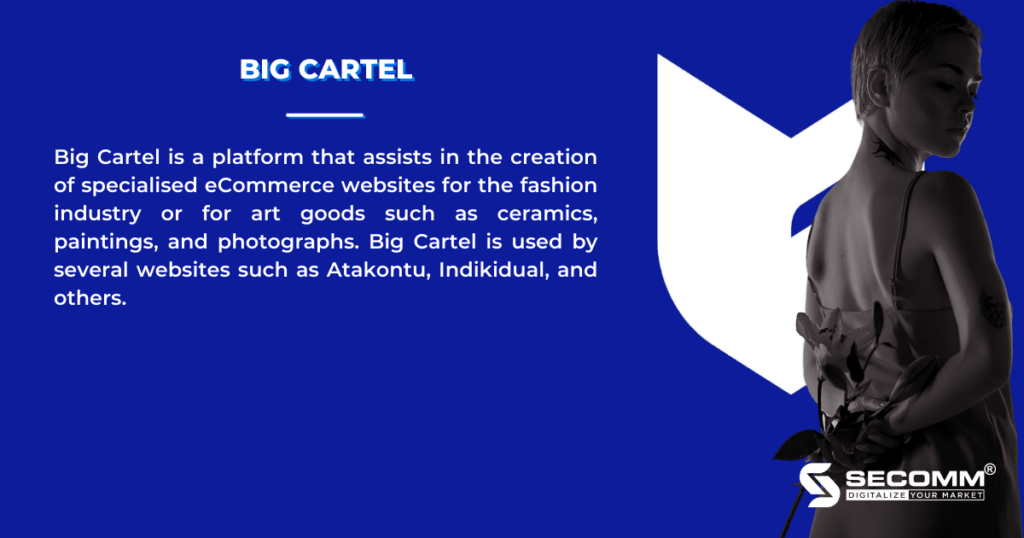
Pro:
Cons:
→ Rating: 2.5/4
Big Cartel will be appropriate for startups, SMEs, or new e-commerce participants that need to handle the complicated “issue” of fashion eCommerce.
Website setup expenses are modest, with few possibilities for solution packages such as Haravan or Shopify:
Big Cartel allows you to develop a fashion e-commerce website in as little as 1-2 weeks, depending on the system’s complexity.
WooCommerce is an open source platform, as a WordPress plug-in introduced in 2011 and allows businesses to use completely free. Popular websites using WooCommerce in Vietnam include Hai Trieu, Orchard, etc.
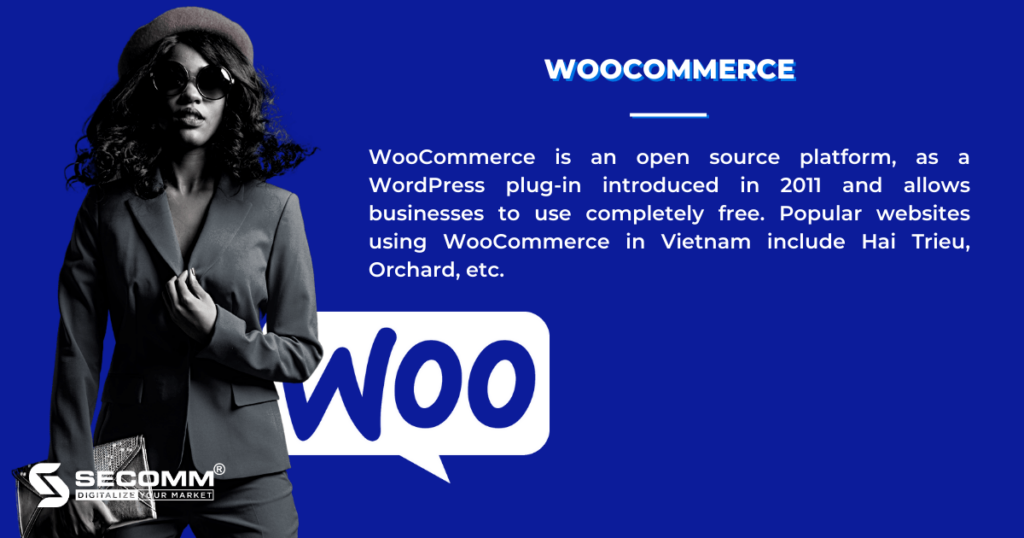
Pro:
Cons:
→ Rating: 3/4
WooCommerce is suitable for fashion businesses who are used to WordPress before and are in need of developing an eCommerce system.
Because it is an open source platform, fashion firms can use it for free; nevertheless, businesses must pay development costs while utilising the platform, such as:
An eCommerce website will take longer to create than the previous three platforms since it must be constructed from the ground up, which will take at least 1-3 months.
Magento is an open source platform with 2 versions: Magento Open Source (free) and Magento Commerce (paid). Some websites are using Magento such as Canifa, Hoang Phuc International, OnOff, etc.
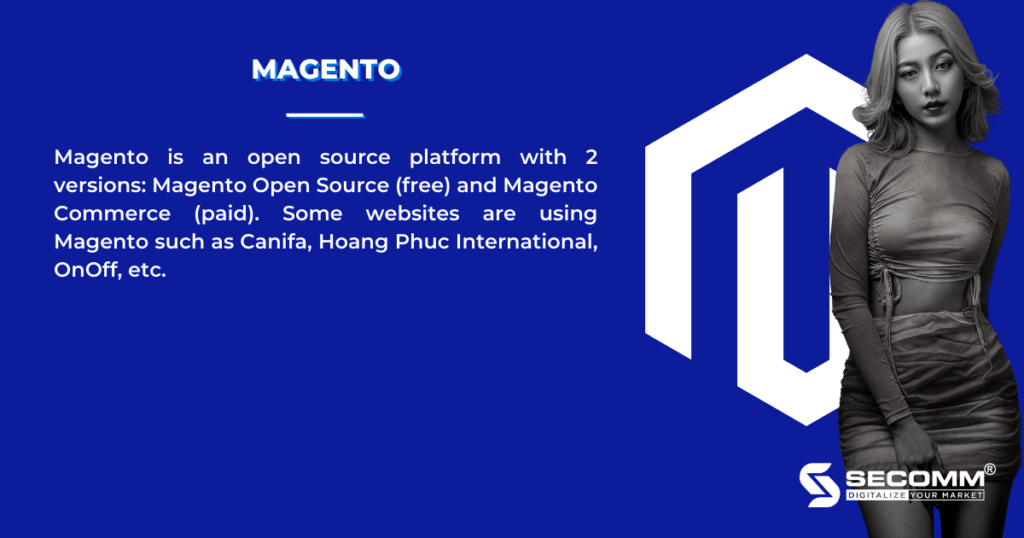
Pro:
Cons:
→ Rating: 4/4
Magento is appropriate for a wide range of fashion business types, including B2B, B2C, and B2B2C, as well as a wide range of business sizes, including startups, SMEs, and huge corporations. Nevertheless, because the cost of deploying Magento is sometimes very high, Magento is favoured by major organisations.
Magento Open Source, like WooCommerce, is an open source platform, therefore it is free to use; nonetheless, businesses must consider the following costs:
Businesses will be working directly with Magento’s development team for Magento Commerce, thus they will have to pay licence fees as well as certain additional charges such as:
A complete Magento project typically requires 3 to 6 months of deployment time, with some projects requiring up to a year. The reason for this is the complicated functioning structure and the lack of Magento experts.
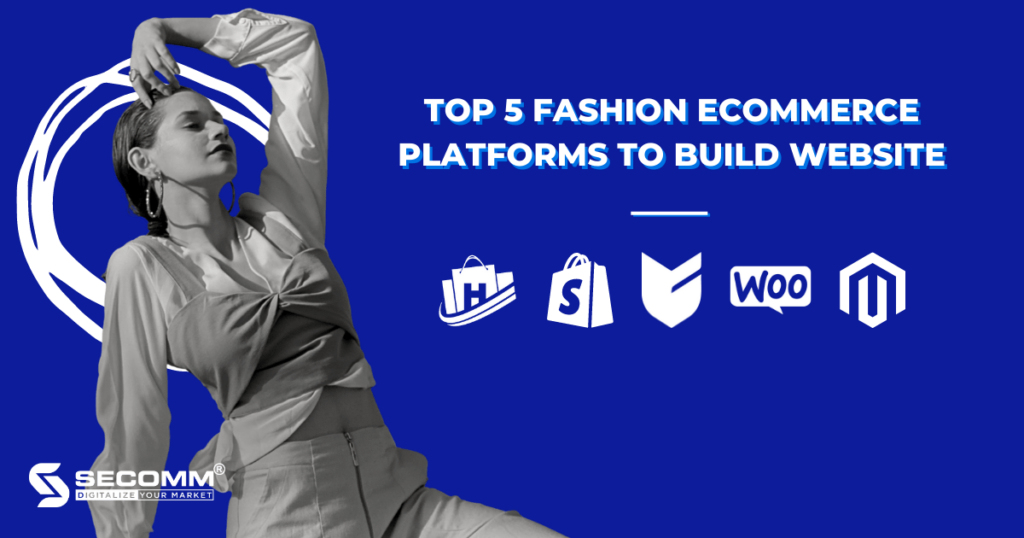
 2
2
 4,445
4,445
 0
0
 1
1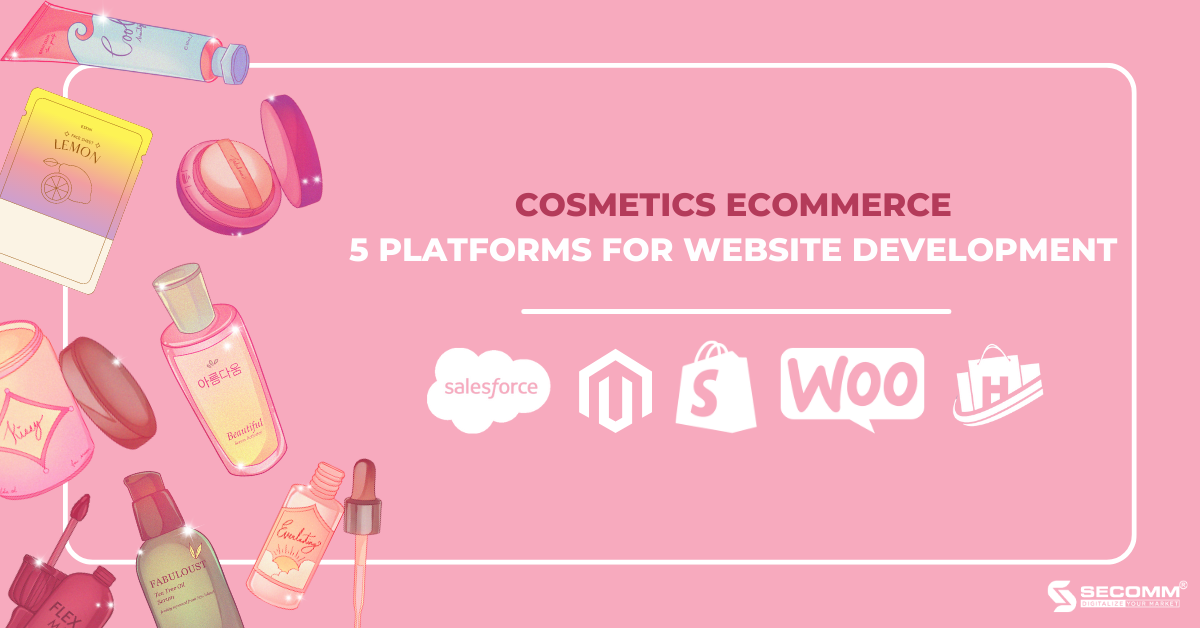
Cosmetics eCommerce is currently developing into a fresh and promising sales channel for companies in addition to the traditional sales channel. Businesses must work hard to sustain and achieve breakthrough growth through eCommerce platforms, though.
As a result, numerous cosmetics companies started developing online cosmetics business websites and found surprising success, such as Kylie Cosmetics, Hasaki, and Guardian,…
These websites’ success can be attributed to their early selection of an adequate and suitable eCommerce platform. Which platforms are appropriate for the cosmetics industry, then?
Salesforce Commerce Cloud (SFCC) is a highly flexible SaaS eCommerce platform that allows companies to offer the best B2B and B2C shopping experiences. Moreover, Salesforce gives Commerce Cloud access to Einstein AI to further enhance this system’s intelligence.
Top cosmetic brands currently using Salesforce Commerce Cloud to deploy eCommerce include L’Occitane, Lancôme, Loreal, Nars, Neutrogena, NYX Cosmetics, and Shiseido,…

Pros:
Cons:
=> SFCC is suitable for B2C and B2B cosmetic businesses.
Magento is a popular open-source commerce platform in the field of eCommerce, with nearly 200,000 websites in use. Currently, Magento has 2 versions: Magento Open Source (free), and Magento Commerce (paid).
Cosmetic eCommerce websites built successfully on the Magento platform with high brand awareness include Laneige, Sigma Beauty, and Hasaki,…

Pros:
Cons:
=> Magento is appropriate for a range of cosmetics business types, including B2B, B2C, and B2B2C, as well as for various business sizes, including start-ups, SMEs, and major companies. However, large organizations use Magento because it is frequently relatively expensive to deploy.
WooCommerce is a free WordPress plugin that allows businesses to transform a regular WordPress website into a professional eCommerce website with full features and easy customization with just a few simple steps.
A few good examples of big brands that have built successful eCommerce websites with WooCommerce and generated huge sales such as: MOI Cosmetics, Bo Shop, Nuty Cosmetics, AB Beauty World, Beauty Garden,. ..

Pros:
Cons:
=> WooCommerce will be suitable for cosmetics businesses that are familiar with the WordPress platform and want to develop an eCommerce system.
Shopify is a popular SaaS platform in the world that provides a variety of solutions for businesses of all sizes to successfully build eCommerce websites. After being in the market for about 20 years, Shopify has gradually grown to become one of the top eCommerce platforms in the world, trusted by many Vietnamese and foreign companies.
Kylie Cosmetics, Innisfree, Sulwhasoo, Cho Tinh Cua Boo, Guardian, and Ofélia are some examples of companies in the cosmetics industry leveraging Shopify for eCommerce websites and enjoying great success.

Pros:
Cons:
=> Shopify is considered suitable for start-ups or SMEs with global operations.
Haravan is a leading technology firm in Vietnam, that was founded in 2014, with the intention of eventually extending to many other Southeast Asian nations.
It specializes in offering businesses and merchants in Vietnam solutions for eCommerce, engagement marketing, and omnichannel retail.
Haravan has gained the trust of many companies in the cosmetics industry as a result of the efficiency of the website system that the business has created and the ground-breaking online retail sales.
The Face Shop, The World of Lipsticks, The World Skin Food, and Lam Thao Cosmetics are some well-known cosmetics companies in Vietnam that have launched eCommerce websites using the Haravan platform.

Pros:
Cons:
=> Haravan is suitable for start-up cosmetics businesses or SMEs (small and medium-sized enterprises) with operations mainly in Vietnam.
An extremely critical first step in developing a cosmetic eCommerce website is selecting the appropriate platform. Businesses may develop websites more quickly and affordably while enhancing their competitive advantage and sustainable growth by choosing the right eCommerce platform.
The improper platform, on the other hand, will cost firms a lot of money and effort to adopt and switch platforms repeatedly. Therefore, in order to select the best platform, organizations must take into account the objectives and issues with the current model.
With many years of experience in successfully implementing eCommerce for many customers in many countries, SECOMM specializes in providing consulting services with comprehensive and professional eCommerce implementation solutions.
Contact SECOMM today for free support and advice.
 2
2
 2,804
2,804
 0
0
 1
1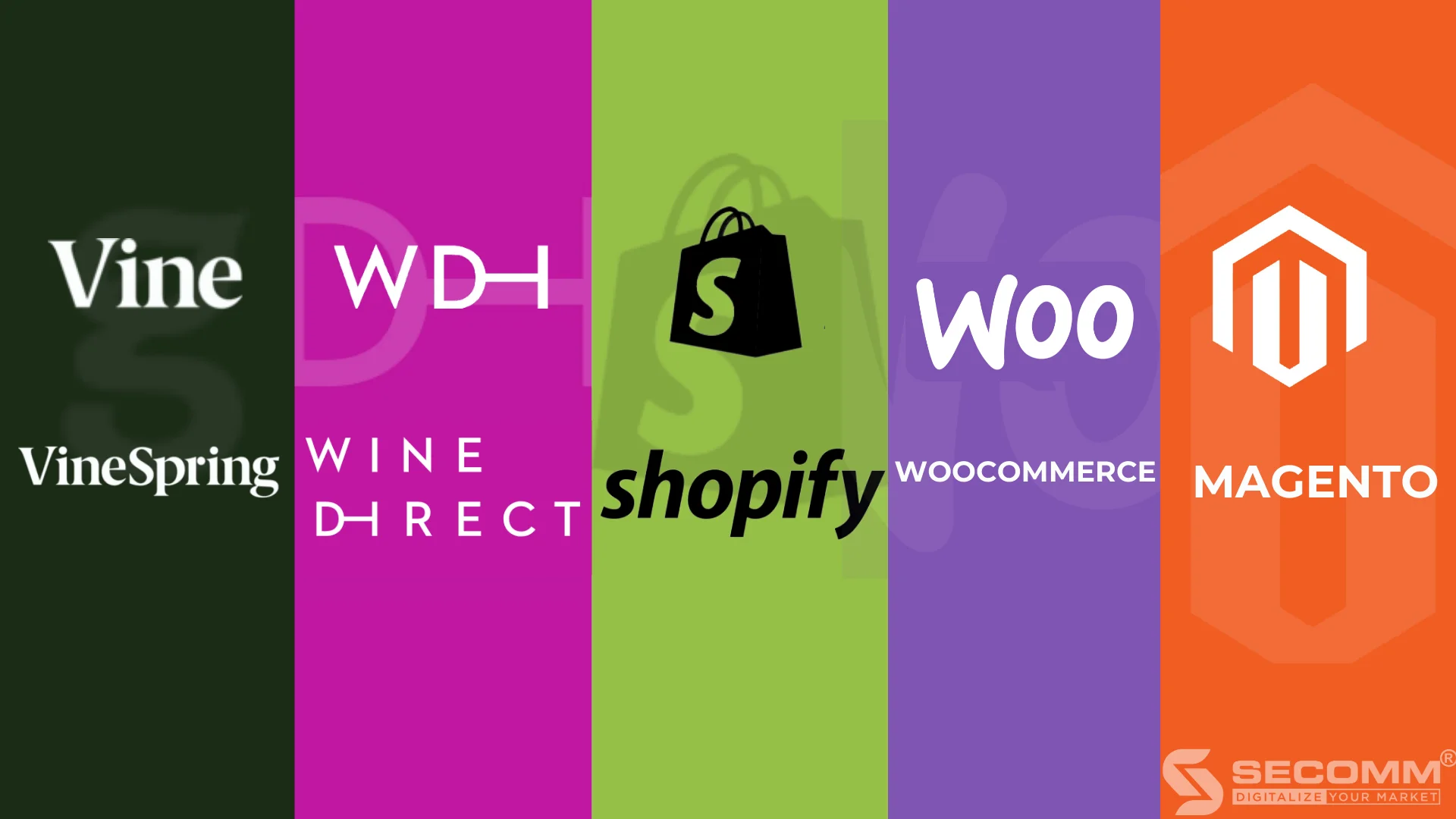
The electronic commerce market in the liquor industry is currently experiencing robust development and has become a dominant trend in many different countries. In 2021 alone, the number of alcohol consumers increased by 10–20%, and those following the trend saw a growth of 40–50%, indicating significant progress in eCommerce for the alcohol industry in recent times (according to Wine Intelligent).
Not only limited to user growth, the global eCommerce market for wine is expected to grow by 7.7% annually (according to Statista) and reach a value of 1.68 trillion by 2025 (according to Cision). This presents both an opportunity and a challenge for liquor businesses to grasp and develop a business model suitable for the changing market in the digital era.
To embark on an online liquor business, the selection of an eCommerce platform needs careful consideration and precise decision-making. Choosing the right platform aligned with the budget and objectives helps businesses save time in construction, utilise human resources efficiently, and save costs in building and developing the system. Simultaneously, it assists businesses in reaching a large customer base, boosting sales, and seizing sustainable development opportunities in the future.
Currently, there are primarily two types of eCommerce platforms on the market: open-source and service-based. Each type of platform has certain advantages and disadvantages, and businesses need to carefully weigh criteria that align with their business model to choose a suitable platform.
Wine products belong to the premium segment in modern life. Therefore, customers always prioritize high-quality visuals, and eye-catching, user-friendly interfaces in the eCommerce system that are easy to use and navigate.
Businesses in the liquor industry need to focus on conveying the product’s value message not only through a well-designed and user-friendly interface but also one that has high aesthetic appeal, with distinctive features to communicate the brand and product values to the specific target customers of the industry. This approach ensures a comprehensive user experience when using the eCommerce system.
eCommerce platforms should have a diverse range of features, from basic to advanced, and even specialized features tailored for the liquor industry. This facilitates the efficient and sustainable development of the eCommerce system for businesses. Basic features include management, storefronts, sales, information management, statistics, revenue control, customer lists, invoices, shopping carts, and checkout, as well as reporting and analysis.
Advanced features related to themes, products, marketing, optimized payment solutions, discounts, and shipping cater to the operational and developmental needs of sustainable eCommerce for businesses. Specialized features for the liquor industry may include product allocation, inventory control, membership management (Wine club memberships management), implementing customer loyalty programmes, and product-specific discounts based on business needs.
Read more: SaaS eCommerce platforms vs Open-Source eCommerce platforms
For a seamless online business system in the liquor industry, businesses often integrate eCommerce platforms with other software and technology platforms they currently use, such as payment systems, shipping, ERP, POS, CRM, marketing management, etc.
This requires the eCommerce platform to have flexible, seamless, and effective integration capabilities with this software without compromising the execution of each system. This integration not only helps businesses overcome manual operational limitations but also increases automation for both back-office management and sales processes, ensuring high accuracy and operational efficiency for the business’s development.
In addition to supporting Cash On Delivery (COD), platforms need to integrate various payment software, including local and international card options, payment gateways (Paypal, Stripe, One Pay, etc.), and digital wallets (Momo, ZaloPay, etc.). The chosen eCommerce platform should have the ability to seamlessly integrate this payment software with high security, safety, and efficiency.
For delivery and logistics, businesses can integrate service providers and popular transportation tracking applications, optimizing and streamlining delivery processes. Businesses can customize and develop delivery modes suitable for customers, ensuring a comfortable and convenient buying and receiving experience for users. Integrating payment and delivery software helps shorten the purchasing journey, optimize the user experience, and prompt customers to make decisions quickly.
Businesses can fully integrate third-party enterprise management software such as ERP, CRM, POS, etc., with the eCommerce system to support efficient and seamless multi-channel eCommerce operations. This synchronizes data on products, categories, orders, and user information across systems, simplifying and automating the back-office management and sales processes, ensuring high accuracy and operational efficiency for sustainable development.
In addition to the marketing tools available on the eCommerce platform, businesses can integrate additional marketing tools such as email marketing software (MailChimp, Drip, etc.), marketing analysis software (Google Analytics, Google Adwords Keywords, etc.), and social media management software (Buffer, Hootsuite, etc.). Marketing management software helps businesses deploy marketing campaigns, attract customers, and increase conversion rates, maximizing both eCommerce and overall business revenue.
Choosing an eCommerce platform in the liquor industry with high scalability is crucial for businesses to grow sustainably. The platform should seamlessly accompany the business through various business models, from entering eCommerce for the first time to expanding the business system. It should support diverse business models such as B2B, B2C, D2C, and B2B2C.
Furthermore, the platform should assist businesses in operating and expanding by supporting the management of multiple websites, catering to multiple countries, and handling various currencies, all within a unified system. Beyond that, platforms with high scalability not only support expansion but also ensure stable system operation even when the website experiences gradual increases in traffic over time or experiences sudden spikes in traffic during promotional campaigns.
VineSpring is an eCommerce platform created by experts with in-depth knowledge of the wine industry’s operations. As a result, businesses will have an online eCommerce system with specialized features for the wine industry.

VineSpring offers a rich interface library, collaborating with various unique website designers specifically for the online wine industry. This allows businesses to easily build their brand without needing extensive technological knowledge.
Understanding the present needs of businesses, VineSpring has developed and optimized its platform to operate flexibly on various media, from desktops and tablets to personal mobile devices. This ensures businesses have a multimedia online presence and provides the best shopping experience.
With a CMS system on the VineSpring platform, businesses can fine-tune content and essential product information, brand details, and success stories tailored to their business development needs. This enables businesses to have a highly interactive website and a friendlier user experience.
The platform also supports businesses in terms of product shipping. VineSpring can integrate additional shipping software (ShipCompliant and ShipStation), assisting businesses in controlling information and making order tracking easy for customers on the website.
VineSpring directly integrates with Square POS software through an available technical team. The VineSpring POS system has a “tap, chip, and swipe” feature, enabling businesses to process orders quickly and conveniently. Additionally, VineSpring can integrate CRM software (Salesforce) to provide efficient solutions for management, sales, and customer care.
VineSpring supports businesses in marketing through the integration of email marketing software (Mailchimp) for list management and the creation of email marketing campaigns, increasing automation in operations.
Vinspring has a system of basic and some advanced features sufficient for businesses to operate at a basic level. Especially, Vinespring has optimized inventory management features to save time, allowing businesses to access production history details, including information on bottling times, prices, and shipping units.
Vinespring is an ideal solution for developing a business’s recurring revenue model in the eCommerce wine industry. The platform provides businesses with specialized features, such as wine allocation management and wine club member management.
In addition to the mentioned advantages, Vinespring also has a dedicated customer care team. As a Software as a Service (SaaS) eCommerce platform, VineSpring places a strong emphasis on customer service through 24/7 online chat with experts and telephone support anywhere, anytime. Therefore, businesses will receive the best and fastest support to resolve technical issues, as well as applications, features, and the most convenient and suitable solutions.
VineSpring is a Software as a Service (SaaS) platform, so businesses need to pay a fixed monthly fee ranging from $99 to $399, depending on the service package, and may be higher based on business needs:
The VineSpring platform (SaaS) is suitable for wine businesses with limited experience in building eCommerce systems. However, the usage fees for this platform are relatively high for small and medium-sized businesses.
WineDirect is a Software as a Service (SaaS) platform designed for wine businesses with no experience in eCommerce platforms, helping manage every aspect of online sales and simplifying the business process.
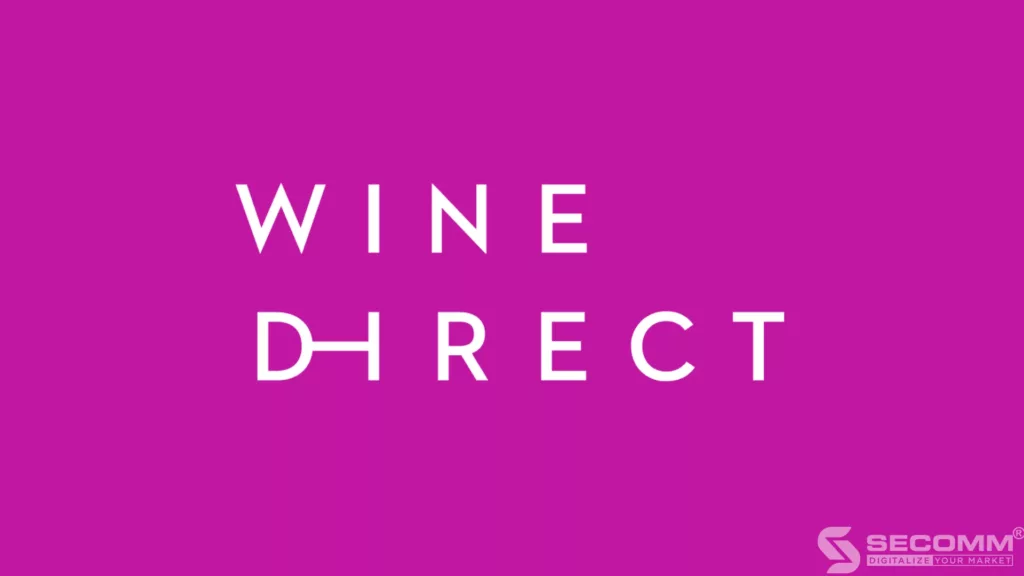
The WineDirect platform provides an intuitive, user-friendly interface tailored for businesses. Additionally, WineDirect offers a diverse range of free interface templates and features, facilitating easy development of the eCommerce system with just basic website development knowledge and skills.
WineDirect provides fundamental features such as website analytics, sales tools, and options for business event registrations to boost customer engagement. This allows businesses to save time and unnecessary costs associated with other software.
Businesses can possess essential information for creating customized offers and discounts tailored to each customer category, based on statistics gathered through integrated tools. Consequently, businesses can develop personalized shopping experiences and drive higher sales volumes, achieving outstanding results and meeting development needs.
The platform has leveraged and optimized the WineDirect application, specially designed for mobile devices and is highly flexible for the wine industry. Through the application, businesses can manage products, eCommerce systems, advertising campaigns on the website, and customer information.
WineDirect provides integrated payment solutions on the platform, enabling businesses to have a seamless experience across two payment software, such as WineDirect Payments for businesses in the US and Canada, and eWay Payments for businesses in Australia.
With payment software, businesses are supported in processing orders through the website or in-store. Regarding shipping, the WineDirect platform can integrate with various shipping services (UPS, FedEx, Gliding Eagle, etc.), assisting businesses with detailed shipping information for each order and enhancing automation in the shipping process.
The WineDirect platform can integrate with ERP software, as well as the POS of the business (WineDirect POS, Napa Valley, Oztera, etc.), aiming to synchronize data between the POS system and the eCommerce system, including orders, inventory, wine club members, customer information, helping businesses increase automation in the operational process and manage information effectively.
WineDirect has integrated available marketing tools on the platform to help businesses save time in system development. This includes providing businesses with access to real-time sales reports, allowing them to send emails based on customer groups depending on marketing campaigns.
The WineDirect platform is a SaaS (Software as a Service) eCommerce platform with three main pricing plans as follows:
Similar to VineSpring, the WineDirect platform (SaaS) is suitable for businesses of various models and sizes that lack extensive experience in building eCommerce systems and technology. However, one platform limitation is its high usage cost, which increases with the business’s monthly sales volume.
Beyond the high usage cost, operational tools on the platform may be unstable, occasionally displaying errors on the system, such as payment statuses showing as ‘pending processing’ on the business side but appearing as ‘paid’ on the customer side. Despite this, WineDirect has a dedicated customer support team that efficiently addresses business issues, making it a preferred choice for many businesses.
Shopify is a well-known giant in the field of building eCommerce systems as a Software as a Service (SaaS). The Shopify platform is favoured in the market for its user-friendly nature, quick system-building time, and low initial costs, making it suitable for a wide range of businesses.
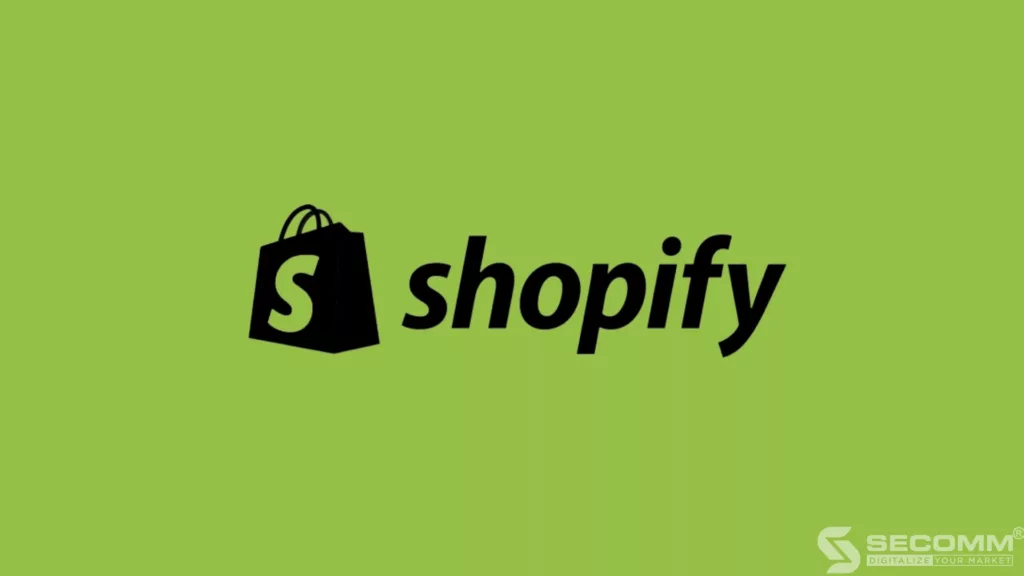
In terms of interface, Shopify provides many beautiful themes that are well-compatible across various devices. Businesses in the wine industry can choose from several specialized templates designed and offered specifically for online wine businesses by the Shopify platform. Additionally, businesses have the freedom to customize the interface by accessing HTML and CSS code to enhance the brand’s uniqueness. Therefore, businesses can deliver a seamless experience across different devices without affecting the user’s shopping process.
Basic and Advanced Features:
In addition to basic features related to orders, products, categories, and product management, the Shopify eCommerce platform allows businesses in the wine industry to access profiles and purchase histories to gather customer information. This enables businesses to personalize the shopping experience, from personalized content and product displays to the entire eCommerce journey.
This key aspect helps businesses make a positive impression on consumers and fosters a stronger relationship between both parties. Furthermore, with the mobile application developed by Shopify, businesses can control every aspect of the online store anytime, anywhere, including effective sales management, order fulfilment, and inventory management.
In addition to supporting direct payment features from the platform itself (Shopify Payment), Shopify also assists businesses in integrating other payment software such as Paypal, Stripe, SagePay, AliPay Global, etc. Regarding shipping software, Shopify collaborates directly with various major shipping service providers like USPS, UPS, and DHL to streamline the process and ensure more convenient shipping for businesses.
Shopify’s Global ERP Program provides businesses with a system that connects multiple eCommerce platforms with critical business databases such as finance and inventory to optimize operations and business processes. This program includes partnerships with leading global ERP providers such as Microsoft Dynamics 365, Business Central, Oracle NetSuite, Infor, Acumatica, and Brightpearl.
Shopify supports businesses in marketing through integrated software within the system. Examples include email software (MailChimp), sales channels (Facebook, Instagram), advertising (Google Ads), etc. Through these integrated marketing tools, businesses have the opportunity to increase sales, automate email marketing, and develop marketing campaigns tailored to specific customer groups.
Shopify has developed various service plans suitable for businesses to choose from based on their capabilities and scale:
In addition, Shopify has introduced other service plans to cater to diverse business needs:
Originally an industry giant in the Software as a Service (SaaS) eCommerce sector with characteristics of rapid system development time, as well as a startup cost suitable for many businesses and easy usability, this platform is suitable for small and medium-sized enterprises with limited experience in information technology.
However, in addition to the monthly fees for using additional utilities, Shopify also has limitations in terms of advanced features, unique features, and customization. Businesses must accept that certain features may not be available on the current website and may need to switch platforms when aiming to build a specialized system that aligns with their specific needs and ensures sustainable development in the future.
Read more:
WooCommerce is an open-source Content Management System (CMS) known as a plugin for WordPress, introduced in 2011. It is completely free and allows businesses to turn their WordPress website into an online store. Therefore, in addition to being suitable for customizing the interface, WooCommerce is also an ideal platform for businesses to have a website with a flexible blog section, high interactivity, and a more user-friendly experience.
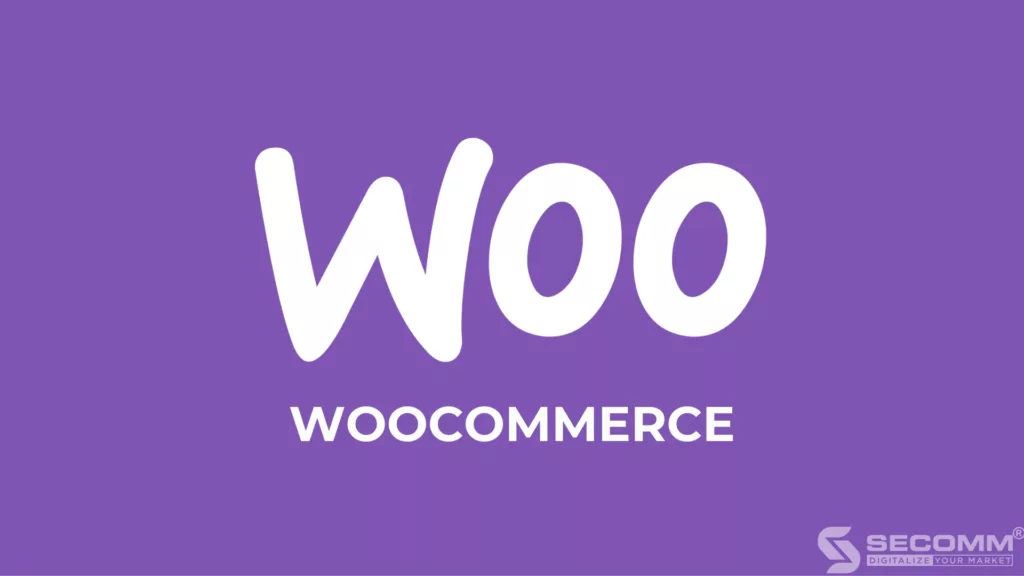
WooCommerce possesses and provides businesses with a rich library of forms designed for the wine industry, carefully crafted and user-friendly. Therefore, businesses can conveniently design and build an eCommerce system right from the beginning without needing in-depth technical knowledge
With the WooCommerce platform, businesses can integrate tools from management systems to features specific to the wine industry. For instance, the platform can integrate with Product Table, a tool that allows wine businesses to have an interface displaying product attributes and numerous high-quality product images, as well as filtering features.
WooCommerce allows and supports basic features such as inventory management, order processing, inventory optimization, SEO tools, discounts, price reductions, sales statistics reports, and easy integration with payment and shipping providers. In terms of advanced features, the WooCommerce platform supports businesses in the wine industry with opportunities for wholesale orders and discounts, boosting sales through the eCommerce system. However, the platform has some limitations in terms of specialized features for the wine industry, as making certain edits can potentially cause instability in the system.
For payments, businesses can use plugins to integrate payment gateways such as Stripe, PayPal, Apple Pay, and Square into the system, ensuring high security and safety.
Regarding shipping, businesses can integrate with various shipping providers that collaborate with WooCommerce, such as FedEx, UPS, and USPS, enabling efficient processing and optimization of the shipping process to provide the best shopping experience for consumers.
The WooCommerce platform allows and supports businesses with integrable business management software, typical examples being Odoo, Square POS, and WP ERP. This enables businesses to save time, and costs, improve business efficiency, and automate management processes.
Businesses can integrate marketing management software to support their operations, such as email marketing (MailChimp), advertising (Google Listings, Google Ads, Facebook), and analytics software (Google Analytics). This helps businesses increase traffic, promote repeat shopping, and optimize personalization for consumers.
The WooCommerce platform is an open-source platform, and thus, the platform itself is entirely free to use. However, businesses may incur development costs when utilizing the platform, such as domain registration fees ($15), hosting fees ($120/year), and system development costs (ranging from $3,000 to $10,000 depending on the complexity of the system).
WooCommerce is a suitable platform for wine businesses already familiar with WordPress and looking to expand their eCommerce systems, offering numerous basic features built with high availability from developers in the strong global community. However, WooCommerce is not perfect for businesses with a large number of products, as the system tends to be unstable with more than 2,000 SKUs.
The platform also has limitations in terms of customization and fine-tuning specific features because intervening adjustments can easily lead to system instability, and there is a high likelihood that the built-in features are not compatible with this platform. Additionally, to customize the system based on the available feature set, businesses may encounter significant difficulties and time-consuming efforts.
Magento is an open-source eCommerce platform known as one of the leading eCommerce platforms today, with many outstanding advantages such as high flexibility, a diverse ecosystem, and optimal security. Currently, Magento has two versions: Magento Open Source (free) and Magento Commerce (paid).
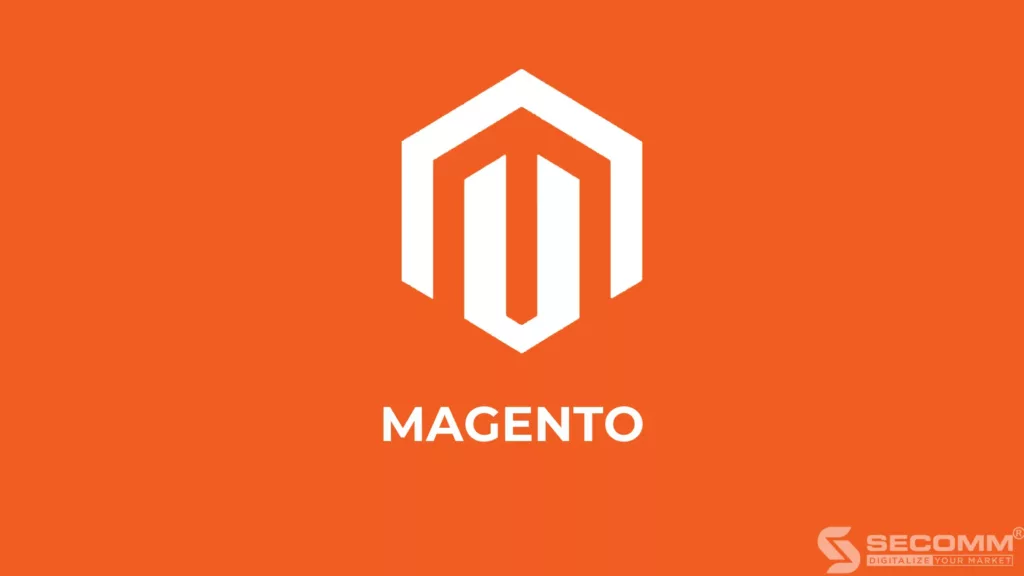
With the Magento open-source eCommerce platform, businesses may not have access to an extensive theme library as other eCommerce platforms do. However, businesses can fully customize the interface for a specialized eCommerce system, providing a comfortable user experience. To achieve this, businesses need an experienced technical team and careful investment.
The Magento eCommerce platform offers a highly diverse and advanced feature system, from basic to advanced, making it easy for wine industry businesses to quickly build and develop their systems in the short term and sustainably in the long term.
A variety of features ranging from Category Management, Content Management, Customer Management, Marketing Management, Order Management, Store Management, System Management, Cart and Checkout, to Reporting & Analytics.
Magento is known for its superiorly developed advanced features and extensions to meet the rapid development of the eCommerce market and the specialized requirements of each business. Thousands of advanced functions related to themes, products, marketing, optimal payment solutions, shipping, etc., have been built with flexibility and high availability, delivering outstanding results when integrated into the system, and meeting every operational and sustainable eCommerce development need of businesses.
Businesses can completely modify system functions, develop new specialized features to meet business needs, and quickly adapt to market changes. In addition, businesses can comfortably expand the scale of their business with the open-source Magento platform.
Regarding payments, wine industry businesses using the Magento eCommerce platform can integrate the most common payment methods such as card payments (ATM, Visa, Master…), e-wallets (Momo, Zalo Pay…), and payment gateways (OnePay, VNPay, PayPal, etc.), helping diversify the shopping payment experience.
For shipping, businesses can easily integrate with various shipping providers and popular shipment tracking applications on the market to optimize shipping and delivery processes. Additionally, wine industry businesses can develop shipping and delivery features tailored to their needs and customers to provide a convenient and fast delivery experience.
Magento is praised for its highly effective operation with most POS (Square…), CRM (Salesforce…), and ERP (SAP, Oracle, Odoo) systems. Through efficient integration of these software solutions, businesses can overcome manual operation limitations and increase automation for both back-office management and sales, ensuring high accuracy and operational efficiency for sustainable development.
For marketing management software, businesses can integrate various management software solutions, including email marketing (Mailchimp…), and advertising (Facebook, Google…), to support planning marketing programs, strategy setting, as well as handling and controlling data, seamless eCommerce business processes, and optimizing online business.
Additionally, Magento provides Magento BI tools or allows businesses to integrate with other Business Intelligence (BI) tools such as Power BI, Tableau, Looker, etc., to optimize business efficiency, easily consolidate and leverage data from the Magento system and other software for quick, efficient analysis and reporting, and to improve business strategy and growth optimization for the enterprise.
Inheriting the high scalability of the open-source platform, Magento can accompany businesses with every sustainable development business model, from newly established enterprises to expanded business systems, covering various business models such as B2B, B2C, D2C, and B2B2C.
Magento can support businesses to operate and expand into multiple websites, countries, and multiple currencies, and manage all within one system. Not only that, Magento also supports stable system operation even when the website experiences gradual or sudden increases in traffic over time or during peak periods in promotional campaigns, with the ability to handle up to 500,000 products and thousands of transactions per hour.
Magento is an ideal platform for any business venturing into the wine industry and implementing eCommerce. However, the cost issue is a significant obstacle, preventing most small and medium-sized wine businesses from choosing the Magento platform to build an eCommerce system.
According to estimates, a fully functional system developed on the Magento eCommerce platform typically incurs deployment and development costs ranging from $10,000 to $100,000 or more. In addition to the complex and advanced feature set, a crucial factor contributing to the higher deployment costs of Magento compared to other platforms is the requirement for an experienced and specialized team.
Magento is often the platform of choice for large businesses in the wine industry, whether B2B, B2C, or D2C, that already have an existing customer base and a long-term need for developing an eCommerce system. With this platform, businesses can continually develop components within the eCommerce system to ensure optimal operational efficiency and sustainable growth.
The high development costs, as well as the development timeline, which can range from 2-3 months to sometimes up to a year, are barriers that make it challenging for small and medium-sized businesses to comfortably choose Magento.
Choosing the right eCommerce platform is crucial in building an eCommerce system for businesses in the wine industry. This decision not only minimizes investment costs and shortens the time to build an eCommerce system but also helps businesses gain a competitive advantage in the industry and achieve sustainable growth.
On the other hand, an inappropriate platform choice can lead to significant time and cost investments for migration and platform conversion. Therefore, businesses need to consider their goals, and issues in the current model to choose the most suitable platform.
For small and medium-sized businesses, newcomers to the eCommerce market, or large businesses without the need to build a specialized eCommerce system, they can choose Software as a Service (SaaS) eCommerce platforms such as VineSpring, Winedirect, Shopify, or the open-source platform WooCommerce.
If businesses focus on industry-specific features such as developing a subscription revenue model and managing wine clubs, VineSpring and Wine Direct are suitable choices. WooCommerce is convenient for businesses that emphasize adjusting the interface. Shopify is suitable for businesses that want to quickly develop an eCommerce website with low initial costs.
For large businesses or those wanting to build a specialized eCommerce system tailored to the characteristics of their products, business model, or a platform that can accompany the sustainable development of the business, choosing comprehensive open-source platforms like Magento is necessary. With open-source platforms like Magento, businesses can develop special features, design interfaces freely, and not worry too much about the operating system.
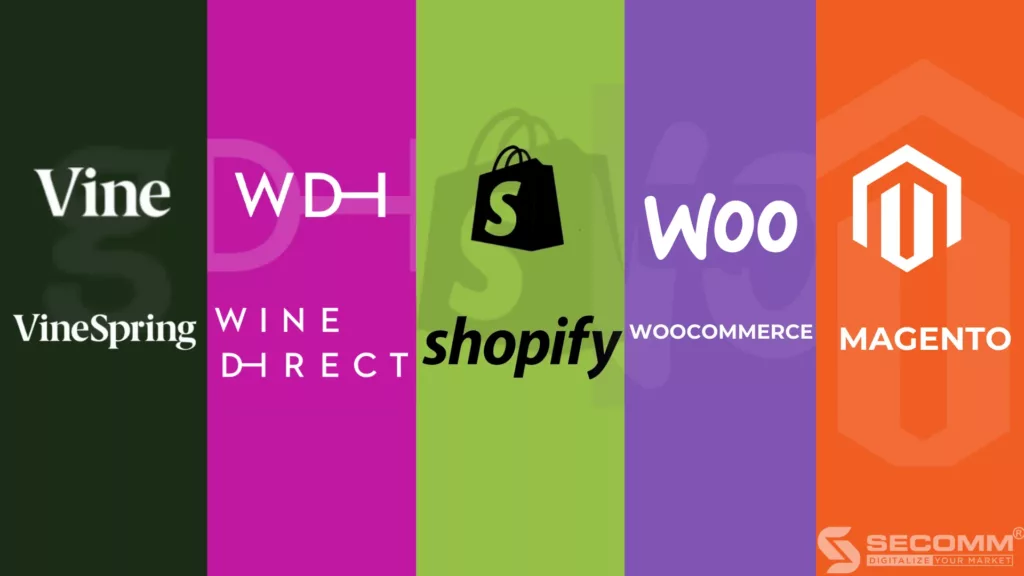
SECOMM confidently accompanies wine businesses on the path of deploying and developing sustainable eCommerce, with successful implementation experience for many wine businesses in various countries such as Singapore, the United States, Australia, Japan, and Vietnam.
Contact SECOMM for detailed advice on the development journey of the eCommerce system for your wine business!
 2
2
 8,613
8,613
 0
0
 1
1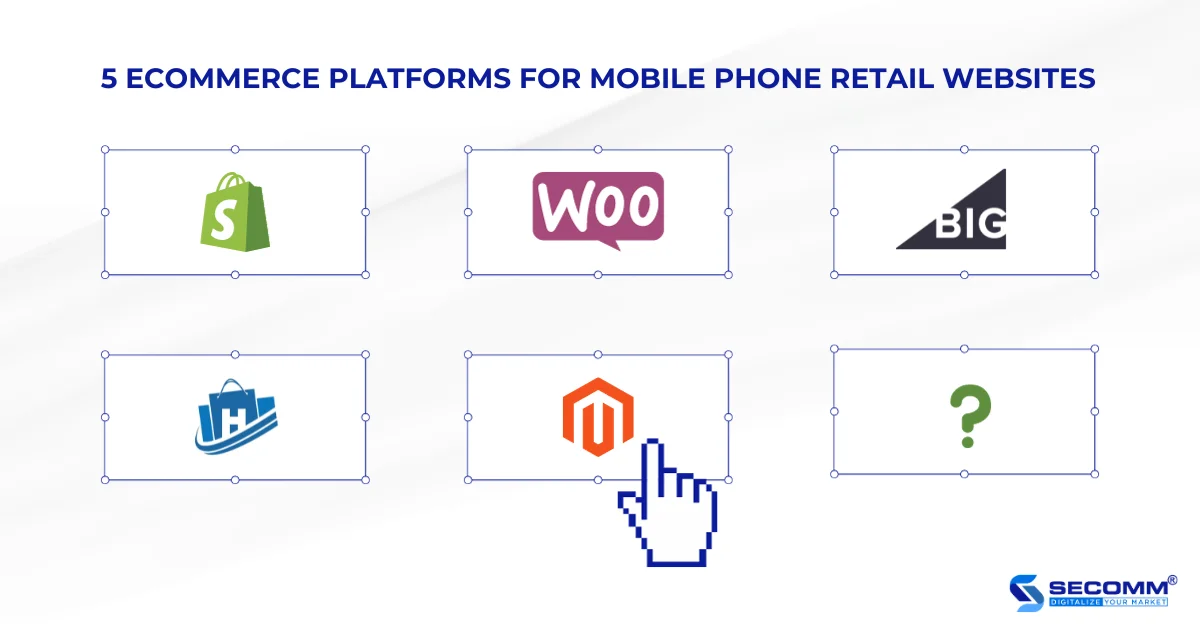
In recent times, eCommerce has been increasingly popular in the Vietnamese market and is becoming a potential business model pursued by many enterprises across various industries. Particularly in the mobile phone retail sector, the online market share of mobile phone retail systems is growing rapidly. For instance, The Gioi Di Dong – the largest mobile phone retail system in Vietnam, saw its online market share increase from 11.6% to 17.5% in just one month (from July to August 2021)
Nowadays, many mobile phone retail businesses in Vietnam often choose to implement eCommerce websites as their main channel in online commerce. Thanks to the effective development of website systems, many mobile phone retail businesses have not only seized the opportunity to boost revenue but also achieved sustainable business growth. The common factor contributing to this success lies in the eCommerce platform.
Each type of eCommerce platform has its unique features that can support businesses in developing their online presence. Software as a Service (SaaS) platforms are designed by providers with the entire system pre-built, including hosting, interface, features, and infrastructure maintenance. Therefore, businesses can easily build and operate a website system without much concern for technical issues and without investing too much time and money from the outset.
However, businesses using SaaS platforms will not own the source code and data, and the system’s scalability and integration capabilities are limited. Usage costs may increase over time. On the other hand, open-source platforms give businesses full ownership and control over the source code and data, allowing freedom in designing interfaces and offering high scalability and flexibility. Nevertheless, using open-source platforms often requires a specialized development team and more investment in terms of cost and time.
So, which eCommerce platform will be suitable for mobile phone retail businesses?
The user interface of an eCommerce system is considered the face and highest scoring aspect in online business. Therefore, besides meeting UI/UX standards and expressing the brand’s characteristics, products, businesses also need to focus on the presentation of product images on the website, ensuring synchronization and clarity.
This ensures a complete and satisfying experience for customers. The admin interface must be user-friendly, allowing easy navigation, control, and management of all data within the system.
With online retail of mobile phones, the eCommerce system’s feature set needs to be diverse, ranging from basic to advanced and specialized, aiming to provide an optimal experience for buyers and facilitate the efficient and sustainable development of the eCommerce system.
Some essential functions in the eCommerce website system for mobile phone retail businesses include:
To have a seamless online business system, businesses often need to integrate eCommerce platforms with other software and technology platforms they are currently using, such as:
The chosen eCommerce platform must have flexible, seamless, and effective integration capabilities with this software without affecting the execution level of each system. This integration helps businesses overcome the limitations of manual operation and increases automation for both back-office management and sales, ensuring high accuracy and operational efficiency for business development.
eCommerce platforms need to have high scalability to adapt and grow alongside businesses of all models. Choosing the right platform can accompany businesses from startup and SME stages to becoming large enterprises, and from B2B, B2C, and D2C models to B2B2C, helping save long-term budget while still building a sustainable, efficient system suitable for the business.
High scalability meets all future development needs of the business, such as expanding multiple websites, across countries, currencies, channels, etc. Moreover, platforms with high scalability ensure stable system operation regardless of increasing traffic and transactions over time.
Shopify is a well-known giant in the field of building eCommerce systems as a Software as a Service (SaaS). This platform is favoured for its user-friendly nature, quick build time, and low initial costs, making it suitable for many SMEs.
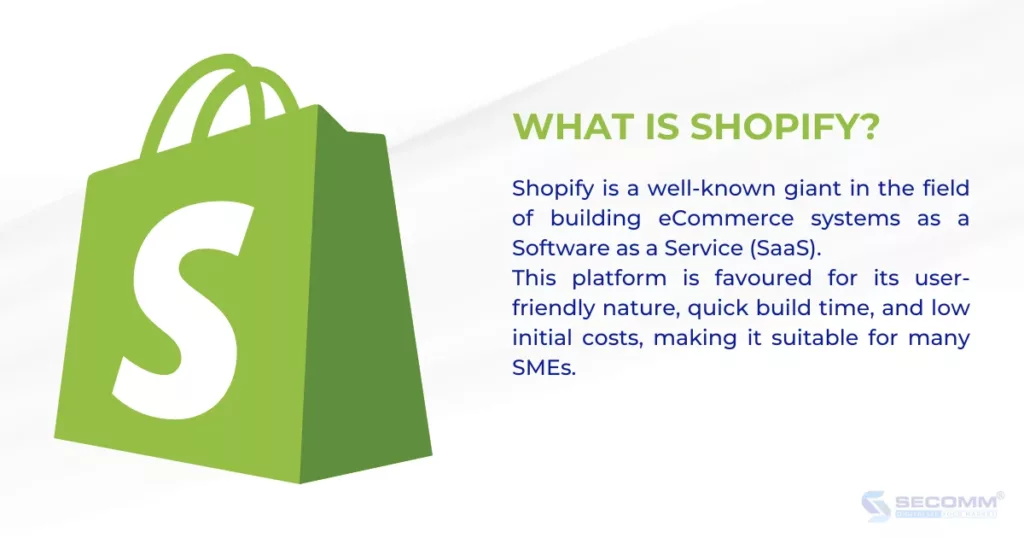
Shopify provides attractive, responsive themes suitable for various industries, including mobile phone retail. While adhering to UI/UX standards, it lacks customization options for businesses to showcase their unique branding.
The admin interface is user-friendly on desktops, allowing easy management of the website’s aspects. However, mobile functionality is limited, restricting businesses to perform specific functions on the mobile version.
Shopify’s functionality system is comprehensive, meeting both the basic and advanced needs of small and medium-sized enterprises. However, accessing advanced features requires additional monthly payments, leading to increasing usage costs. Shopify, however, lacks certain features crucial for mobile phone retail, aside from instalment payment options.
Shopify restricts access to the source code, making integration with third-party software challenging. Businesses can only integrate with partner software available on the platform or those directly developed by Shopify.
Scalability on the Shopify platform is limited because businesses cannot modify or upgrade the website source code. Therefore, it’s often used by mobile phone retail businesses in their early stages.
Shopify offers various service packages to cater to different business needs, ranging from $29/month for Basic Shopify to $2000/month for Shopify Plus. However, businesses may face limitations in advanced features, necessitating a platform switch for a specialized and sustainable system.
→ Overall Rating based on 5 criteria: 2/5
Shopify is suitable for SMEs that want a cost-effective and quick eCommerce system. However, it falls short in advanced features, specific functionalities, and customization options. Businesses must accept the limitations and be prepared to switch platforms for a tailored and sustainable solution in the future.
WooCommerce is an open-source CMS plugin for WordPress introduced in 2011, completely free, enabling businesses to turn their WordPress websites into online stores.
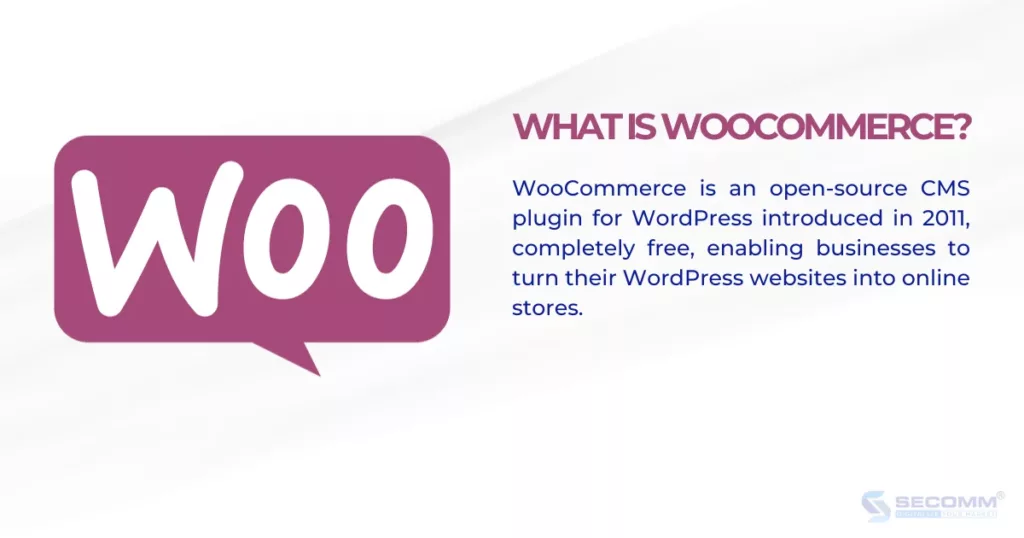
WooCommerce offers a diverse library of templates for mobile phone retail and electronic goods, designed meticulously and user-friendly. This allows businesses to conveniently design and build an eCommerce system from the start without requiring in-depth technical knowledge.
Because WooCommerce is a WordPress plugin, administrators continue to manage the website through the WordPress interface, making it easy for businesses already using WordPress to adapt, use, and navigate the system.
WooCommerce has many features, both basic and advanced, to support businesses in operating an eCommerce website. However, the platform has some limitations regarding specific features for mobile phone retail. Although it’s open-source, developing unique features on WooCommerce can be challenging and may lead to system instability.
Third-party software integrates well with WooCommerce, helping businesses save time, and costs, improve operational efficiency, and automate management processes.
WooCommerce’s most significant drawback is its limited scalability. The platform tends to become unstable and easily overloaded when there are more than 2,000 SKUs or too many themes and plugins on the system.
WooCommerce is an open-source platform, so it’s entirely free to use. However, businesses need to pay for additional services such as domain registration ($15), hosting fees ($120/year), and system development costs (ranging from $3,000 to $10,000, depending on system complexity).
→ Overall Rating based on 5 criteria: 3/5
WooCommerce is a good platform for businesses currently using WordPress and looking to develop an eCommerce system. However, the platform has limitations in customization and adjusting unique features. Intervening in the system is likely to cause instability, and there is a high probability that the built-in features are not compatible with the platform. Additionally, to customize the system based on the existing feature set, businesses will need to invest a significant budget and time.
BigCommerce is a SaaS platform based in the USA with over 600,000 online stores used by consumers worldwide.
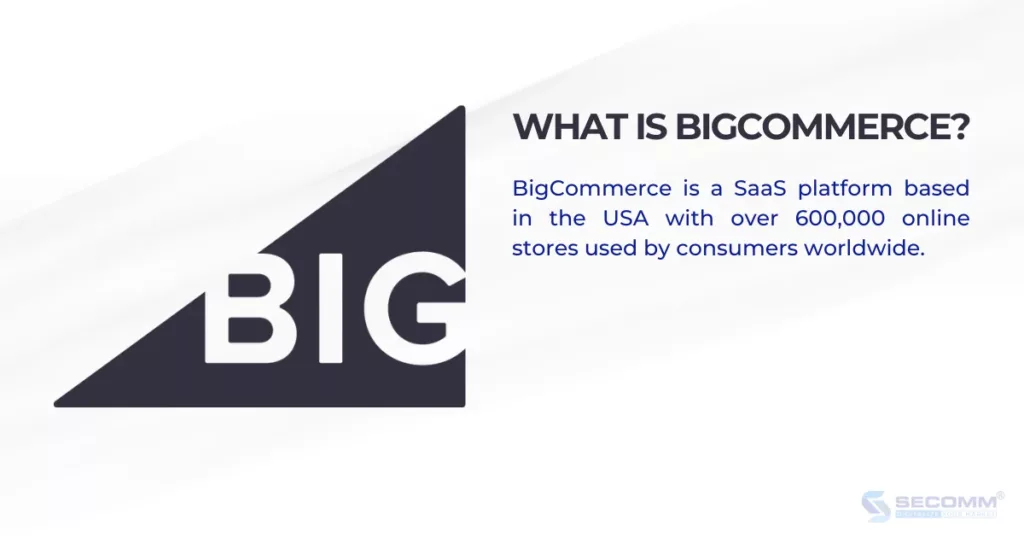
BigCommerce possesses a diverse theme repository with over 160 templates, catering to various industries, including mobile phone retail and electronics. All these templates are designed following UI/UX standards, allowing for easy adjustments to fit the brand.
For the administrator interface, businesses can manage their stores on a real-time and easily trackable screen.
BigCommerce’s functionality is relatively comprehensive, meeting basic and advanced needs, as well as specific features for mobile phone retail businesses. However, since BigCommerce is a SaaS platform, businesses cannot modify the source code or develop additional features not already available on the platform. Businesses can only use the features provided by BigCommerce or those offered by the platform’s partners.
Some notable advanced and specific features available on BigCommerce suitable for mobile phone retail businesses include multi-currency support, advanced SEO, rating and review features, advanced reporting, and instalment payment capabilities.
BigCommerce has a relatively high integration capability, allowing integration with many popular third-party software to support business operations.
Some software that can be integrated with BigCommerce includes various payment gateways (Stripe, PayPal, ApplePay, Checkout), shipping solutions (ShipStation, Amazon Shipping, Easyship, Route), ERP systems (NetSuite ERP, Acumatica Cloud ERP), CRM (HubSpot, Revamp), and marketing tools (email marketing, social media integration).
The system’s scalability depends on the BigCommerce service package that the business is using. The platform can support business expansion into new markets, multiple currencies, and languages. Additionally, BigCommerce can support stable system operations for businesses handling thousands of SKUs.
BigCommerce currently supports three bundled solutions and one on-demand solution:
→ Overall Rating based on 5 criteria: 3/5
BigCommerce is almost a comprehensive SaaS platform for businesses entering the mobile phone retail eCommerce journey. The platform can be suitable for various business models, including B2B, B2C, and B2B2C, depending on the chosen subscription package. However, the limitation of using this platform is that businesses are restricted in their ability to customize functions on the system, limited in annual revenue with each subscription tier, and unable to own the source code.
Haravan, founded in 2014, stands as one of the renowned platforms in the Vietnamese market, boasting over 50,000 businesses and consumer brands. It operates as a service platform modelled on Shopify.
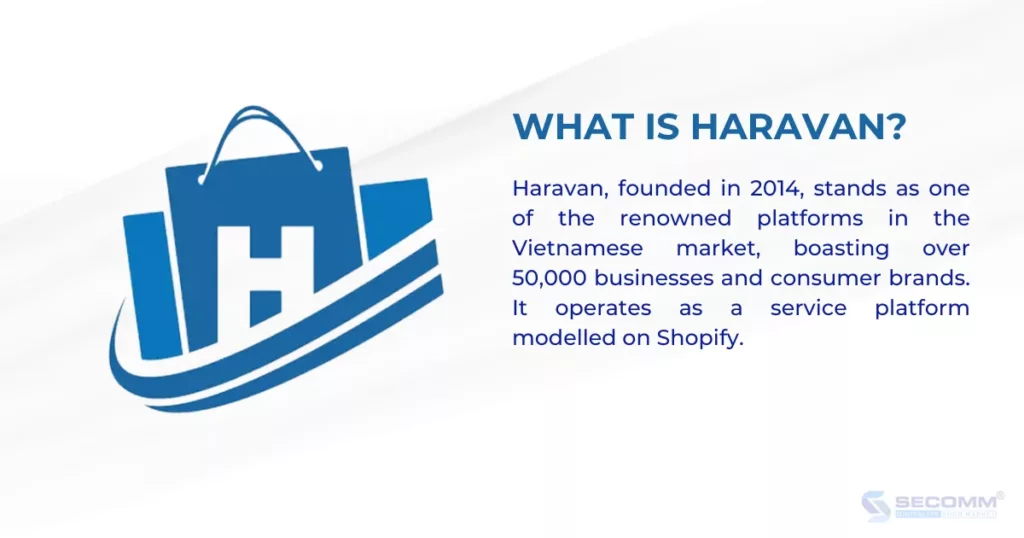
Similar to other SaaS platforms, Haravan boasts a diverse theme repository with over 400 templates, all designed following UX/UI standards. Beyond that, businesses can customize the interface to align with their distinctive brand identity. The admin interface, supporting the Vietnamese language, ensures a user-friendly experience for businesses.
Haravan offers a comprehensive set of both basic and advanced features, enabling businesses to swiftly establish an eCommerce website. The platform includes specific functionalities tailored for mobile phone retail, such as installment payment options. However, akin to Shopify and BigCommerce, businesses cannot develop additional features beyond what Haravan offers in its repository.
Integration with third-party utilities outside Haravan’s ecosystem can be challenging, representing a significant limitation of service-type platforms. However, it does support integration with widely used services in Vietnam, including various payment methods (Momo, VNPay, ZaloPay, etc.), shipping services (Giao Hàng Nhanh, Viettel Post, DHL), and management tools (CRMViet, Teamcrop).
Haravan’s scalability is limited; it supports multilingual and multi-currency features but lacks the capability to expand to multiple websites or efficiently manage extensive data on the platform.
To use Haravan, businesses need to pay a reasonable monthly fee ranging from 200,000 VND to 3,000,000 VND, depending on business needs:
→ Overall Rating based on 5 criteria: 3/5
Haravan is a suitable platform for businesses in Vietnam with limited technology experience and budget constraints. However, as businesses grow, Haravan may not provide sufficient functionality to sustain operations. Eventually, transitioning to more specialized platforms like Magento, WooCommerce, or OpenCart becomes necessary, albeit with challenges such as costs, time, and human resources.
Magento is an open-source eCommerce platform with deep expertise in online commerce. It currently offers two versions: Open Source (free) and Commerce (paid). Recognized as one of the most comprehensive eCommerce platforms, Magento boasts diverse features, high flexibility, scalability, a diverse ecosystem, and optimal security.
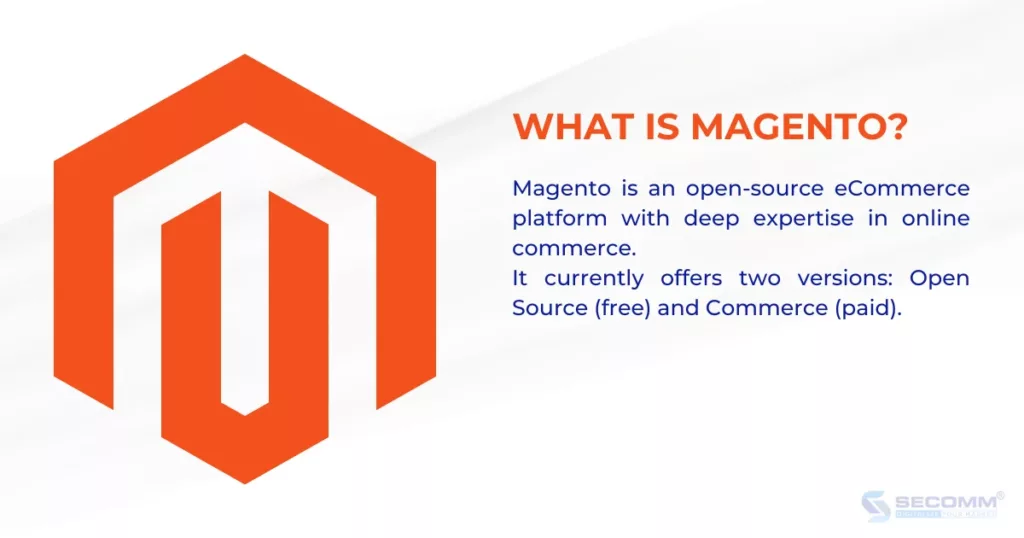
Unlike other platforms, Magento doesn’t have an extensive theme repository. However, each theme is meticulously designed, unique, adheres to UX/UI standards, and emphasizes high aesthetics to convey brand and product values, attracting customers to the system.
Businesses can save costs and time by using available themes, while also having the option to customize for brand identity. Additionally, businesses can fully design their interface, enhancing brand recognition, though this requires careful investment in design time and costs.
For the admin interface, Magento 1 was criticized for being challenging to use. However, Magento 2 introduced a more intuitive dashboard, making navigation easier, user-friendly, and adaptable.
Magento’s eCommerce platform has a diverse and deep feature system, catering from basic to advanced and specific functions. This allows mobile phone retail businesses to easily and rapidly build and develop their system in the short and long term. Basic functions include Category Management, Content Management, Customer Management, Marketing Management, Order Management, Store Management, System Management, Cart and Checkout, and Reporting & Analysis.
Specialized features include support for multiple languages, currencies, stores, Progressive Web Applications (PWA), Multi-Source Inventory (MSI), ElasticSearch, etc., enhancing the customer experience and accelerating the shopping process.
Magento excels in easy integration with third-party software for payments (credit cards, e-wallets, payment gateways, cash on delivery), shipping (Fedex, DHL, local carriers), management software (POS, CRM, ERP), and marketing tools (email marketing, advertising).
Magento ensures stable system operation even with increasing traffic over time or sudden spikes in business campaigns. It can handle up to 500,000 products and thousands of transactions within an hour. Magento supports the expansion of multiple websites for various countries, all manageable on one screen, allowing businesses to access and manage data for multiple websites/stores simultaneously.
One significant limitation for mobile phone retailers opting for Magento is the high initial development cost. A fully functional Magento system development is estimated to range from $10,000 to $100,000. Beyond complex and advanced features, the need for an experienced professional team contributes to the higher implementation costs compared to other platforms.
→ Overall Rating based on 5 criteria: 4/5
Magento is a comprehensive platform suitable for mobile phone retail businesses, whether B2B, B2C, or D2C, especially those with an existing customer base and a desire to develop a long-term eCommerce system. With Magento, businesses can continuously develop components of the eCommerce system, ensuring optimal performance and sustainable growth.
Choosing the right platform for eCommerce is crucial for mobile phone retailers. An accurate choice helps businesses shorten development time, save costs, and maximize resources to achieve the highest revenue levels. SECOMM understands the challenges facing mobile phone retail businesses and provides expert advice.
Contact SECOMM now for a free consultation!
 2
2
 10,879
10,879
 0
0
 1
1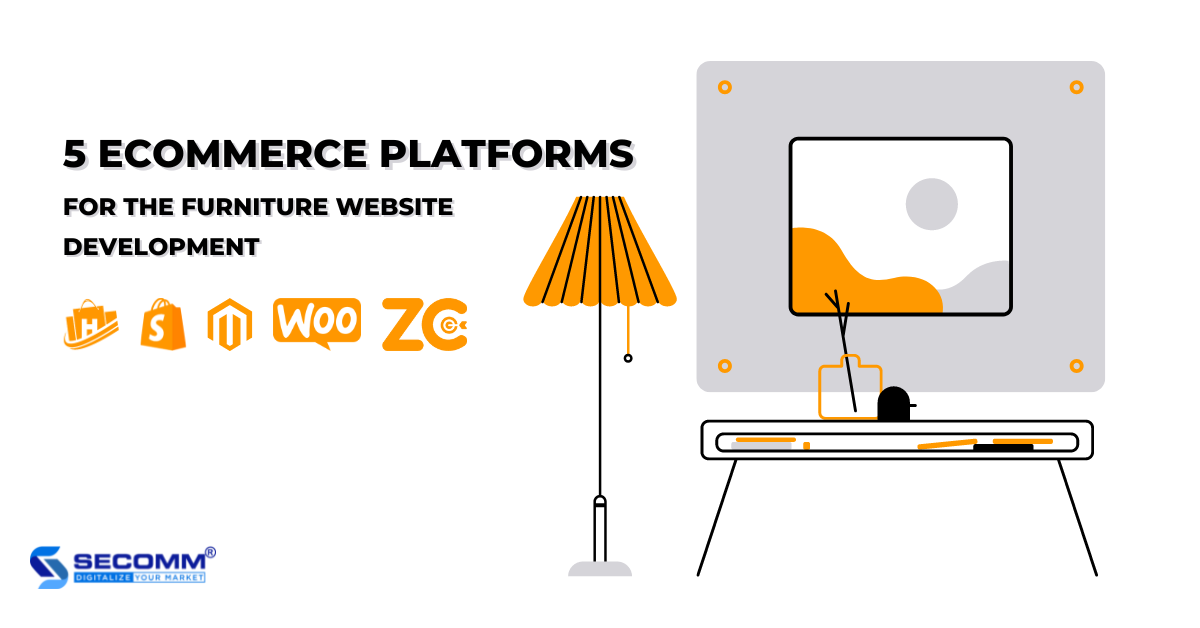
eCommerce is currently developing into a fresh and promising sales channel for furniture companies in addition to the traditional sales channel. Businesses must work hard to sustain and achieve breakthrough growth through eCommerce platforms, though.
As a result, numerous furniture companies started developing online furniture business websites and found surprising success, such Sieu Thi Noi That va Trang Tri Baya, Nha Xinh, Cozy, or Noi Phat Hoa Phat.
These websites’ success can be attributed to their early selection of an adequate and suitable eCommerce platform. Which platforms are appropriate for the furniture industry, then?
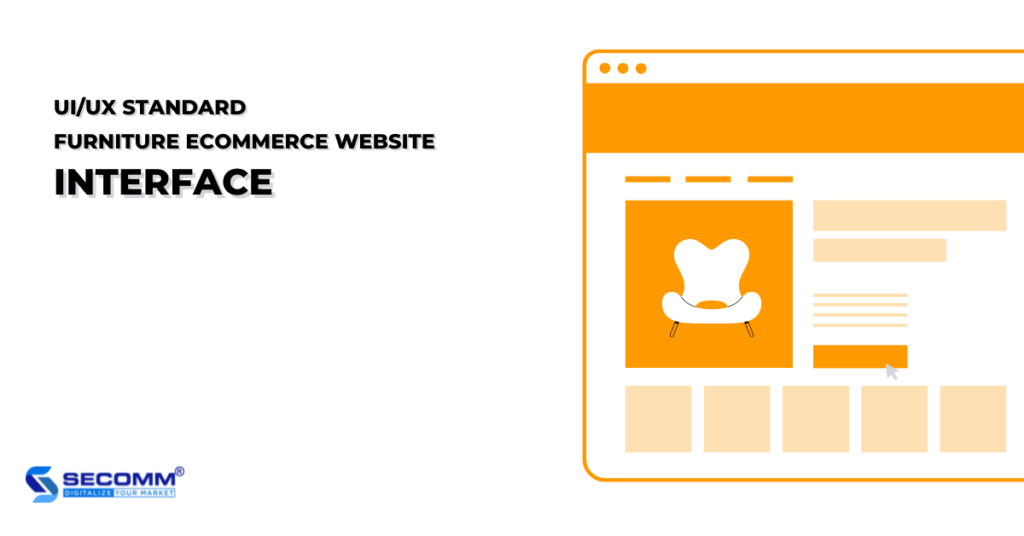
The first criterion businesses set when developing an eCommerce website is a standard UI / UX interface, friendly to users who enjoy shopping for furniture online and other home goods to increase customer interaction.
Similar to eCommerce websites in other sectors like fashion, electronics, etc., websites in the furniture sector must feature stunning and high-quality photographs and videos.
This makes it simpler for companies to communicate product information to customers, especially with banner advertisements that have an easy-to-use interface and a pleasing style that will pique shoppers’ interests.
Businesses also need to consider other concerns including call-to-action button placement, cross-device compatibility, and layout designs that display a range of product designs from the navigation bar to page-by-page details.
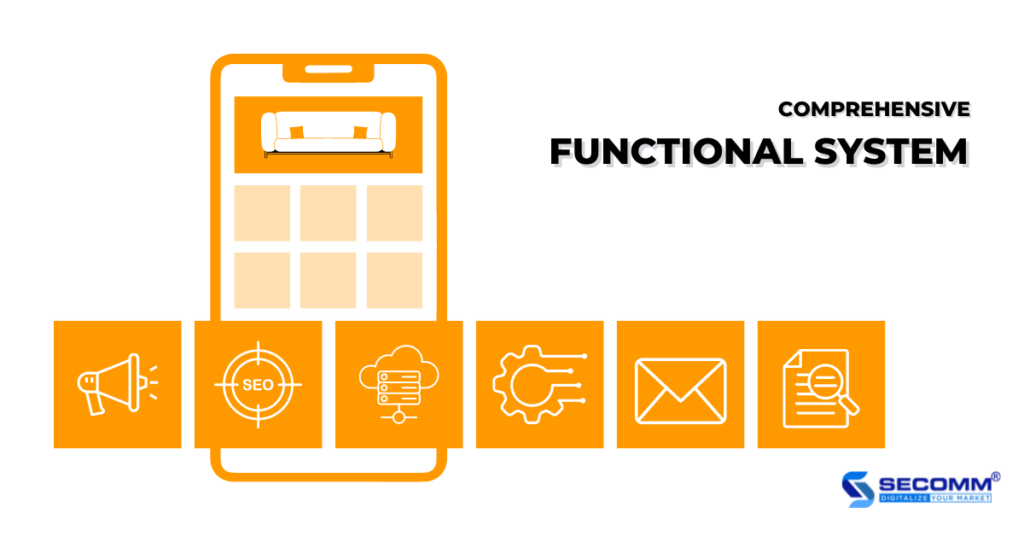
Furniture firms need a functional system from basic to advanced to fully meet consumers’ buying expectations and maximize the user experience. This system should include:
Businesses also need to develop some additional specialized features to address the furniture industry’s “own challenge,” such as:
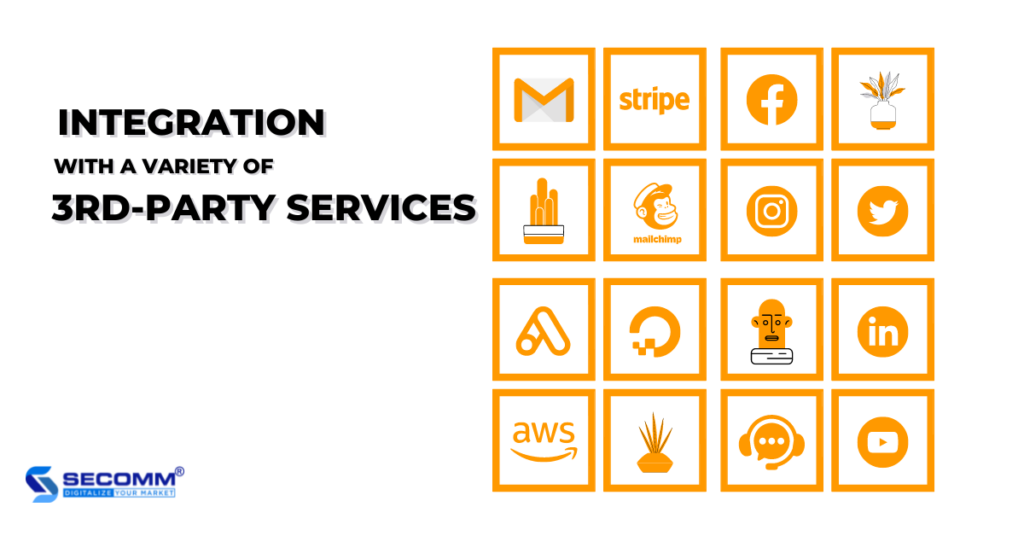
Furniture businesses frequently integrate a range of payment options, shipping services, management software, and business analysis tools to optimize eCommerce business systems in order to provide customers with a comprehensive shopping experience.
Some popular payment methods businesses can integrate on the website to diversify payment methods to help customers have many choices such as card payment; eWallet; payment gateways.
Businesses might take into consideration software like ERP (SAP, Salesforce, Oracle), among others, when integrating back-office administration and operation software.
Finally, incorporating BI tools like Tableau, Looker, etc. will aid in the long-term analysis of business plans.
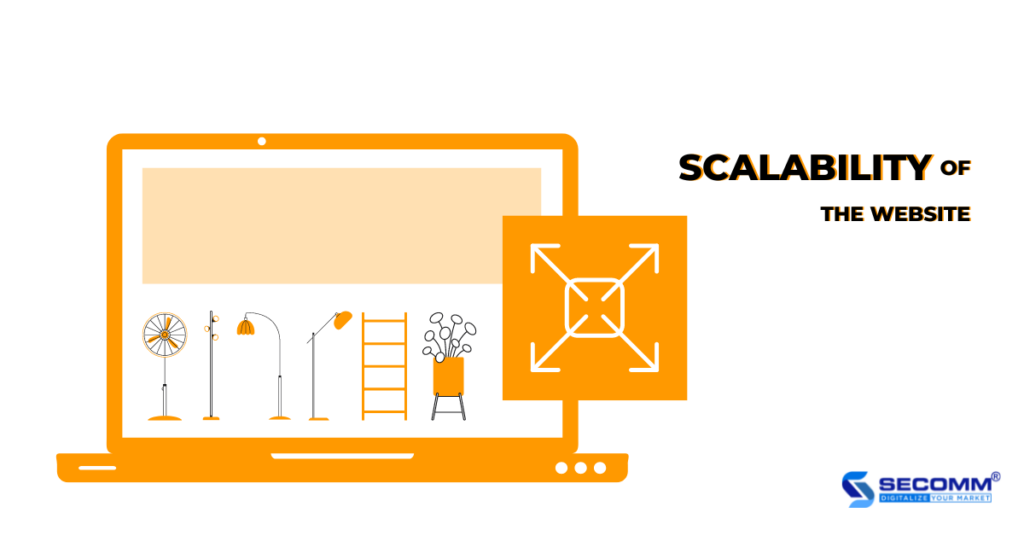
Businesses that are just starting to use eCommerce won’t concentrate on the website’s scalability in the future because platforms that provide this feature are sometimes hard to find. But tactically, spending money on a platform that facilitates this function will provide organizations an advantage over rivals in the market.
These aid furniture companies in making necessary adjustments, creating new features, and expanding their online systems to support several stores, languages, and currencies in the future.
Haravan was founded in 2014 and is a very popular and popular eCommerce deployment platform in the Vietnam market with a variety of solutions for businesses and individual sellers.
Pros:
Cons:
=> Rating: 2/4
Haravan is suitable for start-up furniture businesses or SMEs (small and medium-sized enterprises) with operations mainly in Vietnam.
Shopify is a popular SaaS platform in the world that provides a variety of solutions for businesses of all sizes to successfully build eCommerce websites.
Pros:
Cons:
=> Rating: 2/4
Shopify is considered suitable for start-ups or SMEs with global operations.
ZielCommerce is an eCommerce platform with ready-made solutions specialized for the furniture industry.
Pros:
Cons:
=> Rating: 3/4
ZielCommerce will be the optimal choice for B2B, and B2C furniture businesses to deploy eCommerce websites or build mobile apps. However, this platform is not really popular in the Vietnamese market but is especially favored by foreign furniture retailers such as Frampo, Zeyka, etc.
WooCommerce is a free WordPress plugin that allows businesses to transform a regular WordPress website into a professional eCommerce website with full features and easy customization with just a few simple steps.
Pros:
Cons:
=> Rating: 3/4
WooCommerce will be suitable for furniture businesses who are familiar with the WordPress platform and want to develop an eCommerce system.
Magento is a popular open-source commerce platform in the field of eCommerce, with nearly 200,000 websites in use. Currently, Magento has 2 versions: Magento Open Source (free), and Magento Commerce (paid).
Pros:
Cons:
=> Rating: 4/4
Magento is appropriate for a range of furniture business types, including B2B, B2C, and B2B2C, as well as for various business sizes, including start-ups, SMEs, and major companies. However, large organizations use Magento because it is frequently relatively expensive to deploy.
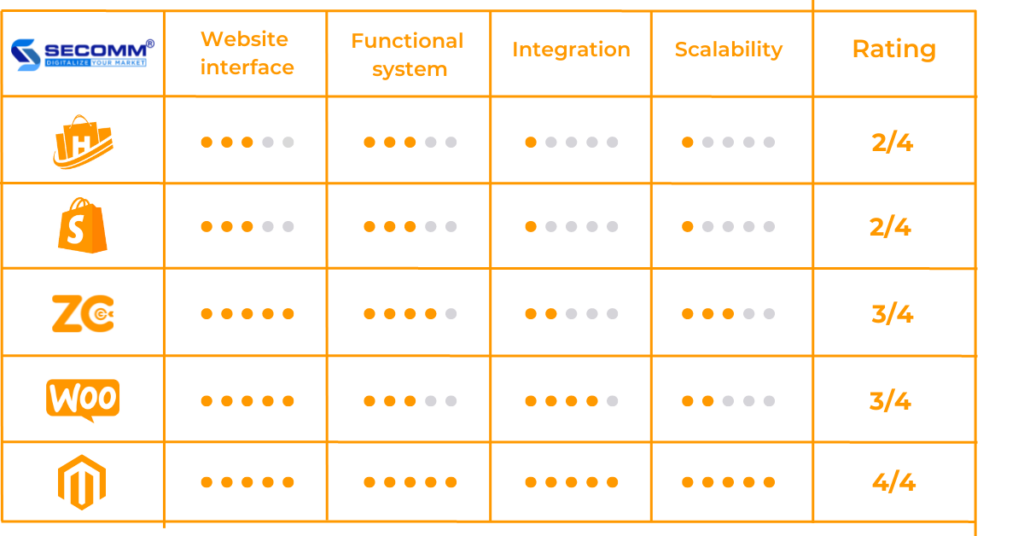
Choosing the right platform is an extremely important first step when building an interior eCommerce website. Choosing the right eCommerce platform will help businesses save budget and time to build a website while increasing competitive advantage and sustainable growth. On the contrary, when choosing the wrong platform, it will cost businesses a lot of time and budget to deploy and switch platforms many times. Therefore, businesses need to consider the goals and problems in the current model to be able to choose the most suitable platform.
With many years of experience in successfully implementing eCommerce for many customers in many countries, SECOMM specializes in providing consulting services with comprehensive and professional eCommerce implementation solutions.
Contact SECOMM today for free support and advice.
 2
2
 4,928
4,928
 0
0
 1
1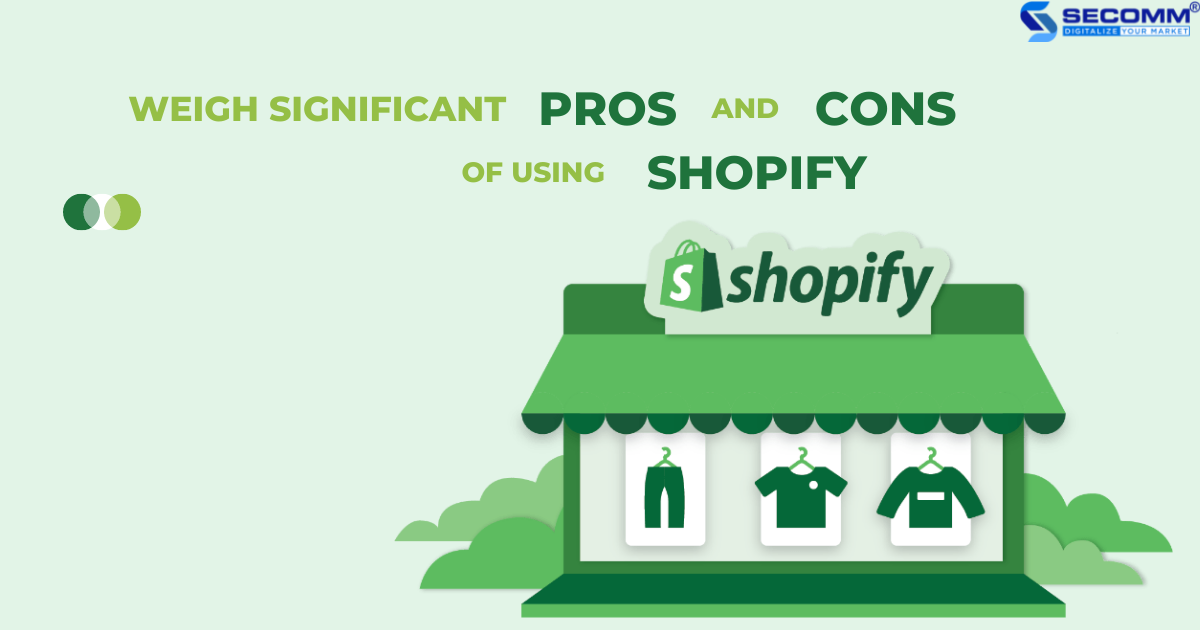
Today, for businesses of all sizes, eCommerce websites play an essential role in reaching and buying products for a wide pool of potential customers on the Internet.
Thus, choosing the right platform to build an eCommerce website is incredibly important. A good eCommerce platform will make it easy for businesses to provide Omnichannel experiences, personalize customer experiences, offer a variety of services, products, and more to increase conversions and drive online sales.
Some commonly mentioned platforms for building eCommerce websites are Magento, Woocommerce, Bigcommerce, etc. Definitely, each business will have its considerations, but one platform that always appears as a top choice is Shopify. In spite of the fact that the platform is highly rated, businesses should still weigh the pros and cons of this platform before making a final decision.
As a result, SECOMM has prepared this review, helping businesses understand what Shopify is, how it works, implementation costs, and especially the pros and cons of using this platform to build a comprehensive eCommerce website.
Before becoming one of the most popular eCommerce platforms globally, Shopify started as an online ski store called Snowdevil in 2004. Later, the company transformed into an eCommerce platform named Jaded Pixel.
In 2006, It was officially founded in Ottawa by young programmers Tobias Lutke, Daniel Weinand, and Scott Lake. Since then, the platform has gradually affirmed its position as a reliable and fastest-growing eCommerce platform in the last two years when most companies faced many difficulties because of the Covid-19 pandemic.
Up to now, the number of Shopify users has increased significantly. As reported by StoreLeads, there are currently about 2 million websites using the platform to build and develop online businesses. In the second quarter of 2022, the number of newly opened stores reached 150,928, an increase of 10.8% compared to the same period in 2021. In Vietnam alone, there are about 2,000 websites using the platform in operation, up 9.8% in the second quarter of 2022 over the same period in 2021.
Total revenue in the second quarter of 2022 reached $1.3 billion, up 16% over the same period in 2021, corresponding to a compound annual growth rate for three consecutive years of 53%. Gross profit in the second quarter of 2022 increased by 6% to $655.6 million compared to $620.9 million in the second quarter of 2021 (According to Shopify’s report).
While it is one of the most popular and user-friendly eCommerce platforms available today, businesses still need to determine if this is what they need to expand their business, all the advantages and disadvantages of the platform, mostly the cost issue.
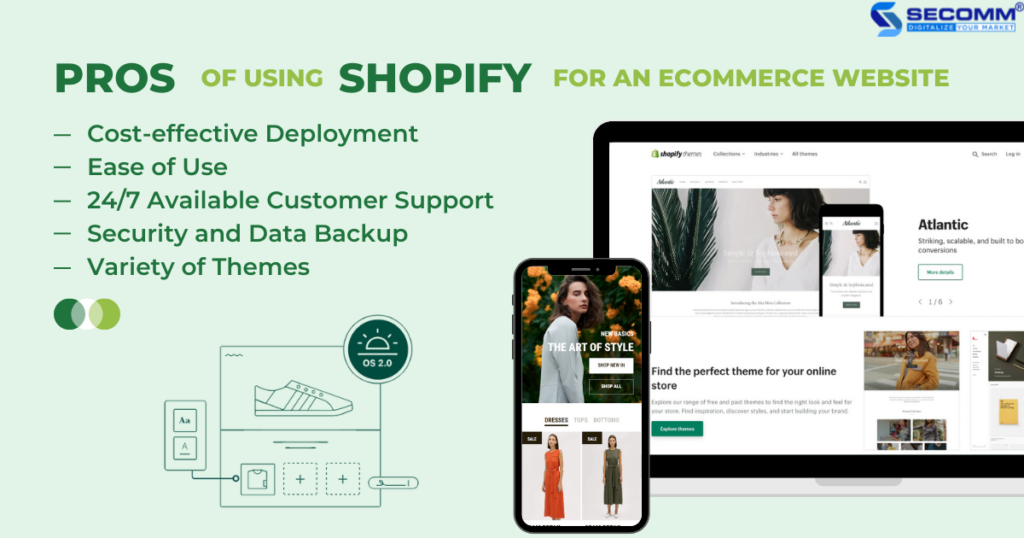
For a start, businesses can enjoy a 14-day free trial without a credit card requirement. When the free trial ends, businesses are encouraged to opt for one of the solution packages with suitable features and appealing promotions.
Packages | Price | Main Features | Unique Features | Ideally suited for |
Starter |
| Create product pages and get shareable links with product information, then send those links to customers via social platforms or message apps. | Merchants that sell on social platforms or message apps with no website in demand | |
Lite |
| – Shopify Buy Button. – Invoicing. | Merchants that sell on an existing website or social platforms. | |
Basic |
| – Customizable website editor. – Website hosting and free TSL certificate. – Unlimited number of products. – Analytical reports – Localization: currency conversion, website translation, regional domains. – Inventory Management. – Shopify POS. – Shopify Email. -Shopify Payment. – 24/7 Customer service. | – 2 staff accounts. – 4 inventory locations. – Basic reports. | Businesses who have just entered or intend to enter the eCommerce world and look for comprehensive eCommerce solutions. |
Shopify |
| – 5 staff accounts. – 5 inventory locations. – Standard reports. | Steadily growing eCommerce businesses. | |
Advanced |
| -15 staff accounts. -8 inventory locations. – Advanced reports. – Automation tools. | Large-scale businesses that sell internationally | |
Plus | Từ $2000/month. However, businesses can contact Shopify for a custom estimate. | – 9 expansion websites. – Up to 100 themes. – Exclusive Merchant Success Program, Shopify Plus Academy, Shopify Plus Partner , Shopify Plus Community on Facebook | Enterprise-level businesses that manage and operate multiple eCommerce websites. |
Table list of price, and features of Shopify solution packages.
First and foremost, because it is a SaaS platform, the cost to get started is usually quite low. Despite the fact that businesses must pay monthly fees, transaction fees, theme fees, and extension fees, Shopify is still significantly less expensive than open-source platforms such as Magento, WooCommerce, and others.
The development of an open-source platform necessitates the assistance of experienced programmers and takes a long time to deploy, whereas the SaaS platform is the inverse. That is the reason why starting with a SaaS platform, specifically, Shopify, will save businesses both time and expense.
Another cost highlight is that SaaS platforms, in general, and Shopify in particular, require an ongoing monthly fee rather than a one-time purchase fee to use the platform. This reduces the risk of businesses investing too much money in the platform but not meeting their expectations during the implementation process.
Furthermore, the Shopify platform is appropriate for different-sized businesses in the market. The Starter, Lite, and Basic packages are appropriate for SME businesses engaged in eCommerce. Shopify, Advanced, and Plus packages are ideal for large-scale businesses that require advanced features to run an effective eCommerce website.
The only way to adapt to the ever-changing market and quickly reach a wide pool of potential customers is for businesses to deploy eCommerce websites as soon as possible to avoid being left behind in the competition of the digital transformation race. One of the important factors when building an eCommerce website is choosing the right platform.
In particular, the top goal to consider when choosing an eCommerce platform is the ease of use. If a platform takes users too long to learn and implement or makes users dependent on external support, then the platform is not easy to use
Shopify has an easy-to-use interface for users with little programming knowledge. Moreover, Shopify is a SaaS eCommerce platform with a pre-designed system that offers hosting, interface, features, and technology infrastructure maintenance, allowing businesses to easily build and operate the website system with just drag and drop without worrying about technical issues.
Simple steps to get started with the eCommerce website implementation with Shopify:
This is one of the most crucial factors influencing users’ decision to use Shopify. Difficulties and obstacles are inevitable when building an eCommerce website, so Shopify has assembled a reliable and trusted team to assist users.
As a result, if your business requires assistance, assistance is available 24/7. Businesses can reach Shopify via email, chat, and a hotline worldwide. What’s more, users can access community forums and useful documents for developing eCommerce websites on this platform, mostly through the Shopify Support Center.
The Shopify platform runs on PCI (Peripheral Component Interconnect) compliant servers, allowing merchants to accept credit card payments. Secure Sockets Layer (SSL) encryption is enabled on all Shopify websites to secure visitor data, while a backup system allows businesses to store and save data regularly by exporting data to a CSV file.
As an outcome, the platform encourages the addition of an advanced backup solution from the Shopify Store, such as the Rewind app, as it is seen as a lifesaver if users accidentally delete content such as products or images or a video demonstration. To keep your eCommerce website secure, simply back up your data on a regular basis and use a strong enough admin password.
The interface is the appearance of a business’s eCommerce website. The more appealing the website interface, the more likely it is to retain customers, attract more visitors, as well as generate more conversions.
Shopify understands the importance of a website interface, so it has made a host of available themes, both free and paid, suitable for a wide range of businesses and fields, making it simple for businesses to choose from.
The free Shopify themes are ideal for startups, small and medium-sized businesses, and individuals. Businesses can customize their eCommerce website according to their needs and brand features by using features such as responsive web design, product filters, and product color display templates.
However, free themes have some downsides, including a limited number of themes, limited design, and a lack of advanced and specific features, which makes website customization difficult.
In fact, free themes are great for launching an eCommerce website. Premium interfaces, also known as paid themes, will be more suitable for large-scale businesses or businesses on the rise, with an average cost of around $140-$180/theme.
Shopify’s paid themes include advanced integration features such as live chat support, newsletter popups, upsell features, faster page loading, and much more. Thereby, businesses can run an eCommerce website automatedly and smoothly.
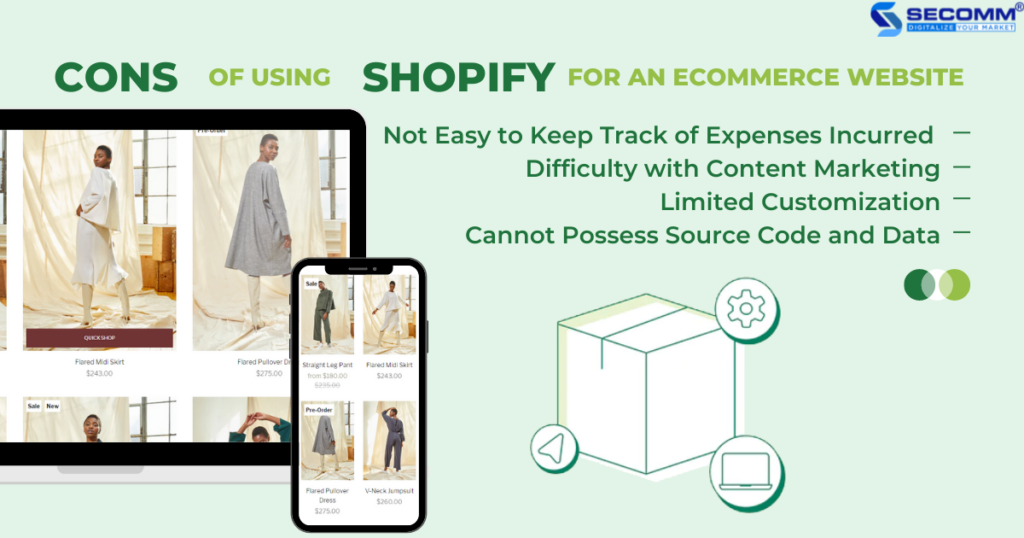
The cost of using Shopify, besides the notable pluses, the platform has a small but enough minus to make some businesses hesitate to start.
In addition to the monthly fee for using the enterprise platform, businesses must pay for other costs such as themes, applications, extensions, marketing features, sales, and SEO on a monthly basis with no long-term possession.
For example, to use the Free Shipping & Hello Bar application that offers free gifts, free shipping, or other types of promotions, users will buy for $8.95/month, which means ongoing monthly in regards to other expenses, businesses will pay an additional $8.95 for this app until it is no longer used.
When there are small expenses incurred each month, it is difficult to control cash flow for large-scale businesses that have to manage and operate many websites at the same time.
Meanwhile, open-source platforms require a one-time purchase fee rather than an ongoing monthly fee. Although the features are not yet available and take a long time to program, businesses can possess those features for eCommerce websites in the long run. Thereby, it makes cash flow management more convenient and effective.
It is a great way to promote your eCommerce website. Users can use Shopify to blog and optimize SEO, drive free traffic, and improve brand positioning.
However, this blogging feature on Shopify is not as user-friendly as WordPress. Some of the criteria Shopify can improve regarding blogging and content writing include:
This will be a barrier for businesses when using Shopify to promote eCommerce websites by optimizing SEO if the content is a core element of the business’s marketing strategy.
Another limitation of Shopify is that the platform’s interface is customized using the Shopify Liquid setup. Meanwhile, many website developers are already familiar with the PHP programming language to customize the themes and templates of the website, it is a common technique used by WordPress.
Therefore, users who do not have much experience in programming will face many obstacles when using Shopify’s tools to customize the interface of the eCommerce website.
However, businesses of all sizes can still use other useful Shopify features like Shopify Themes, Shopify App Store, Shopify Blog, 24/7 support team, and more to set up an eCommerce website quickly and effortlessly.
Because the entire business’s website system is hosted on Shopify’s server, the ownership and control of the website source code will belong to Shopify, not the business. Similar to other SaaS platforms such as BigCommerce, Squarespace, Wix… Shopify has a Lock-in feature, which means that when converting a website from one platform to another, businesses will no longer be able to use the old website source code and have to rebuild from scratch on a new platform.
Similar to the source code, business data is also stored on Shopify’s servers, so data ownership and control are quite limited. This makes it difficult for businesses to connect data among internal departments or users’ personalization, etc. Especially when switching platforms, data loss or misalignment is often unavoidable.
Shopify will not assist in the event that businesses stop using the platform for any reason. The only asset businesses can keep and take away is a CSV report containing website information.
Hence, before starting an eCommerce website on the Shopify platform, businesses need to carefully consider the benefits and disadvantages of stopping using it to conclude whether Shopify is the best fit for business in the long run.
Going by this article, Shopify is one of the eCommerce platforms that many businesses would love to choose when deploying an eCommerce website. However, besides the outstanding advantages, there are still certain downsides, so businesses need to carefully consider and compare with other platforms before starting out.
With many years of experience in implementing eCommerce in many countries, SECOMM provides free consulting services with professional eCommerce solutions.
Contact us today for free support and advice!
 2
2
 4,729
4,729
 0
0
 1
1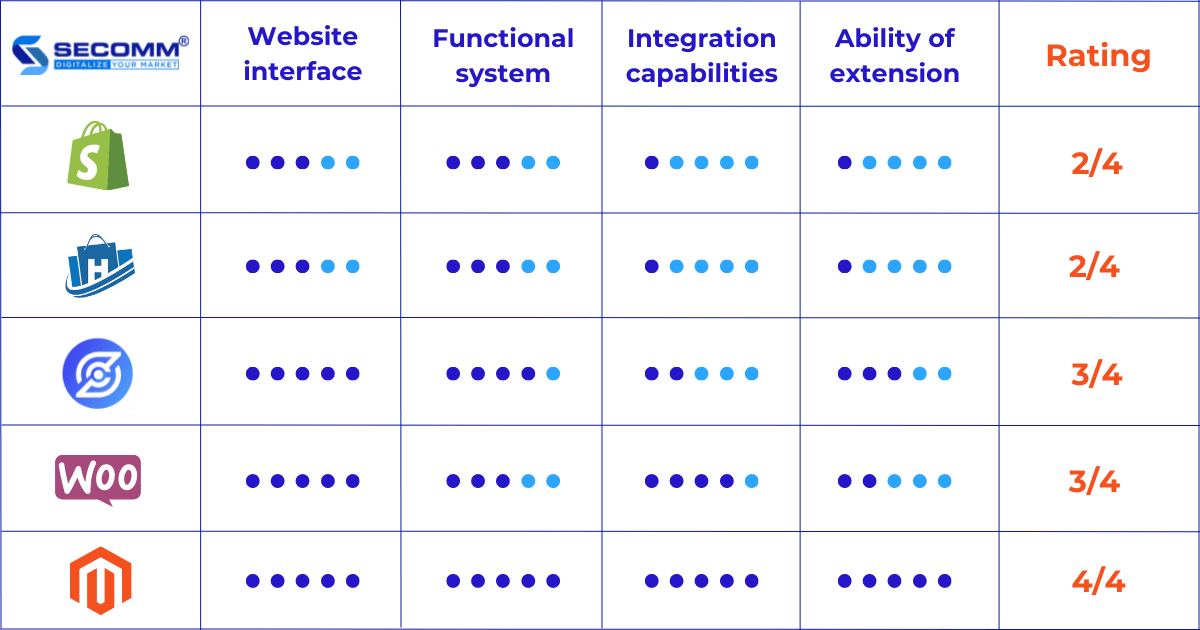
With the boom in recent years, ecommerce is a potential business form pursued by many businesses, especially egrocery stores. According to Statista, the grocery ecommerce market in the United States is likely to exceed $24 billion by 2023.
Realizing the potential of the egrocery market, several businesses have deployed grocery ecommerce websites early and experienced breakthrough growth, such as Grofers (Blinkit) and BigBasket in India, Bach Hoa Xanh, An Nam Gourmet, Farmer’s Market, WinMart, and Organica in Vietnam.
The common thing that makes the success of the above brands lies in the ecommerce platform. Therefore, to develop and operate an effective ecommerce website, the role of platforms is enormous.
So which ecommerce platforms are suitable for the grocery industry?
For the website interface, in addition to meeting basic needs such as UI/UX standards and showing the brand’s characteristics and the eGrocery industry, businesses also need to focus on the presented product images. Therefore, on the website, everything needs to be synchronized and precise.
The administrator interface (admin) must be easy to use, navigate, control, and manage all data in the system.
With eGrocery, the system of ecommerce features needs to be diverse from basic to advanced, solving complex characteristics of the grocery industry such as products with multiple units, weight difference, and price volatility, export-import complex warehouse, and synchronized data throughout the system.
Some functions required in a grocery ecommerce website system such as:
To have a seamless online volatility store system with multiple sales channels, businesses must integrate their ecommerce website with other payment services, shipping services, management software, analysis, report, and distribution systems:
This integration helps businesses overcome the limitations of the “rice-powered” process, increase the automation of the system, limit business mistakes, and ensure high accuracy and performance.
To accompany businesses to develop over time, from startups, and SMEs (small and medium enterprises), to large corporations, from B2B, B2C, and D2C business models to B2B2C, commerce electronics platforms must be highly scalable. High scalability helps meet all future business growth needs, such as multi-site, multi-country, and multi-currency, all manageable on “one screen.” Not only that, but highly scalable platforms also support businesses to operate the system stably regardless of the traffic in promotion campaigns.
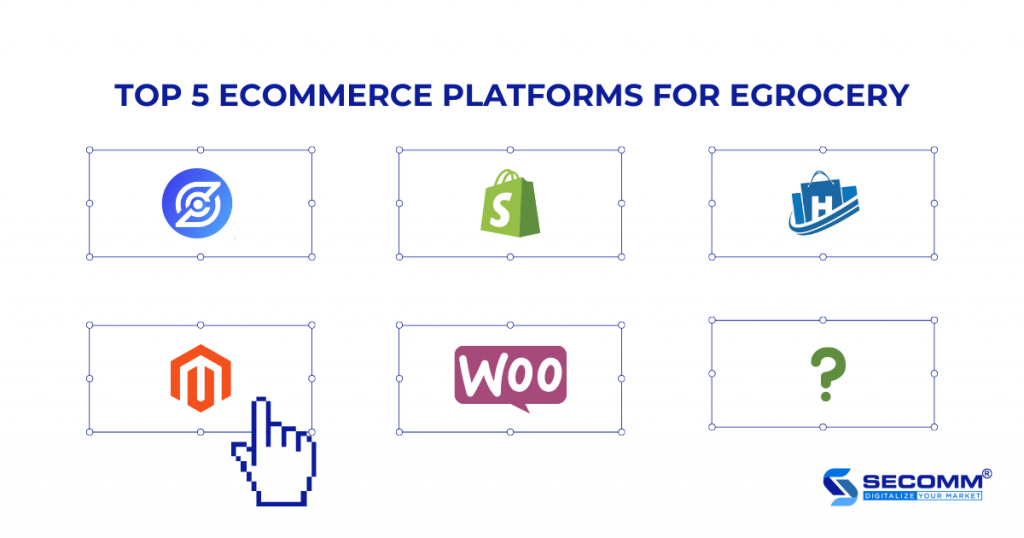
Ziel Commerce is a readymade grocery ecommerce platform with all the features designed to support an online grocery store business.
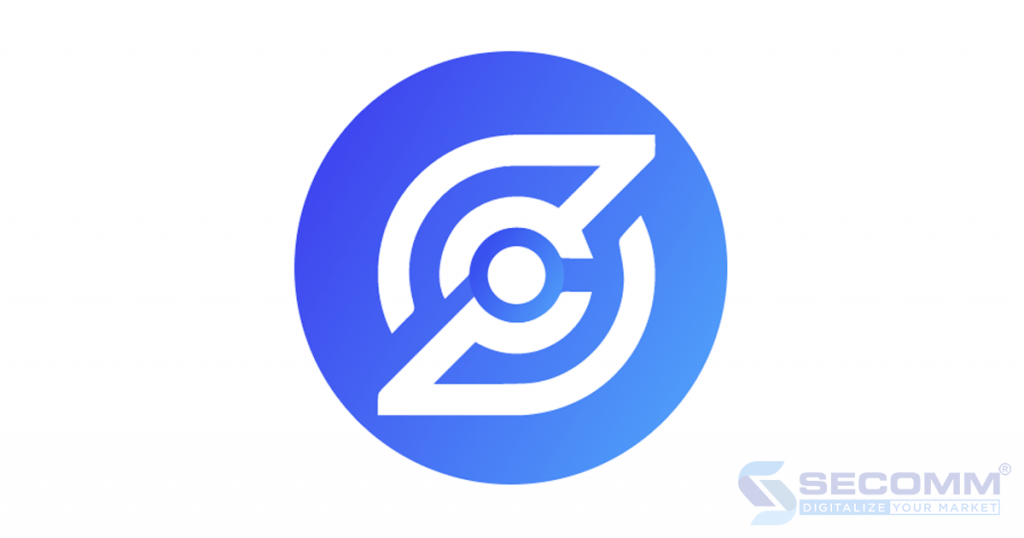
Ziel Commerce provides a repository of themes specifically for the grocery industry, allowing businesses to customize according to their needs, helping to both reflect the characteristics of the industry and position the brand image.
Remarkably, the interface for administrators is also invested by the founders to make it most accessible for businesses to use. But currently, Ziel Commerce is not popular in the Vietnamese market, so there is no Vietnamese version for businesses.
As a platform designed specifically for the eGrocery industry, Ziel Commerce can meet all the most specialized needs of businesses, including fundamental to advanced functionality systems and existing industry-specific solutions.
Ziel Commerce has a significant drawback in integrating the website system. In addition, this platform only supports add-ons available in its ecosystem, so businesses will not be able to link with the ERP, POS, CRM, BI, etc., systems in use. Therefore, when using Ziel Commerce, companies need to transfer all existing data to the server of this platform.
Although it does not own the source code, Ziel Commerce is still a highly appreciated platform for its scalability compared to SaaS platforms. Ziel Commerce supports businesses to expand their ecommerce website system from one to many stores/websites, multi-language, multi-currency without many obstacles. However, in the long run, Ziel Commerce cannot support businesses to expand or develop new functions because firms cannot affect the source code; if it affects it, it will cause instability for the commercial website system.
→ Rating: 3/4
Ziel Commerce provides an almost comprehensive online grocery store website building solution for businesses, from website interface and functional system to scalability. However, the implementation cost is relatively high, about $50,000/project in 6 months. Therefore, Ziel Commerce is only popular with retail chains, has high functional demand, and operates mainly abroad. However, when using Ziel Commerce, businesses should consider adding the platform’s integration, limiting instability in the operation when 3rd party systems are not compatible with the platform.
Shopify is a SaaS ecommerce platform favored by the international ecommerce business community because of its fast implementation time and reasonable starting cost.
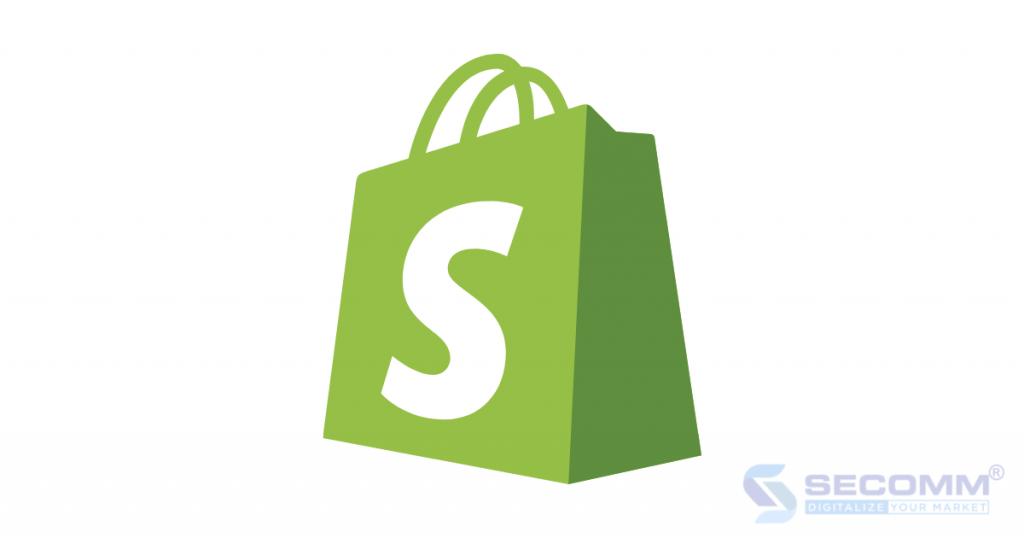
Shopify provides a variety of interfaces, including grocery industry and UI/UX standards, but cannot be edited according to the characteristics of the business.
Shopify’s functional system is relatively complete, meeting the basic needs of businesses. But to use advanced functions, companies have to pay a certain amount of money every month, leading to an increased cost of using the functional system. In addition, even Shopify can barely provide eGrocery industry-specific resolution functions.
Because it is a SaaS platform, businesses cannot affect the source code, and it is not easy to integrate with many 3rd parties. Companies can only integrate utilities provided by Shopify or a platform partner.
Some utilities that companies can integrate with Shopify include:
Similar to the ability to integrate, the scalability on Shopify is not high because businesses cannot influence the source code to edit and upgrade the website. Therefore, online grocery businesses can only use Shopify for the first time.
→ Rating: 2/4
Shopify is only suitable for businesses new to the ecommerce market, startups, or SMEs (small and medium enterprises) because of the reasonable development cost and time to deploy an online grocery store business website.
Founded in 2014, Haravan is an ecommerce platform based on Shopify. Currently, Haravan is a popular platform in the Vietnamese market with more than 50,000 business people and trusted brands.
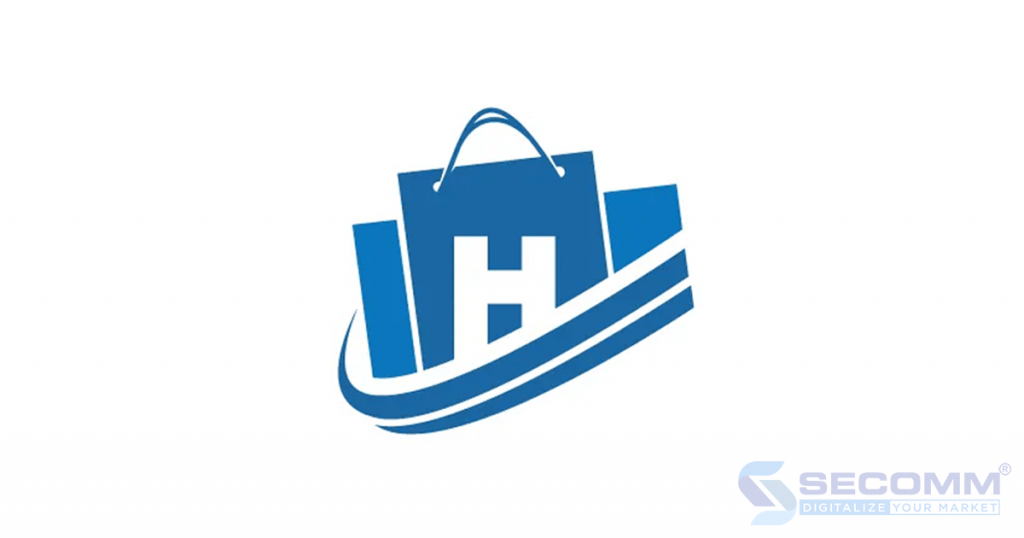
Haravan has many standard UI/UX interfaces suitable for the grocery industry, including free and paid. At the same time, the interface for administrators supports Vietnamese and is easy to use, so businesses do not face many difficulties when using it.
Haravan provides many utilities – functions for online grocery stores in Vietnam.
In addition, similar to Shopify, to use more advanced functions, businesses have to pay a monthly application fee of about 100,000 VND/month/app.
However, businesses can’t find parts that deal with the grocery’s specifics in Haravan’s app store and can’t develop in terms of specific functions. Enterprises can only use the functions included in the package and app store.
For integration capabilities, Haravan can integrate with Haravan’s partners such as transportation (Economic Delivery, Fast Delivery, Ahamove, GrabExpress, etc.), payment (Ngan Luong, VNPAY, Napas, PayPal, etc.), etc.).
It is difficult for businesses to integrate for 3rd party utilities outside Haravan’s ecosystem on their ecommerce website.
As for the extension of the ecommerce website system, Haravan can only support the multi-language – currency but cannot expand from one to many websites/stores. It is challenging to manage all the data on a foundation.
As the business gradually grows and expands, Haravan will no longer be functional enough to maintain an online grocery store business. As a result, companies are forced to switch to more specialized platforms such as Magento, WooCommerce, and OpenCart. But, of course, switching platforms will create many other problems such as costs, time, personnel, etc.
→ Rating: 2/4
Similar to Shopify, Haravan is only suitable for businesses new to the ecommerce market, startups, and SMEs. But Shopify can support online grocery business globally, and Haravan only stops at the Vietnamese market.
WooCommerce is an open-source platform in the form of a WordPress plugin, allowing businesses to use it completely free.
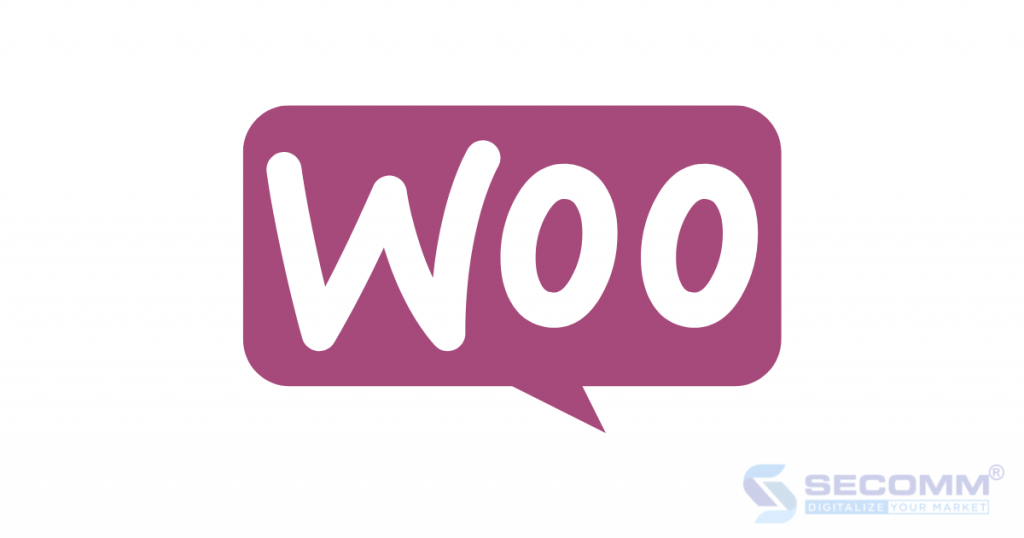
WooCommerce and the community provide businesses with various themes designed for the grocery industry. At the same time, this platform also allows influencing the source code to customize according to needs, helping businesses quickly convey brand messages and images.
Since WooCommerce is a WordPress plugin, the admin will continue to manage the website on the WordPress interface itself. This makes it easy for businesses using WordPress to adapt, use, and navigate on the WooCommerce dashboard.
WooCommerce supports a variety of features, from basic to advanced. However, this platform has some limitations on features specific to the grocery industry because interfering with developing these functions will easily cause instability for the website system.
Thanks to the advantages of the open source platform, WooCommerce has flexible customization capabilities and supports integration with many 3rd party utilities.
In payment, businesses can use amount plugins such as Stripe, PayPal, Apple Pay, and Square to their ecommerce website system with high security and safety. In addition, companies can integrate with many shipping providers such as Fedex, Ups, USPS, and DHL Express. The WooCommerce platform also allows businesses to integrate with management software such as Odoo, Square POS, WP ERP, and Marketing software such as Google Listings, Google Ads, and Facebook Pixel to support businesses in effective business management. More fruitful.
Contrary to the integration capabilities, the extensibility of WooCommerce is not appreciated. Because the system is easily overloaded with plugin themes, and the number of products does not exceed 2000 SKUs (Stock Keeping Unit). Therefore, businesses wishing to expand their website system need to consider when using this platform in the long run.
→ Rating: 3/4
WooCommerce is the right platform for grocery businesses that use WordPress and are looking to develop an ecommerce system. But when using WooCommerce, companies should consider the limitations of integration, extensibility, and customizability of specific features.
Magento is a popular open source commerce platform in ecommerce, with nearly 200,000 websites in use. Currently, Magento has 2 versions: Magento Open Source (free) and Magento Commerce (paid).
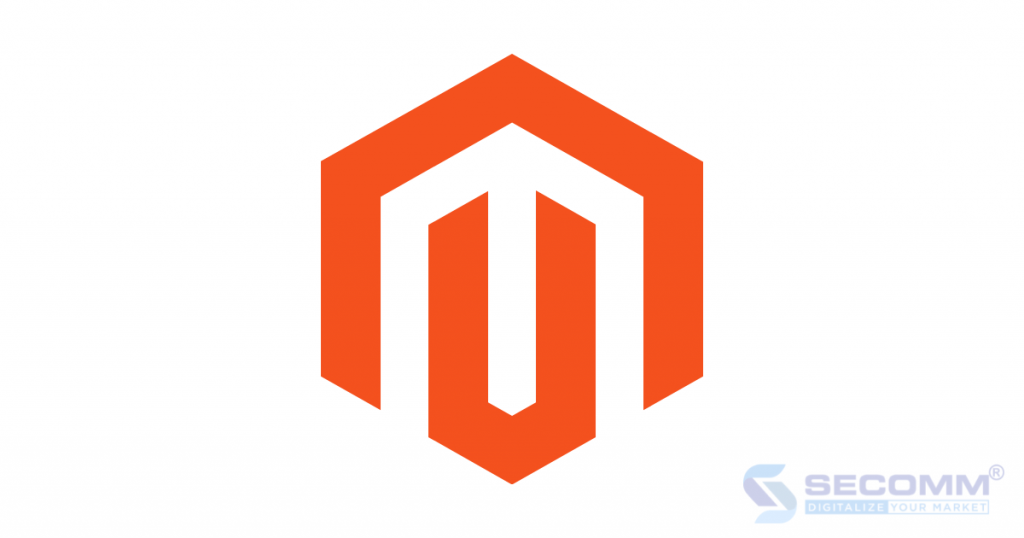
Although Magento does not own a rich theme store like other ecommerce platforms, businesses can look to the developer community, market (Envato), or design their own. Having many options when designing the interface helps Magento websites to have their uniqueness, avoid overlapping the interface with many different websites and bring a higher shopping experience.
Previously, the admin interface on Magento 1 was often considered difficult to use and took a long time to adapt. As a result, Magento publishers developed Magento 2 with a more intuitive and easy-to-navigate dashboard to overcome this problem.
The Magento platform has a highly diverse system of features from basic and advanced to industry-specific to help grocery businesses quickly build and develop a sustainable system.
A basic functional system, including catalog management, product management, customer management, report analysis, etc., helps meet the basic needs of a convenient online grocery store business.
In particular, Magento also has many advanced functions for ecommerce, such as multi-language support, multi-currency, multi-store, PWA, MSI, ElasticSearch, etc. Shopping happens faster.
Magento does not have built-in features only for the grocery industry regarding specific features. Still, businesses can quickly build a system of particular features such as category classification, quick search, and delivery time selection thanks to flexible customization on open source code.
Thanks to the advantages of the open source platform, the Magento website can be easily integrated with any 3rd party utilities, from payment, shipping, and business administration.
Regarding payment, Magento easily connects with today’s popular payment methods such as card payments (domestic cards, VISA, Mastercard), e-wallets (MOMO, Zalopay), and payment gateways (OnePay, VNPay, etc.) PayPal) or COD, which helps to diversify payment methods.
Magento can integrate with shipping providers such as Fast Delivery, Economy Delivery, Viettel Post, and order tracking applications.
Magento can be integrated into back-office management software (ERP, CRM, POS) such as SAP, Salesforce, and Oracle to help operate all resources and processes seamlessly in the enterprise.
In addition, Magento also supports integration with business analysis tools such as Power BI, Tableau, and Looker and analysis and reporting utilities such as Google Analytics, Google Tag Manager, and Facebook Pixels to exploit all data from the system. As a result, Magento plans to improve its business strategy.
Magento allows businesses to expand from one website to many different websites on the same system to meet the needs of business development. In addition, with the available support for language and currency conversion from Magento, businesses can build a grocery ecommerce system with content suitable for a diverse audience of customers around the globe.
In addition, open source customization enables Magento developers to build functional solutions specific to the grocery industry. This advantage makes Magento expand the system of capabilities according to each business size, from small businesses to large-scale corporations.
→ Rating: 4/4
Because Magento possesses many outstanding advantages, from website interface and functional system to the ability to integrate and expand, Magento is suitable for a variety of grocery business models from B2B, B2C to B2B2C, a multiform of enterprise-scale such as startup, SME, enterprise (large corporation). However, the time to deploy ecommerce on Magento is usually long – from 6 months to 1 year, with high construction costs of about 50,000 – 100,000 USD/project. At the same time, businesses also need to have a professional team or cooperate with experienced units to develop an effective grocery ecommerce system. Therefore, Magento is popularly used in the community of large-scale businesses that need many functions to increase user experience.
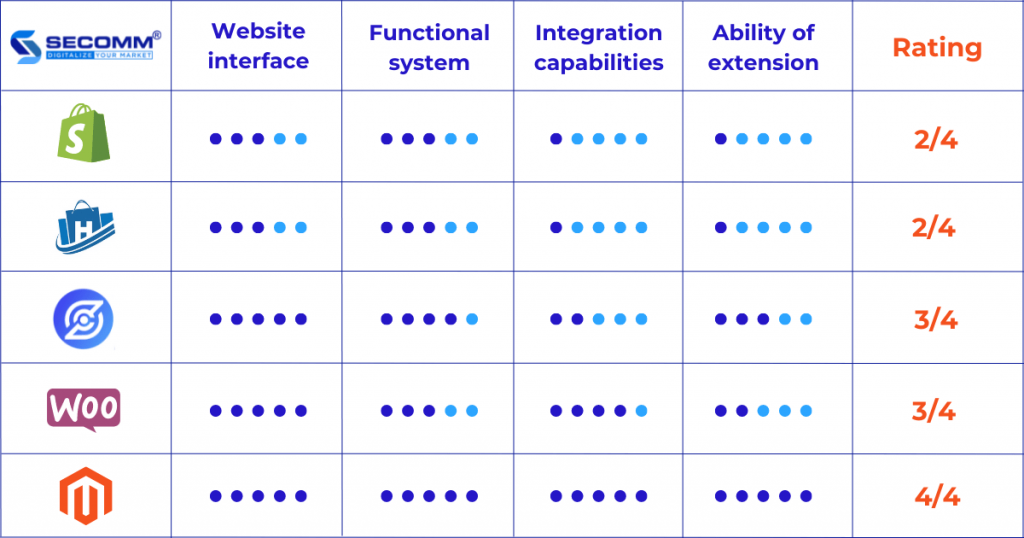
Choosing the right platform is the first and most significant step when building a grocery ecommerce website. Selecting the right ecommerce platform will help businesses save budget and time in building a website while increasing competitive advantage and sustainable growth. On the contrary, choosing the wrong forum will cost businesses a lot of time and budget to deploy and switch platforms. Therefore, companies need to consider the goals and problems in the current model to choose the most suitable platform.
With experience in successfully implementing complex grocery ecommerce systems like An Nam Gourmet, SECOMM understands grocery businesses’ obstacles.
Contact SECOMM now for a free consultation on detailed ecommerce system development solutions!
 2
2
 3,658
3,658
 1
1
 1
1Subscribe to get the latest eBook!
Hotline